
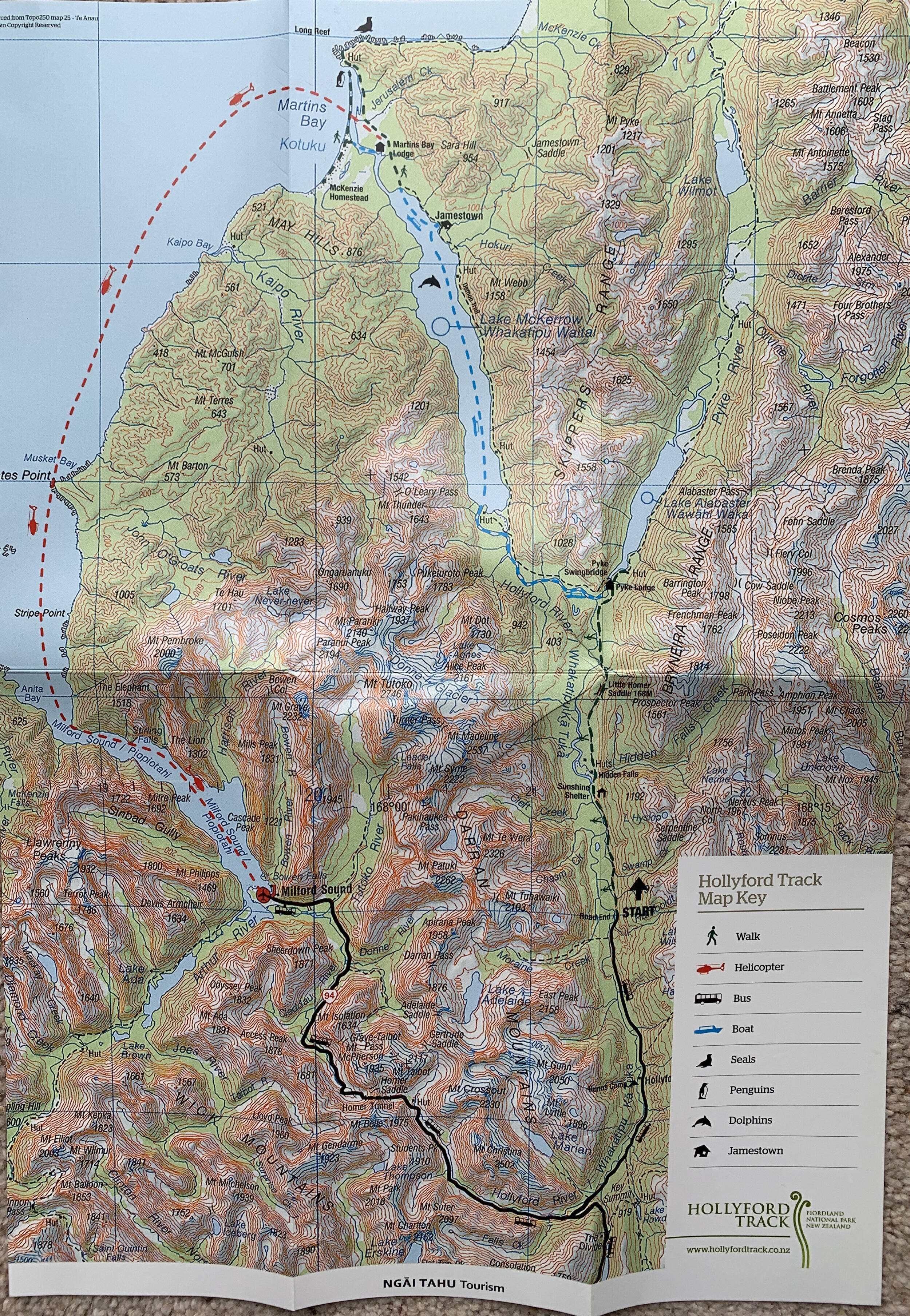
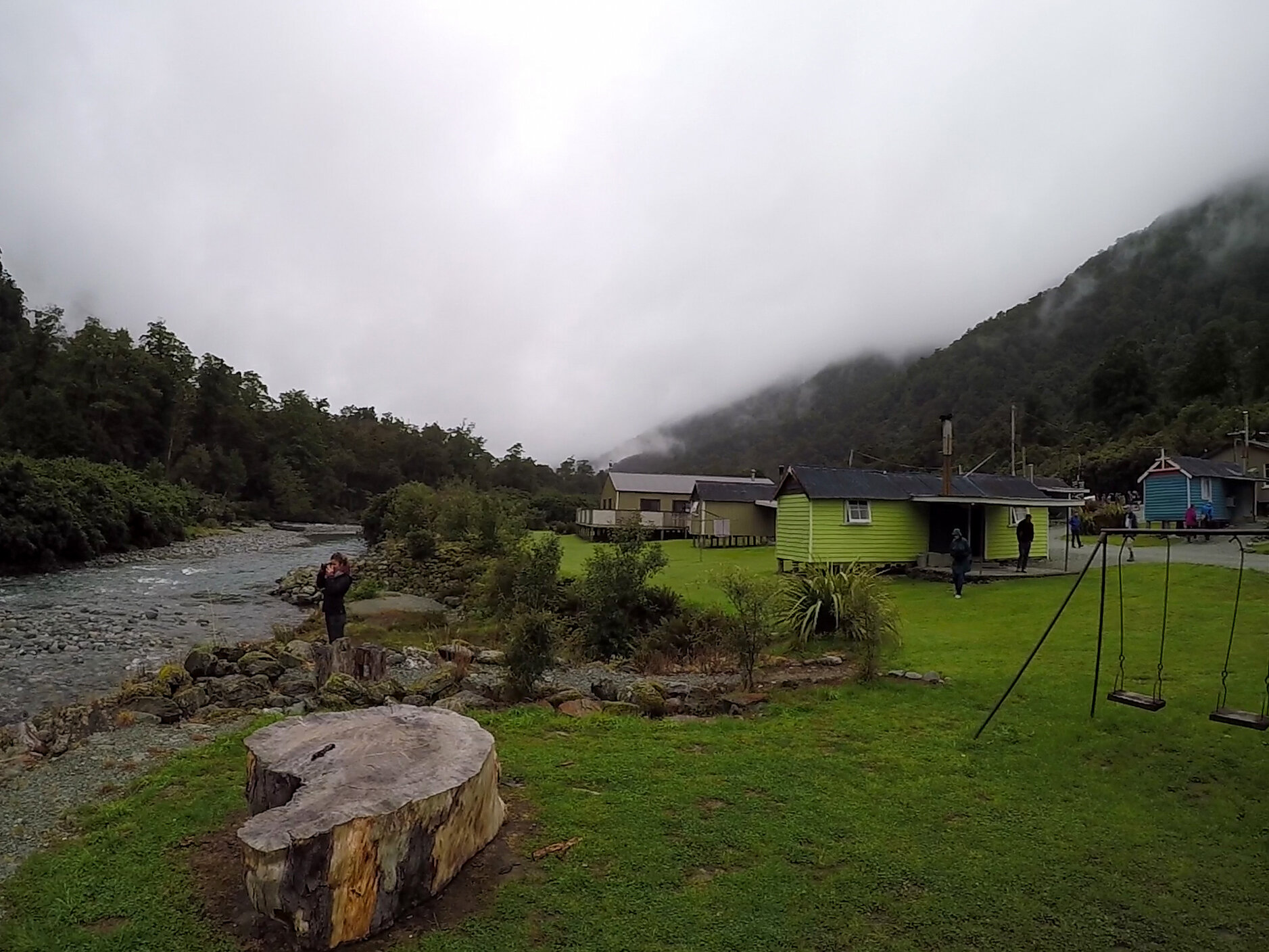
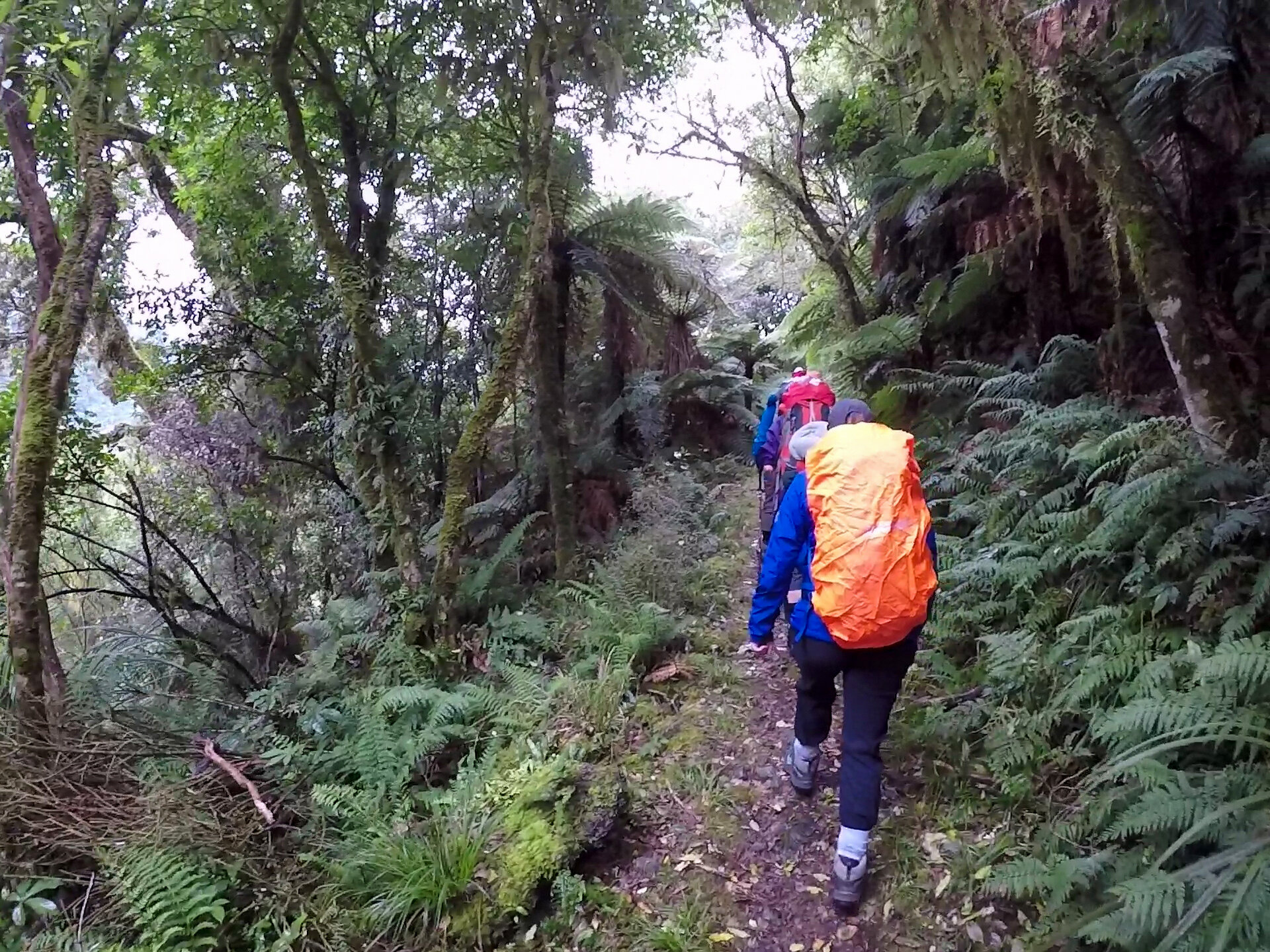
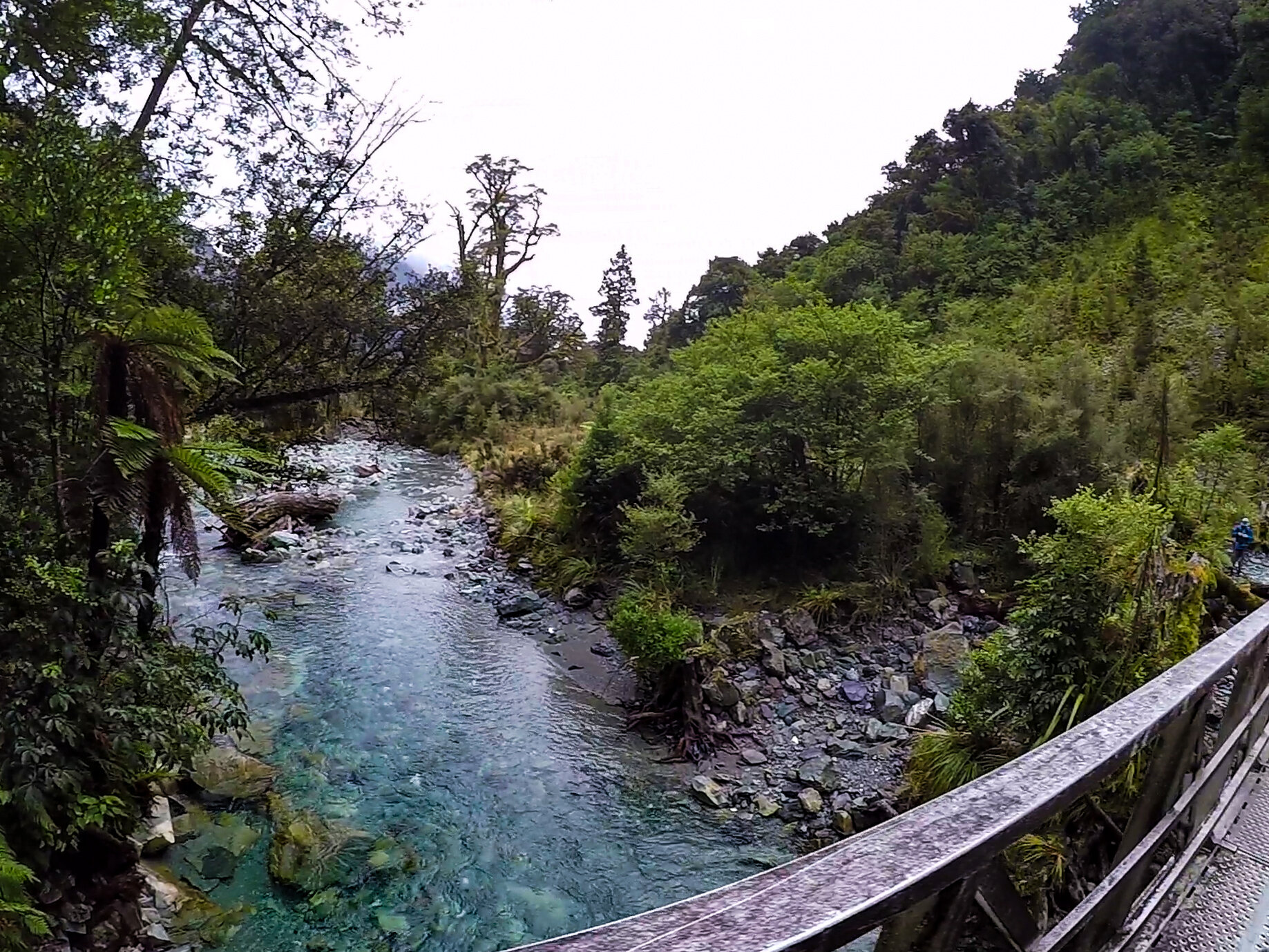
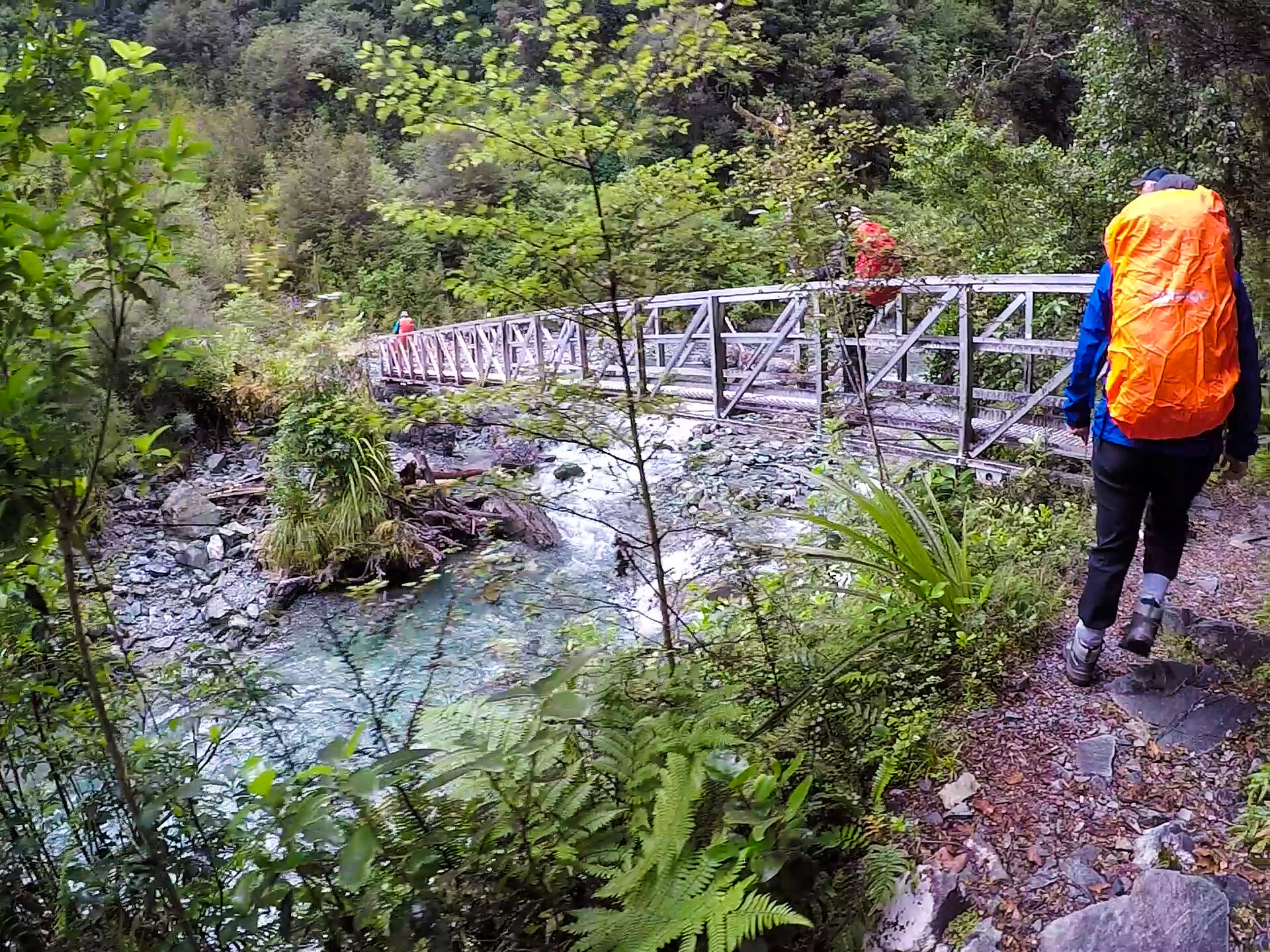
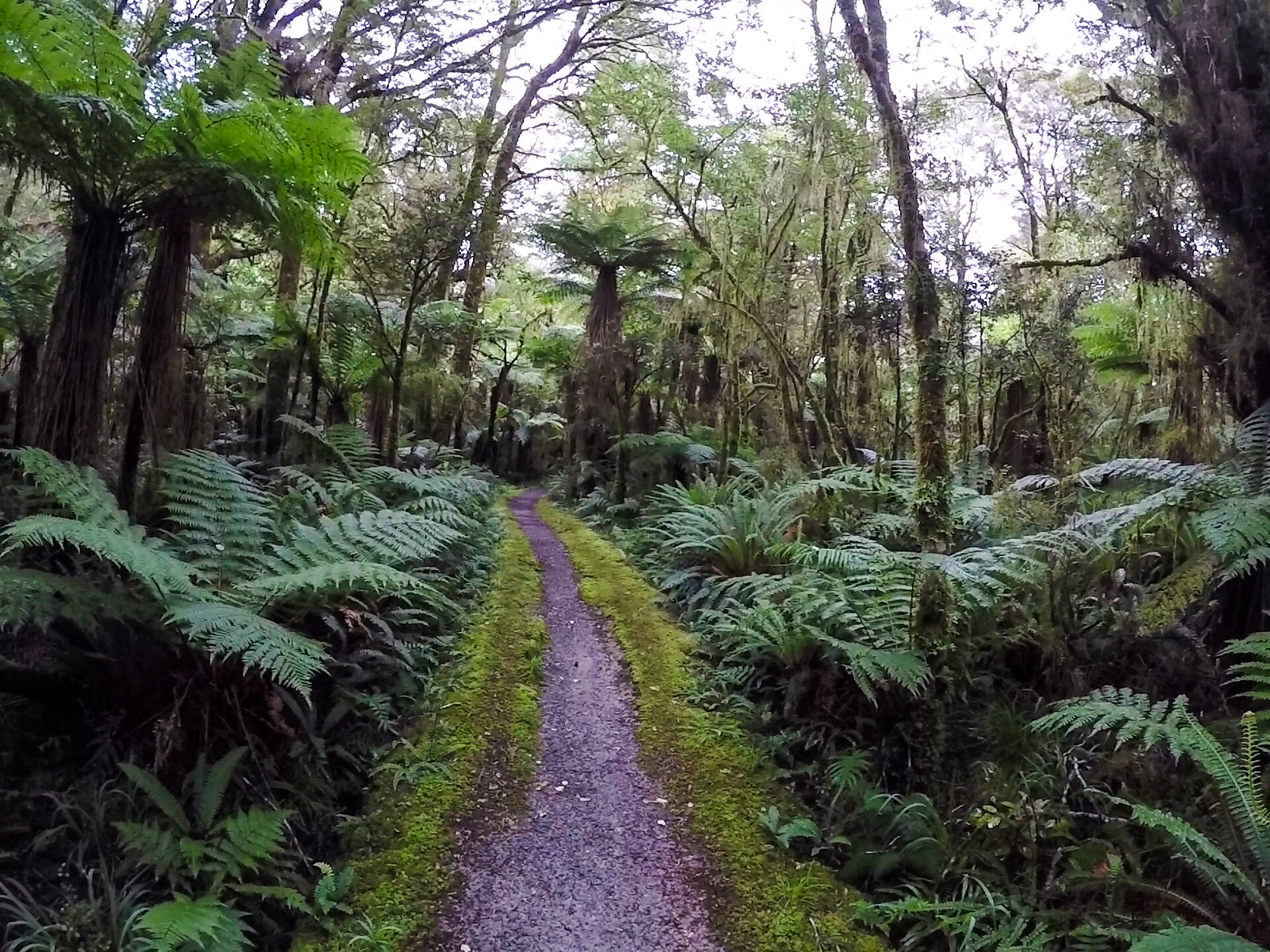
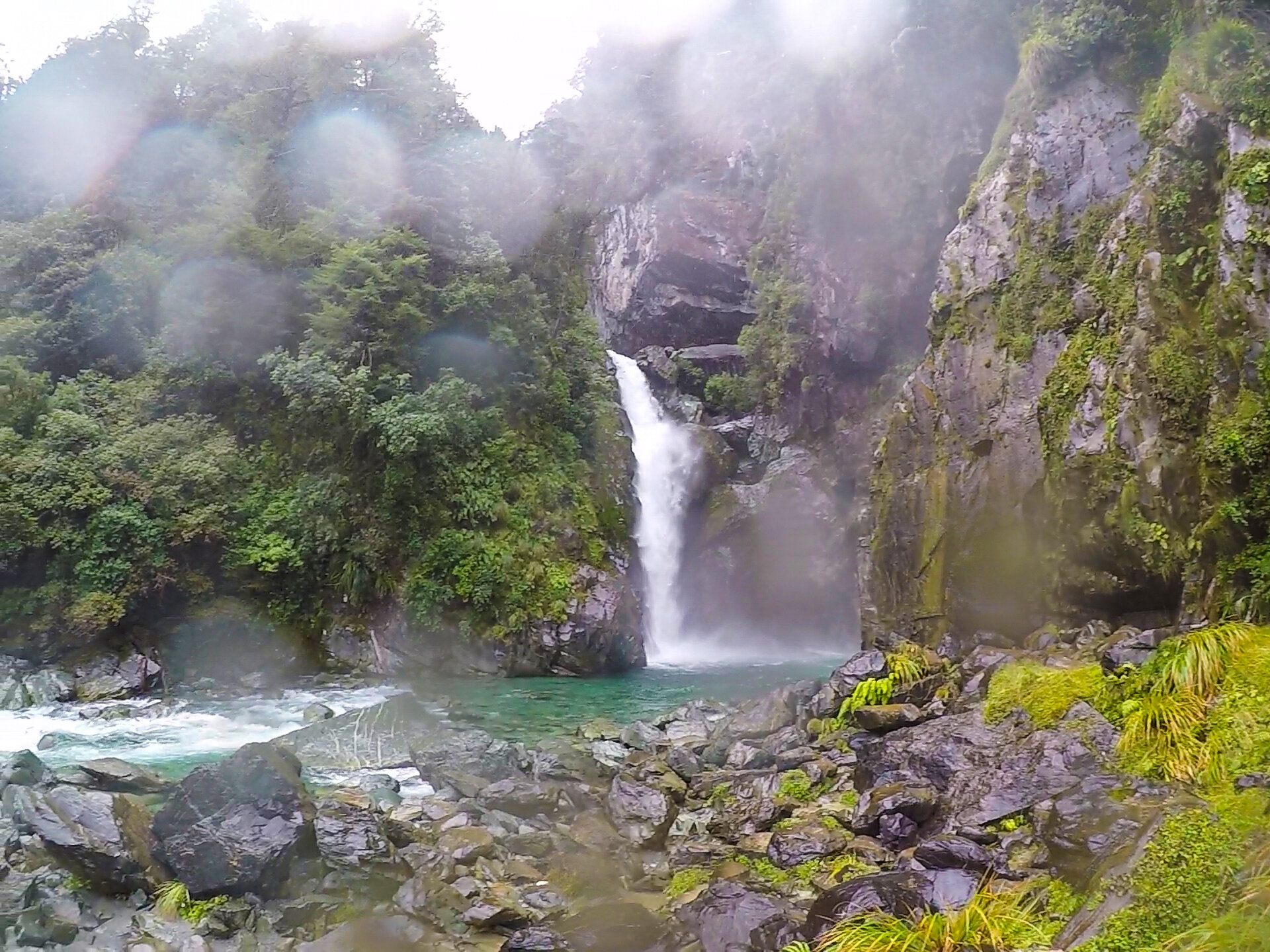
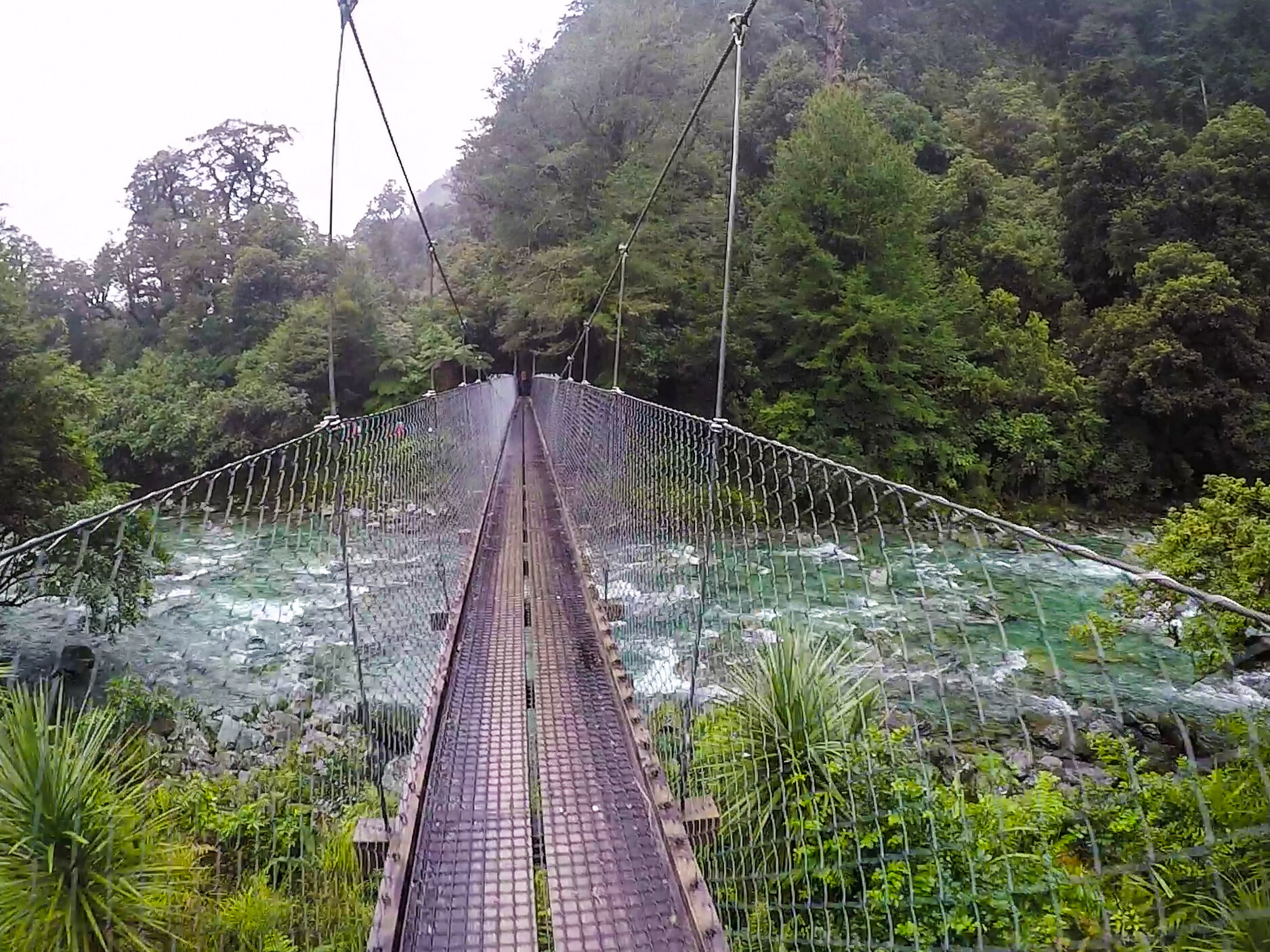
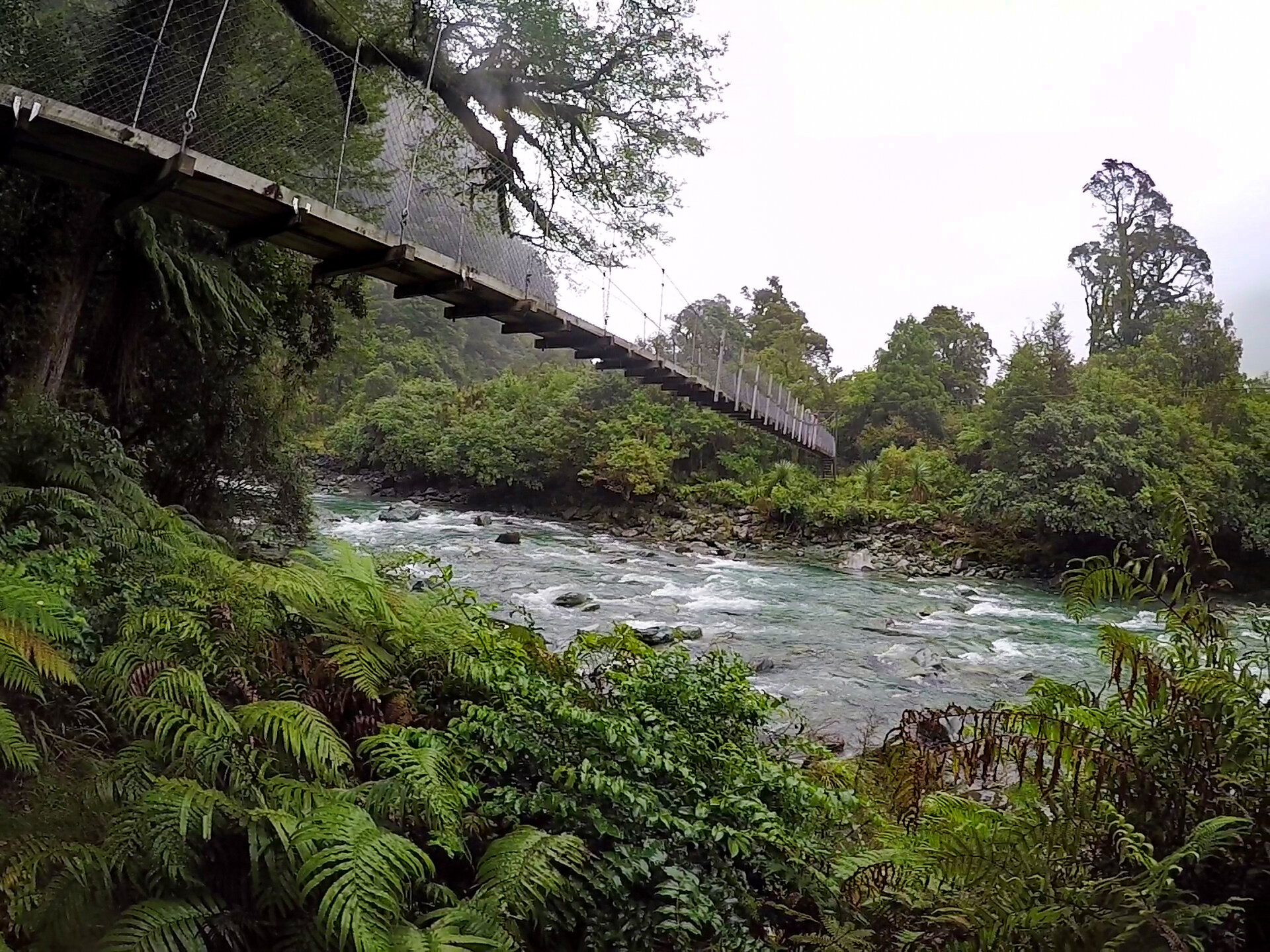
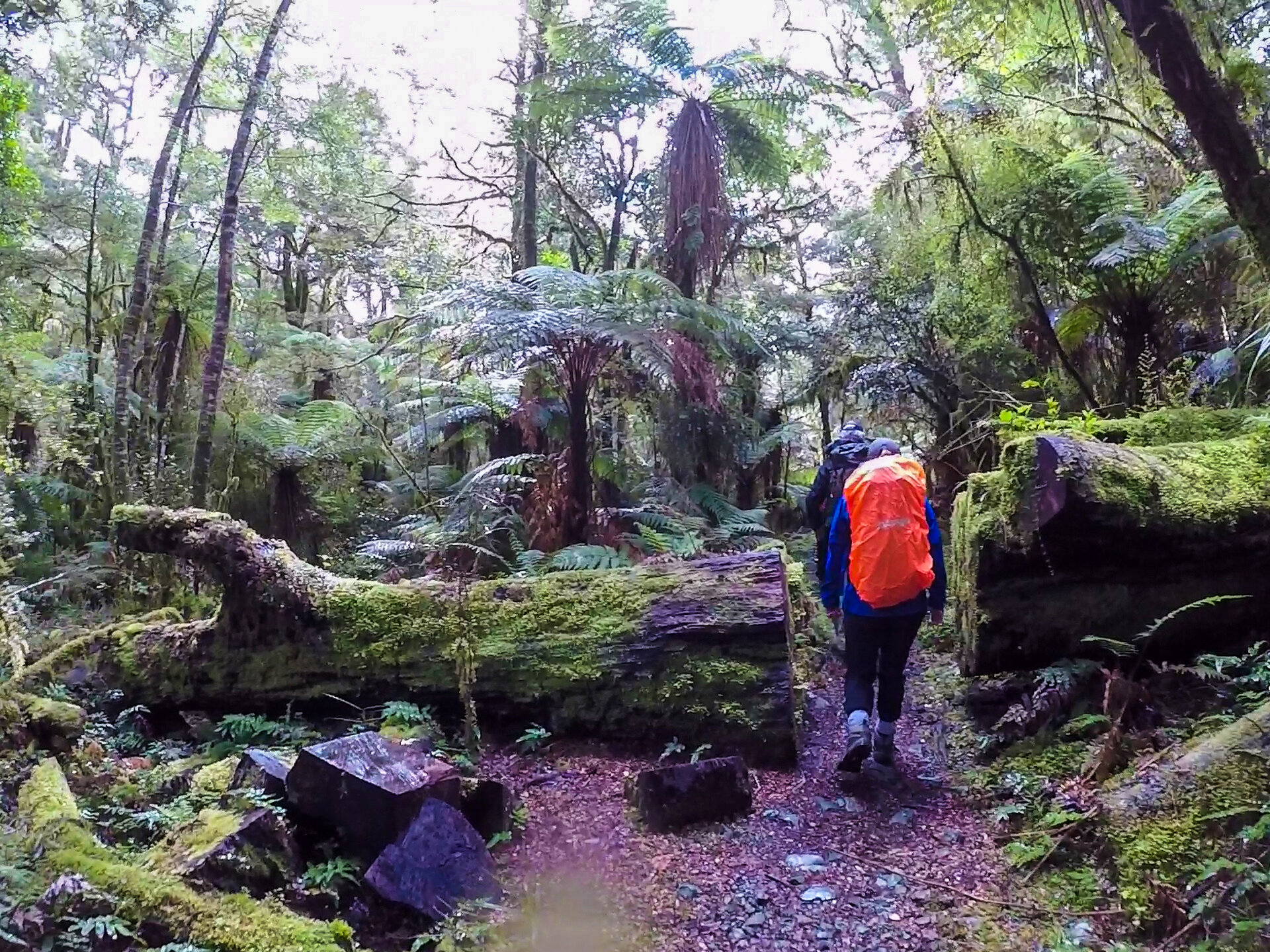
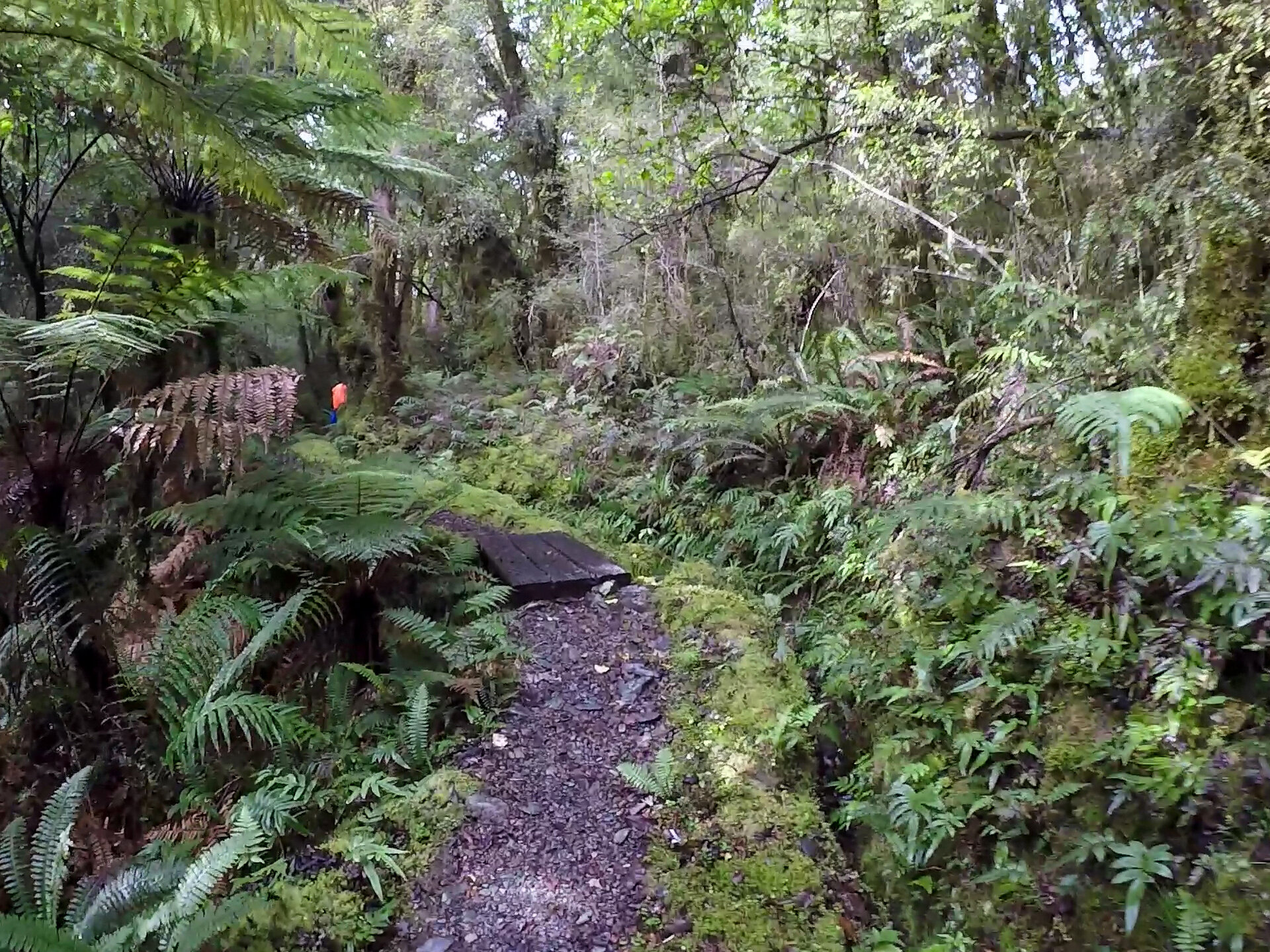
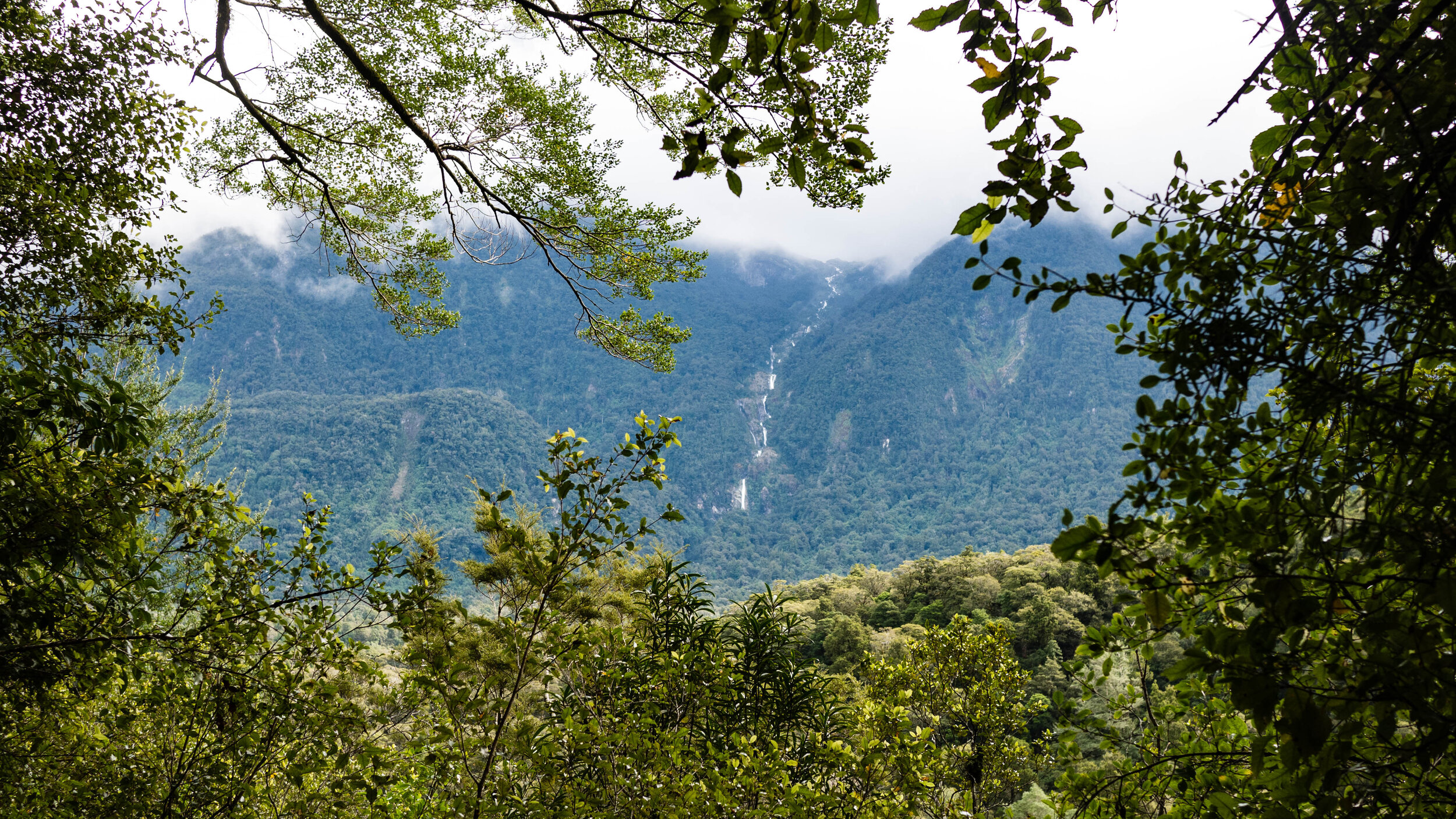
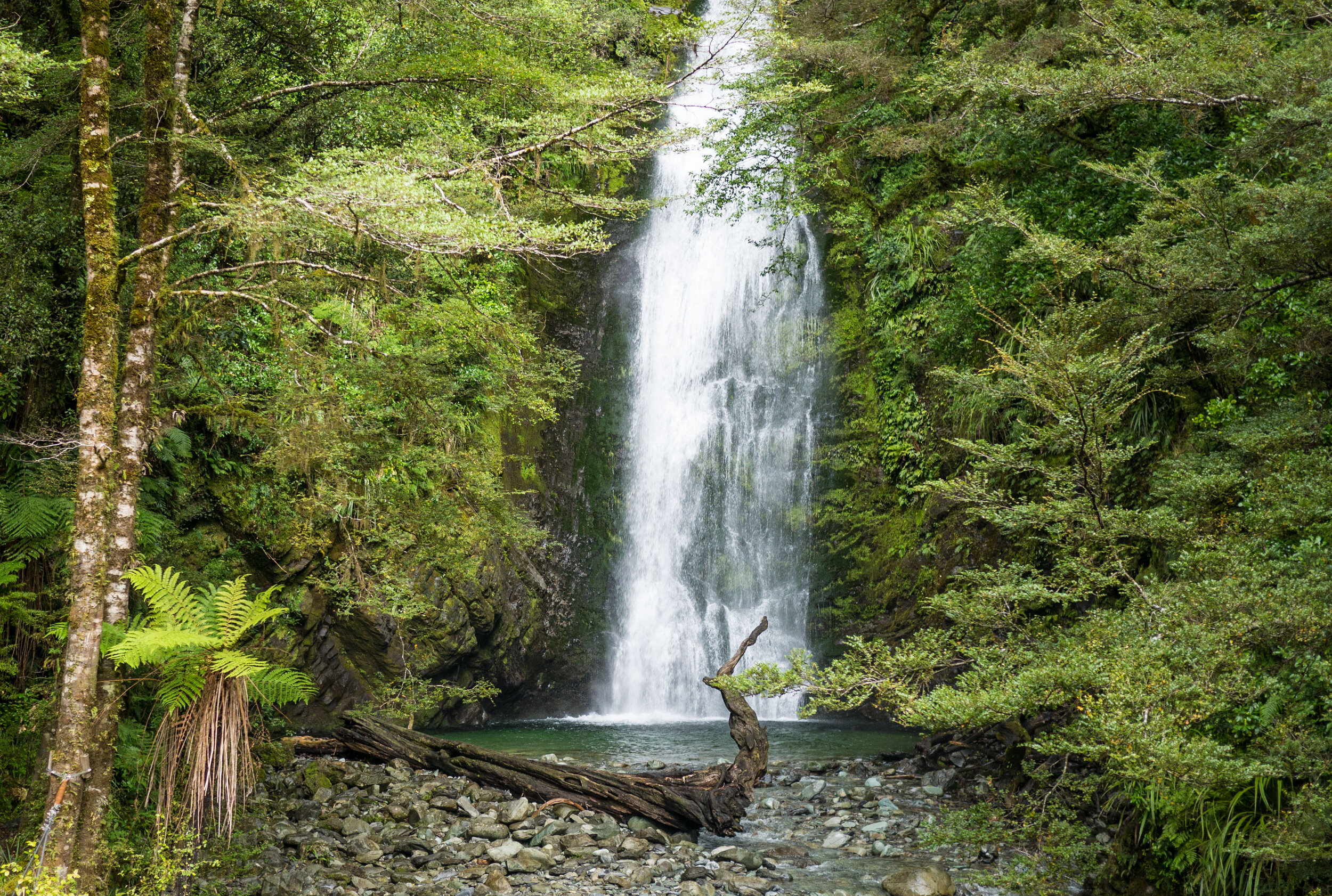
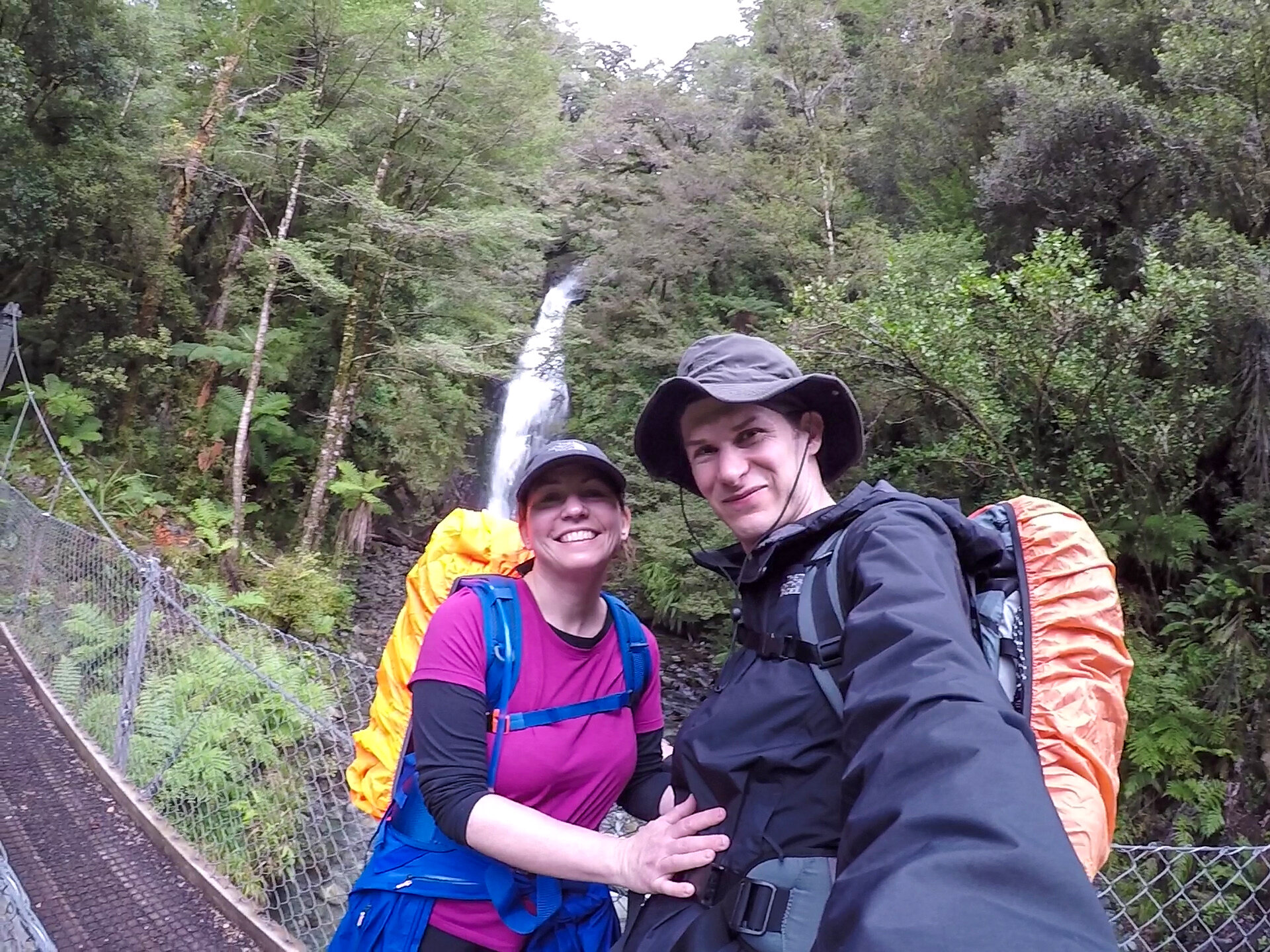
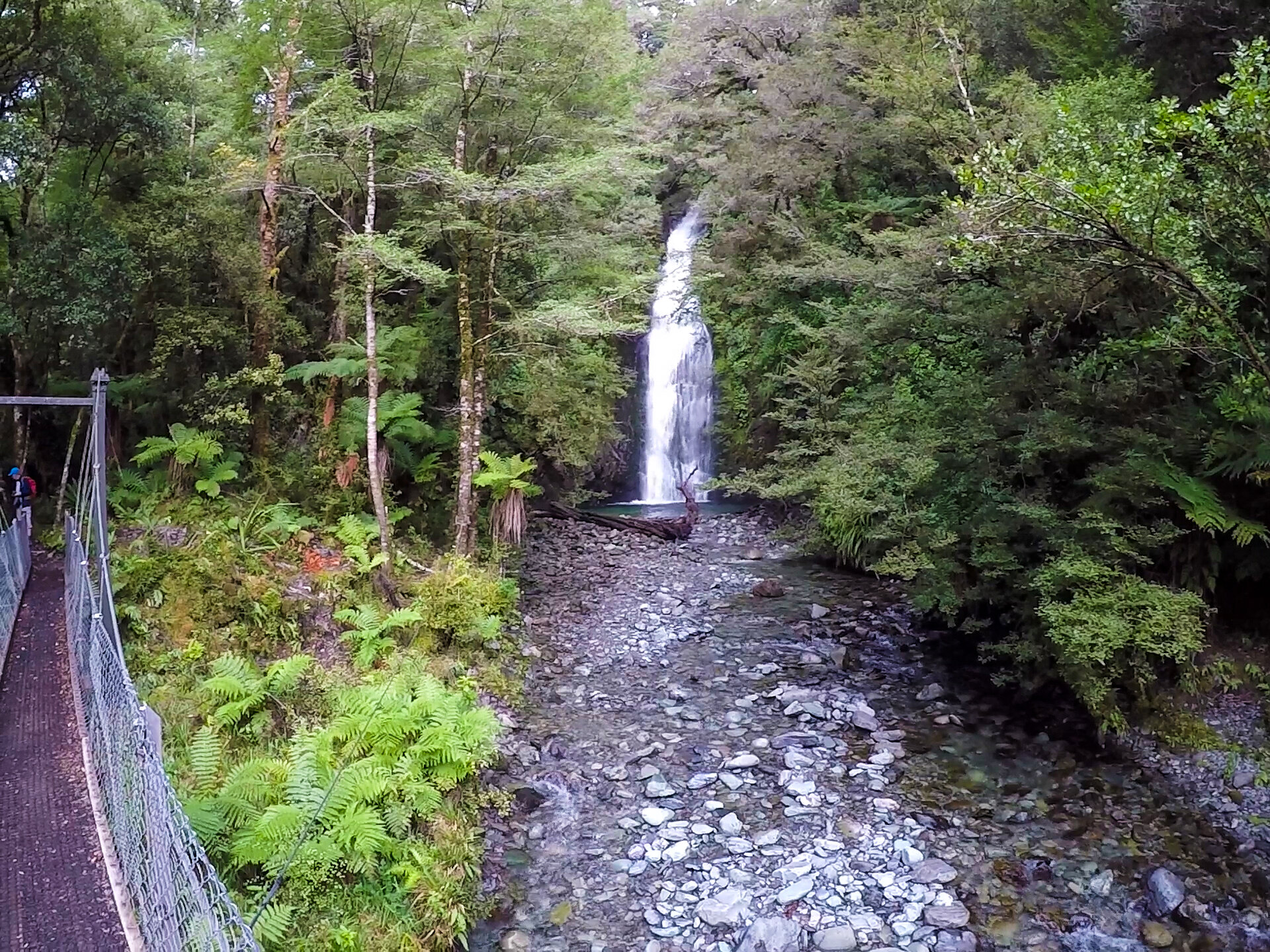
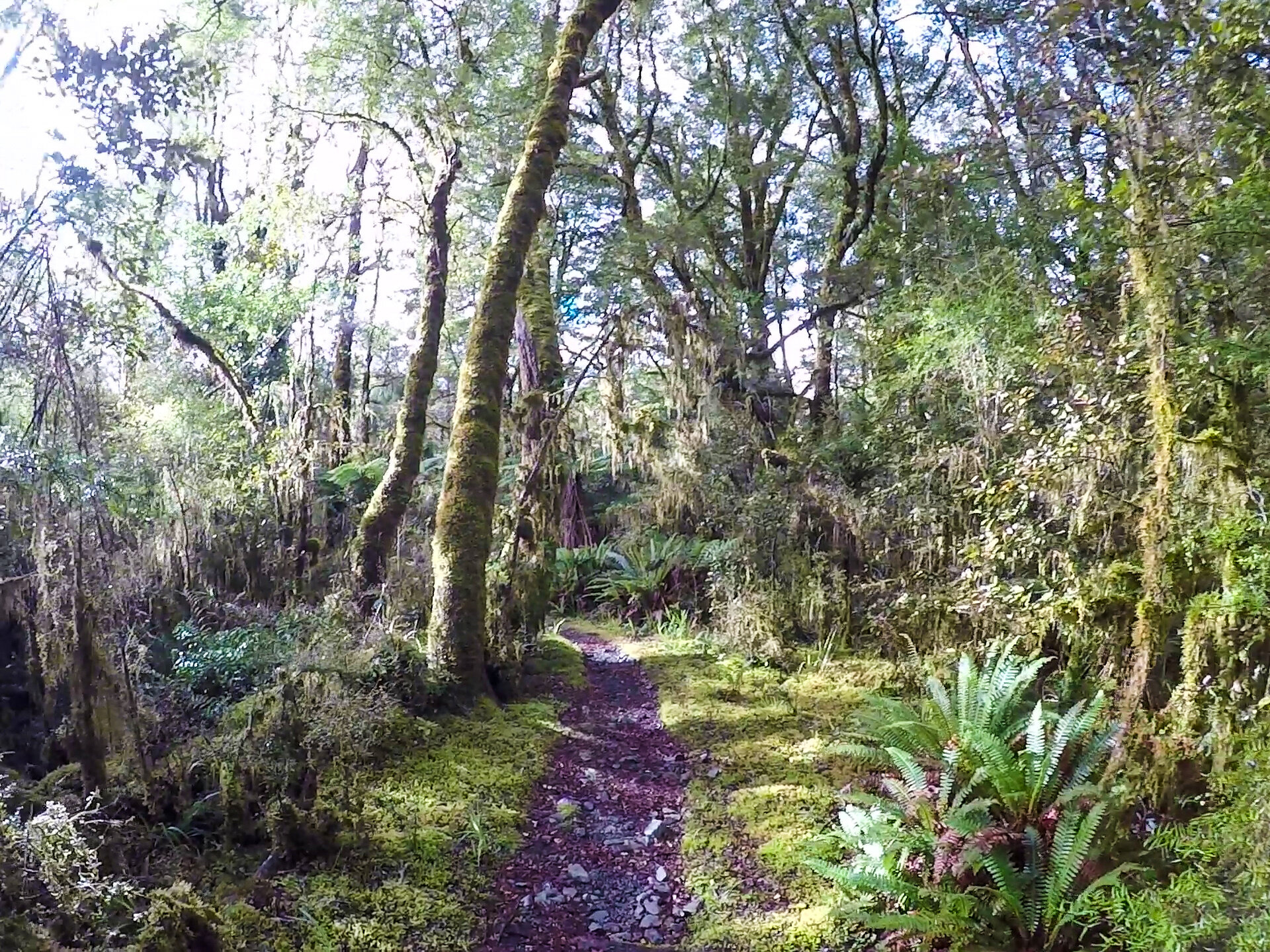
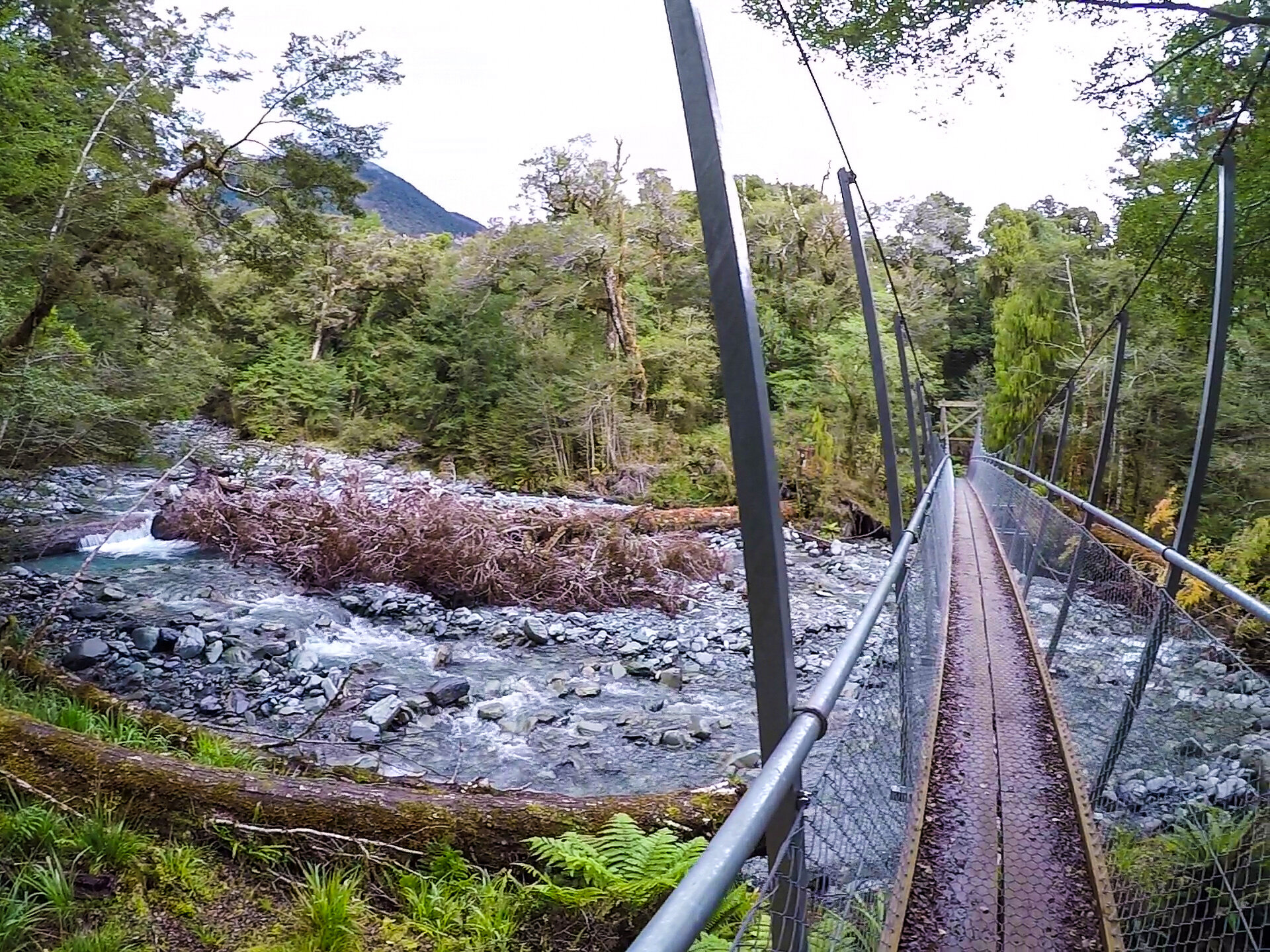
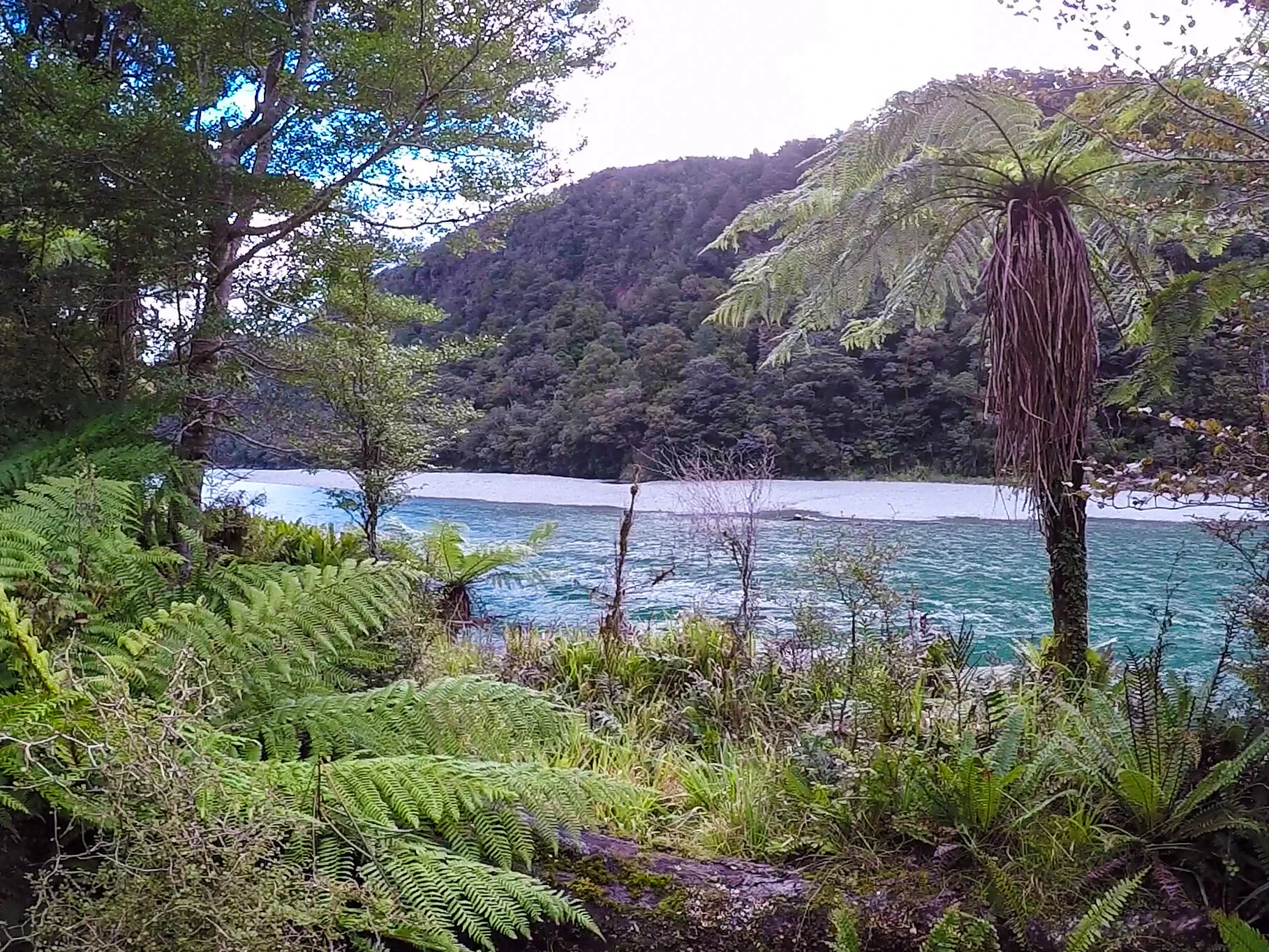
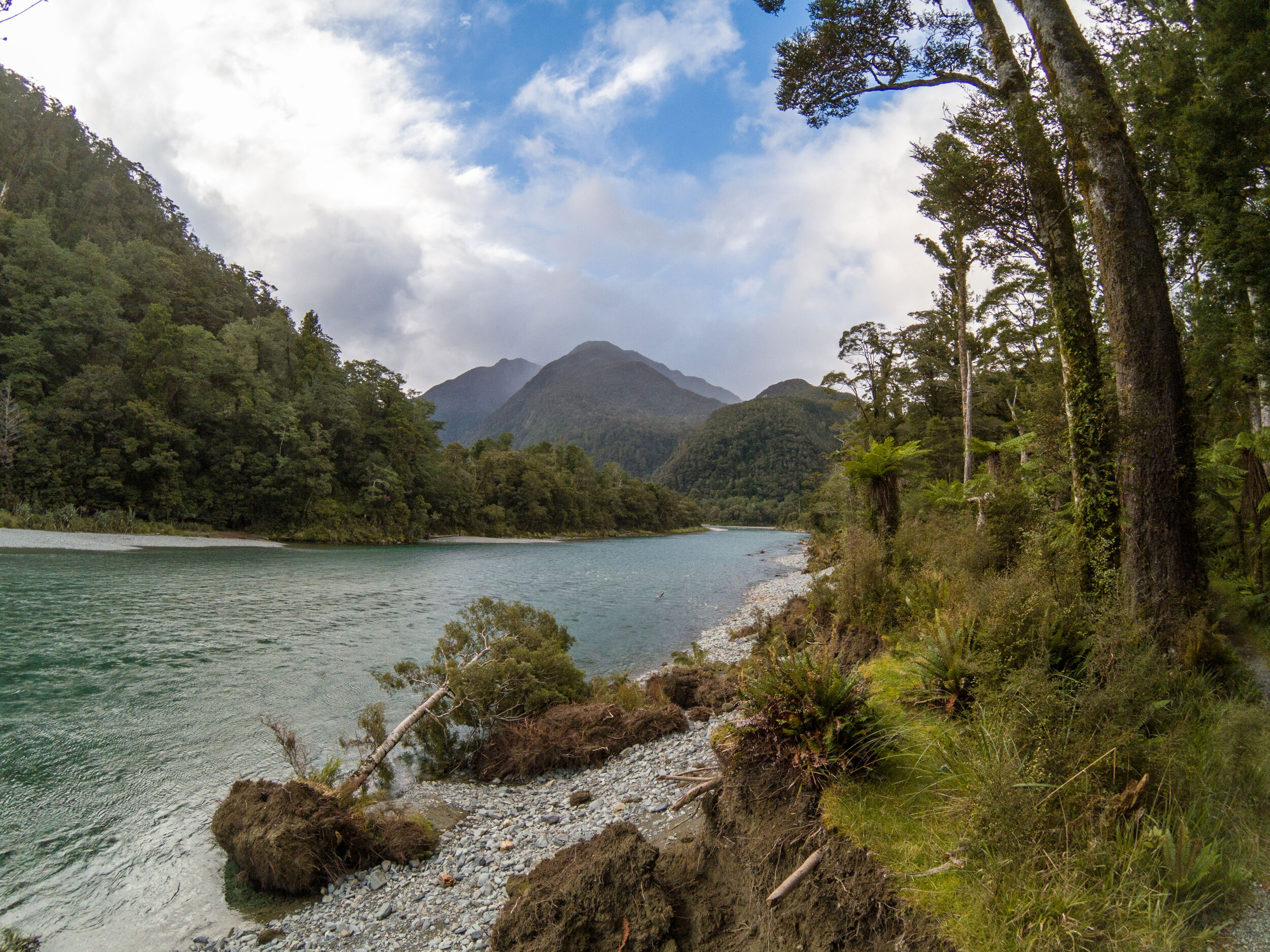
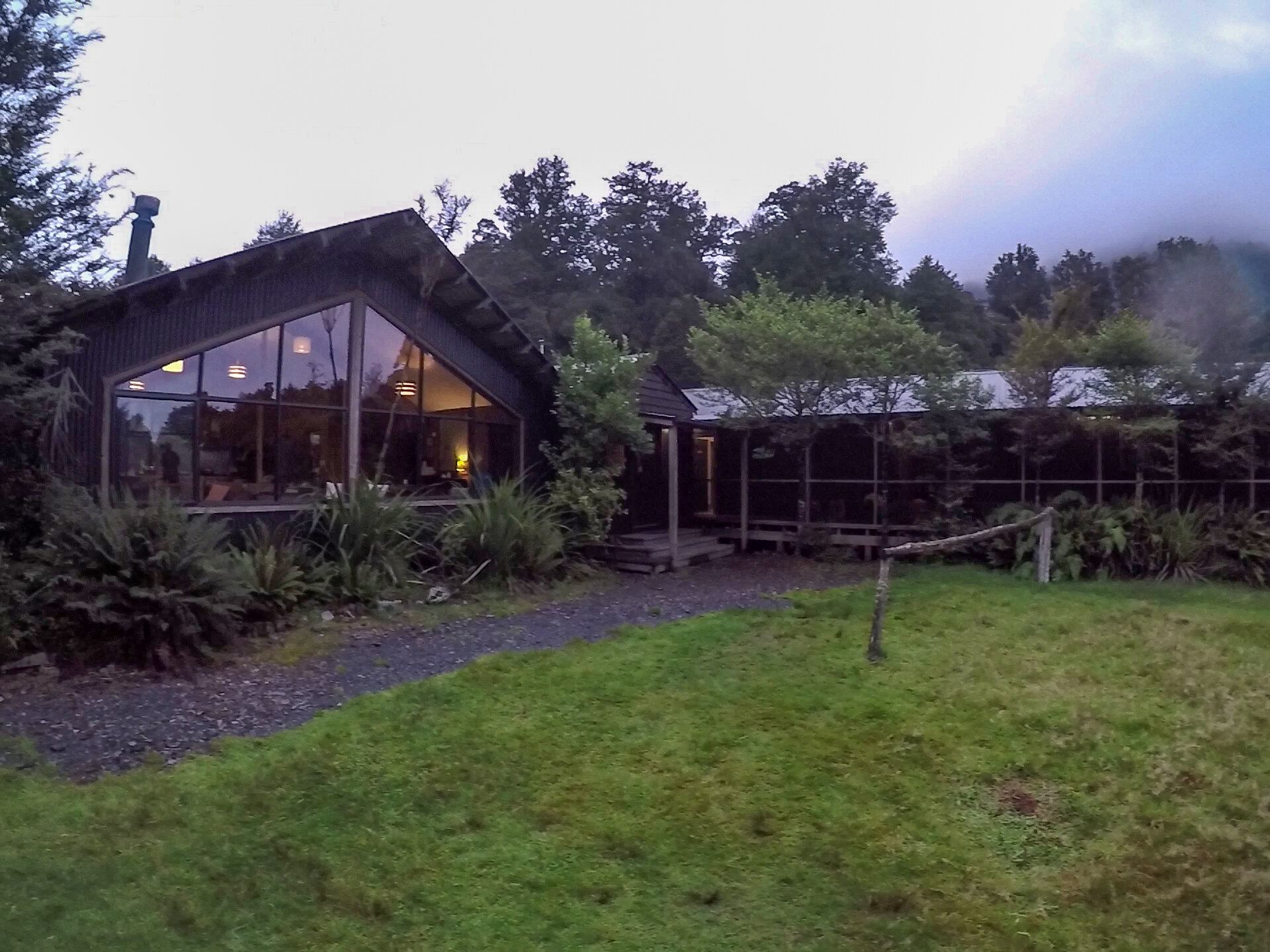
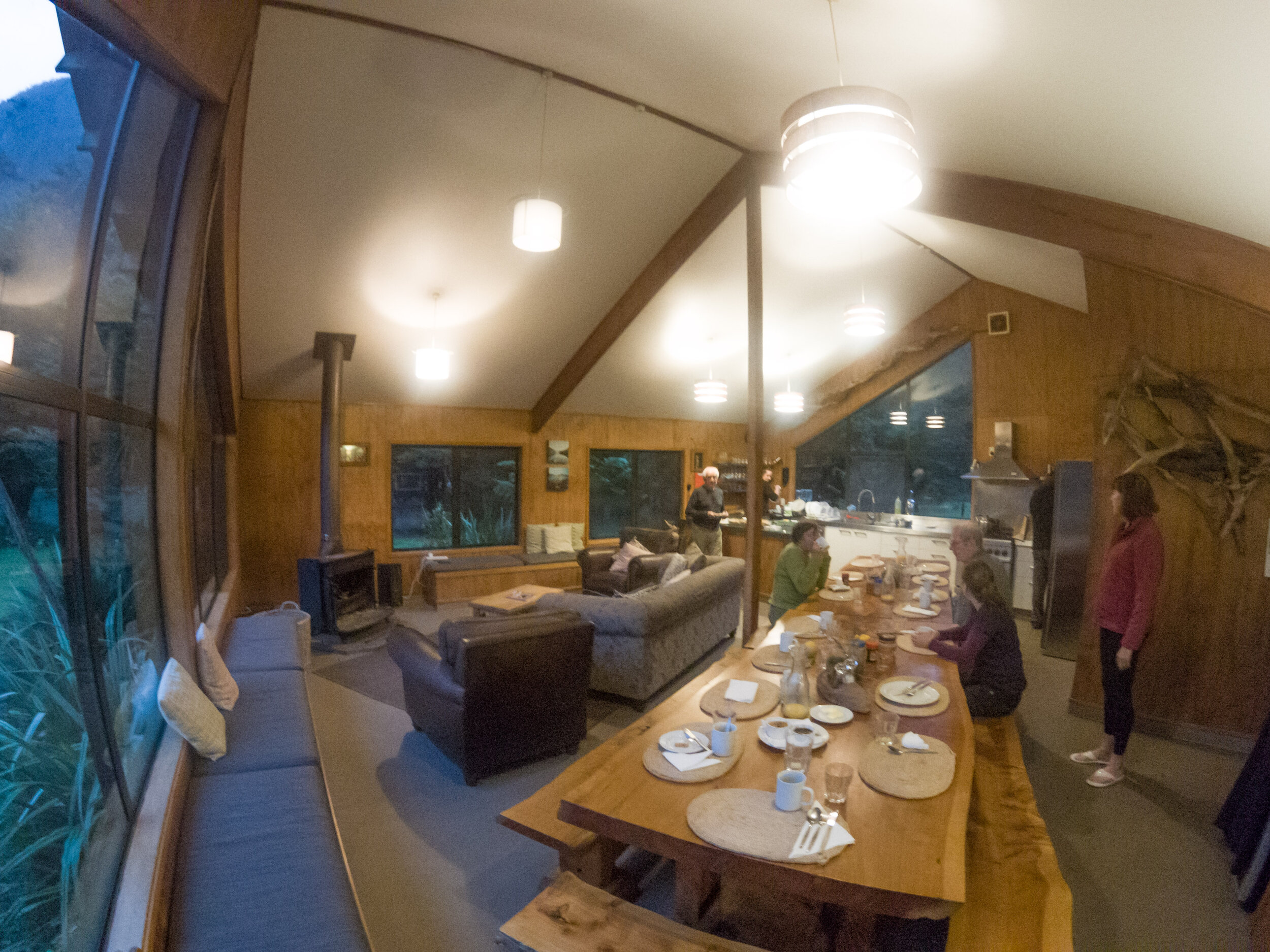


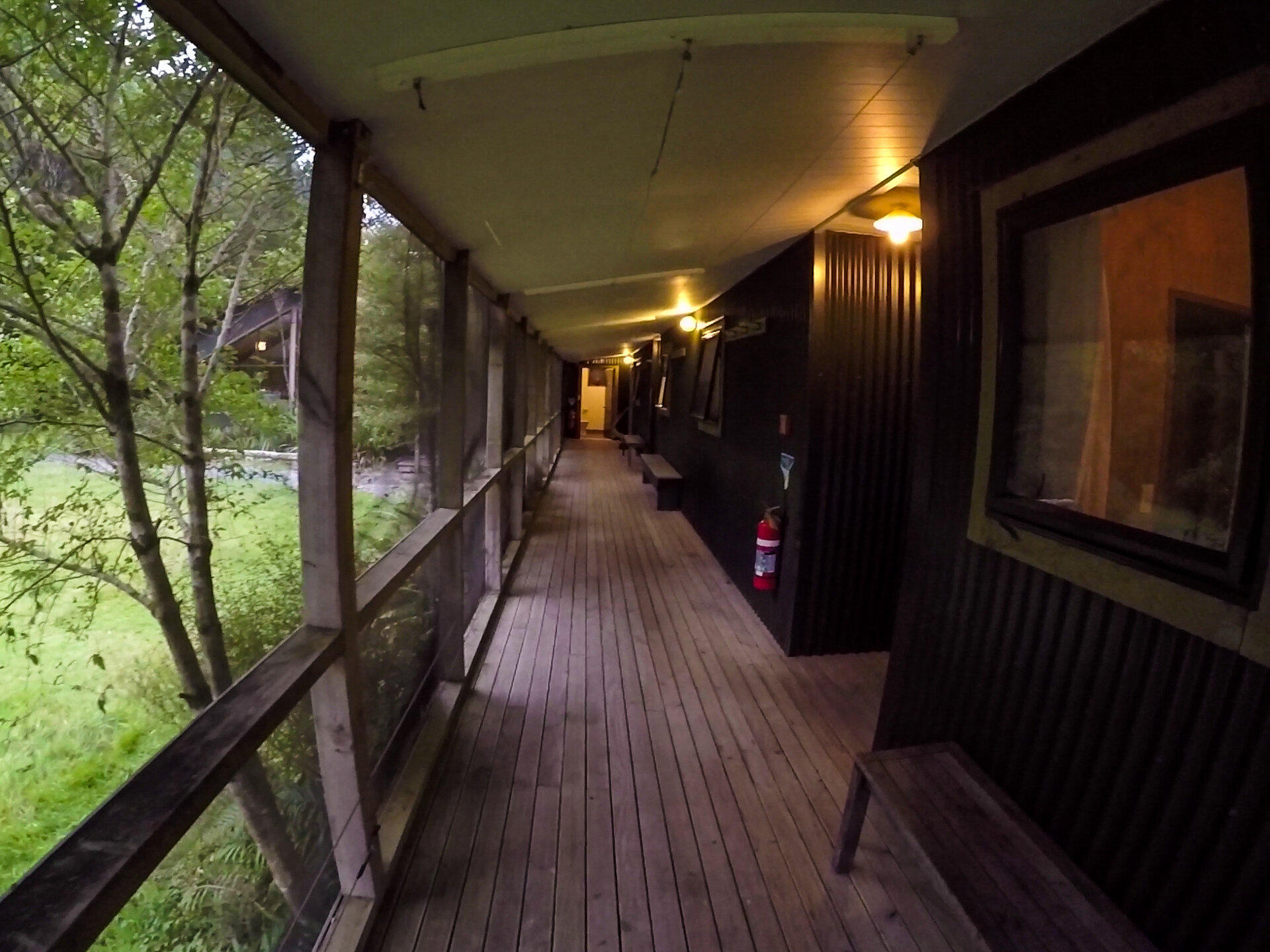
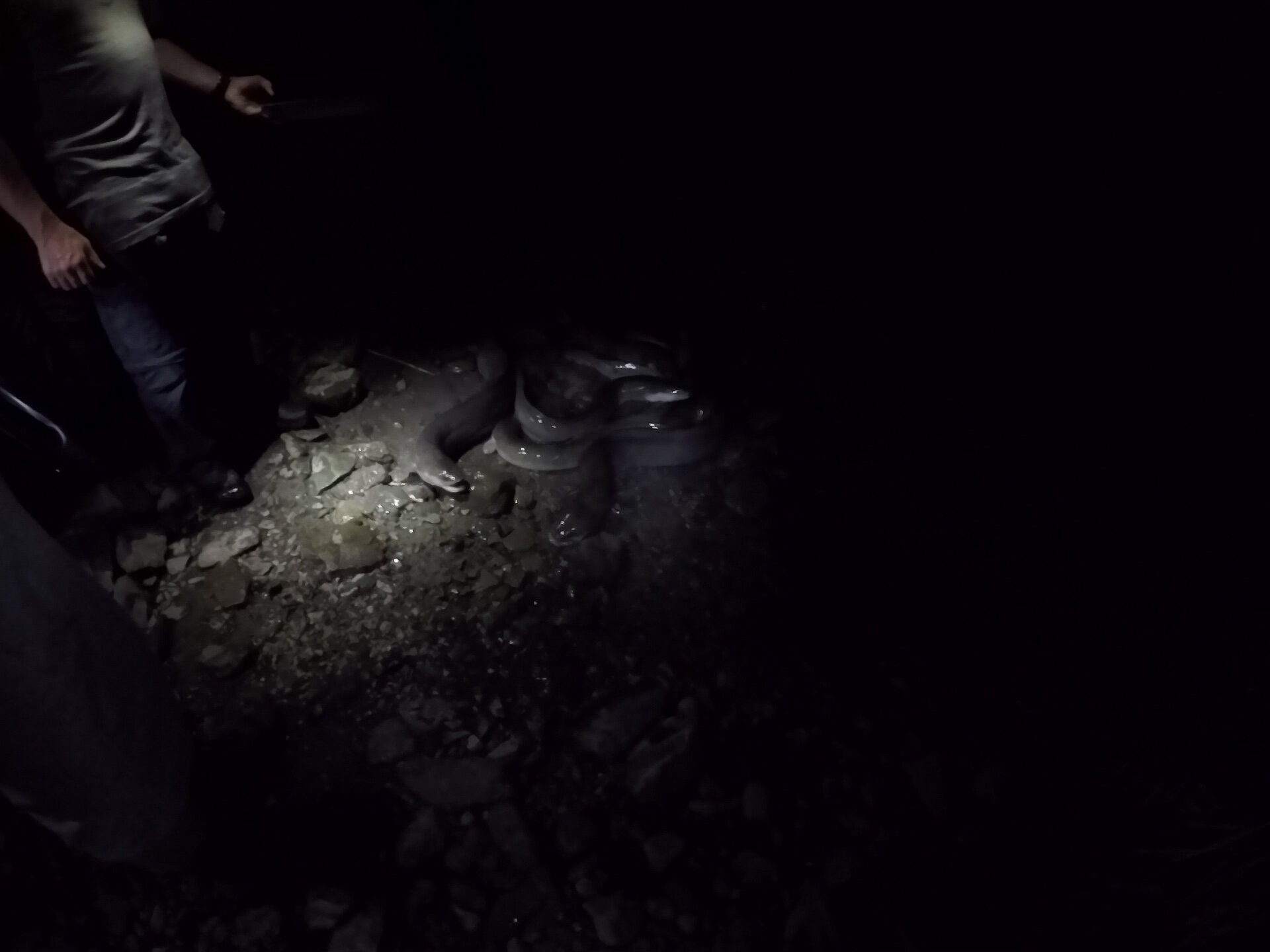
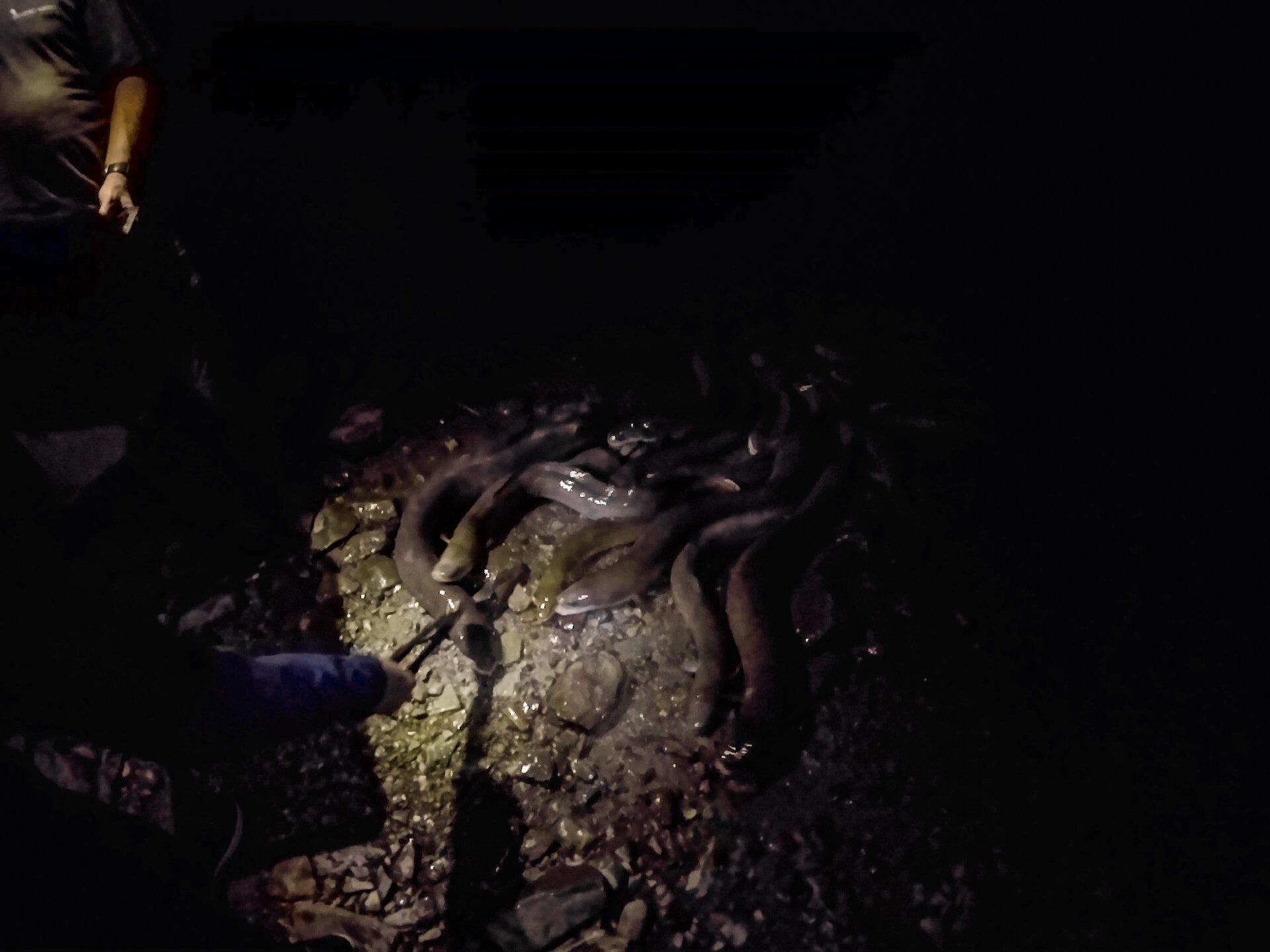

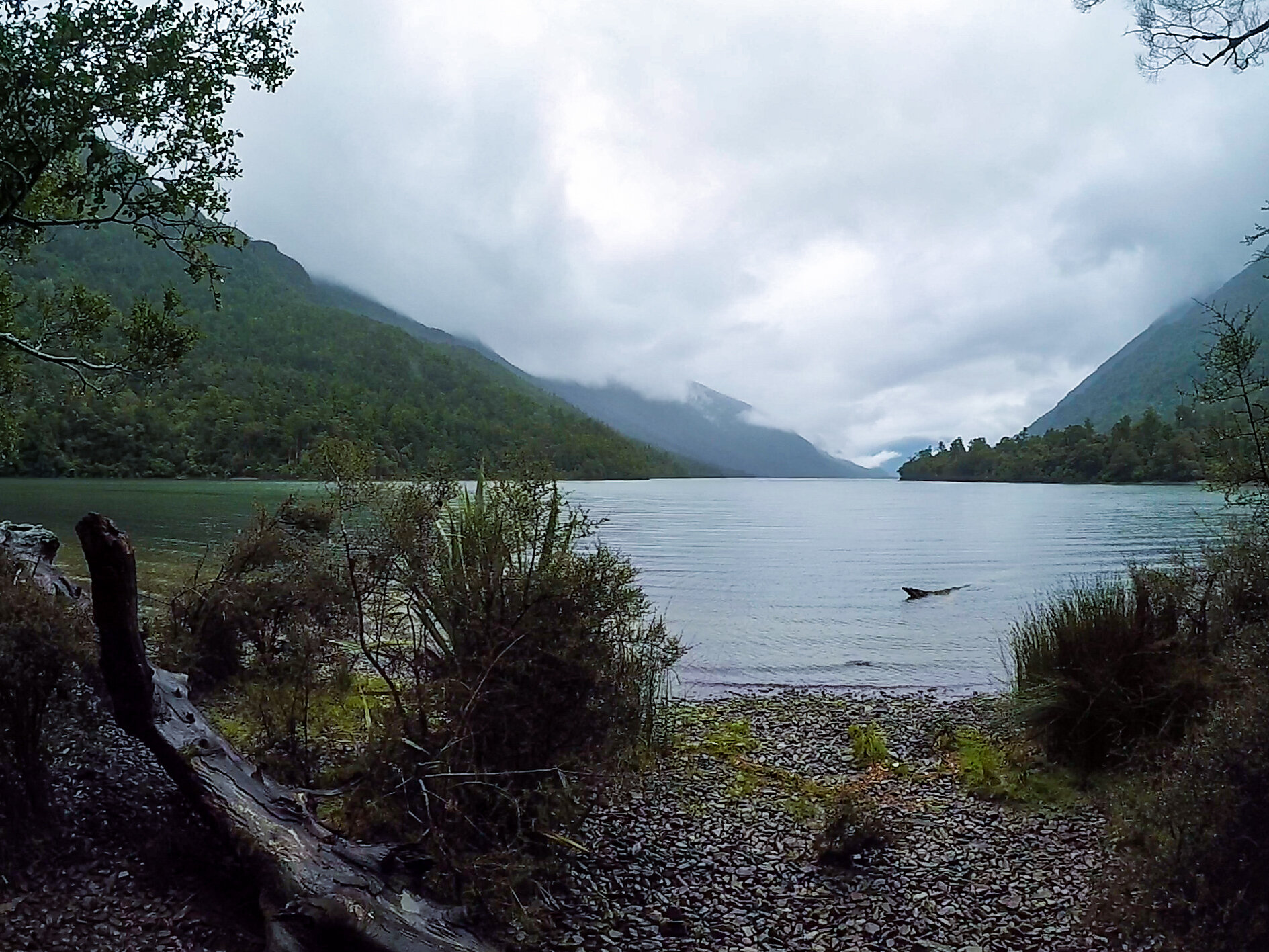
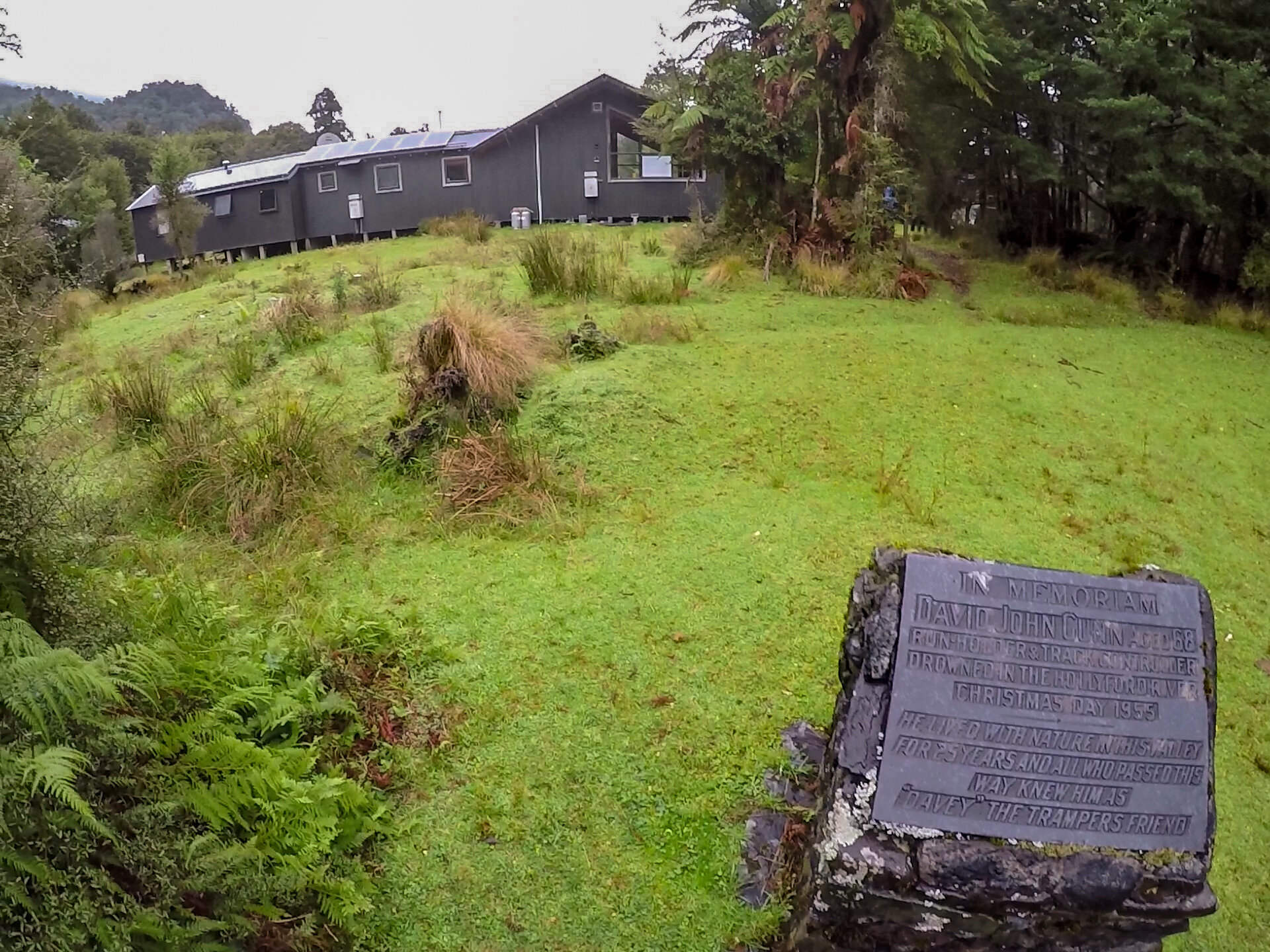
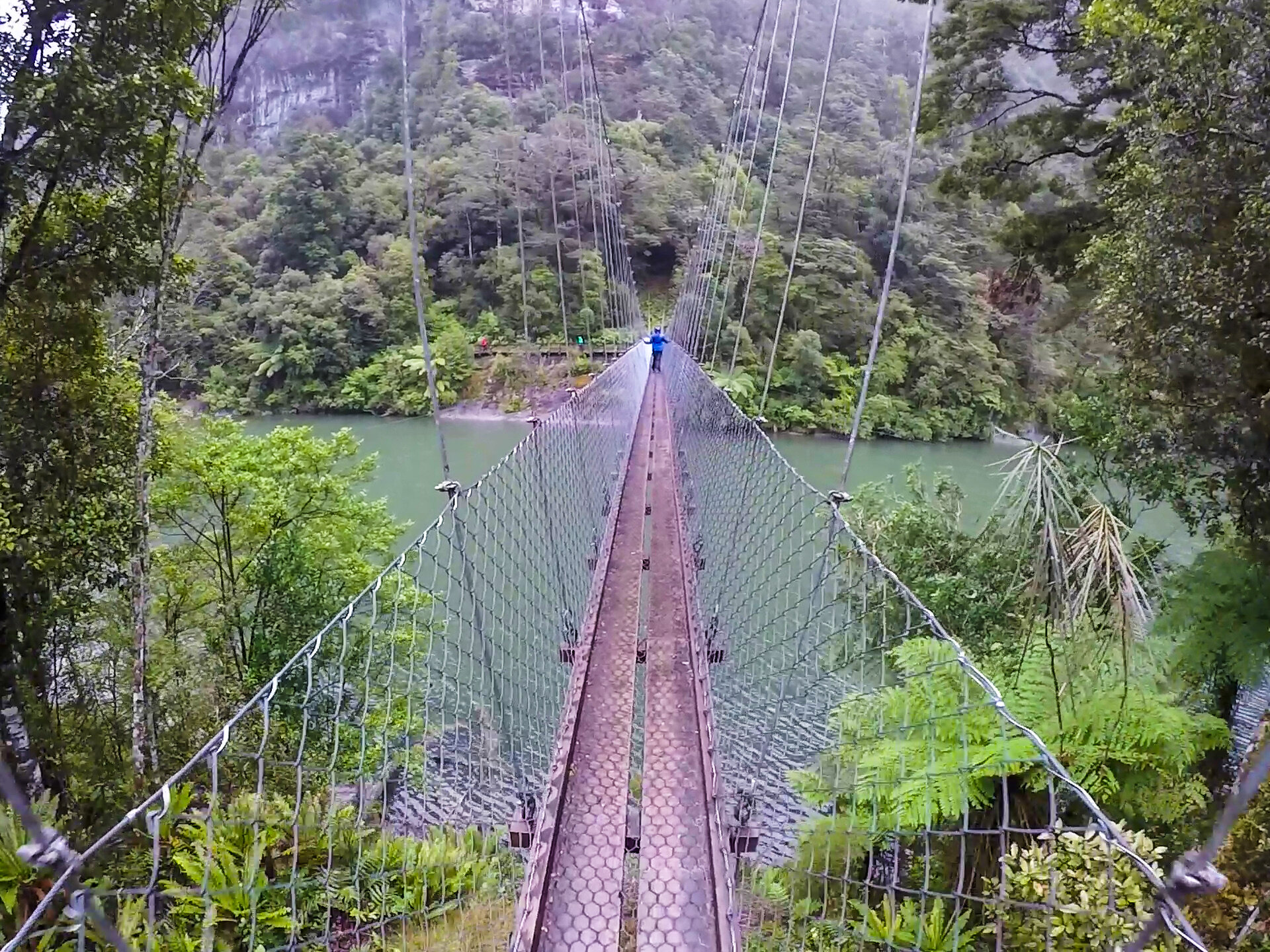
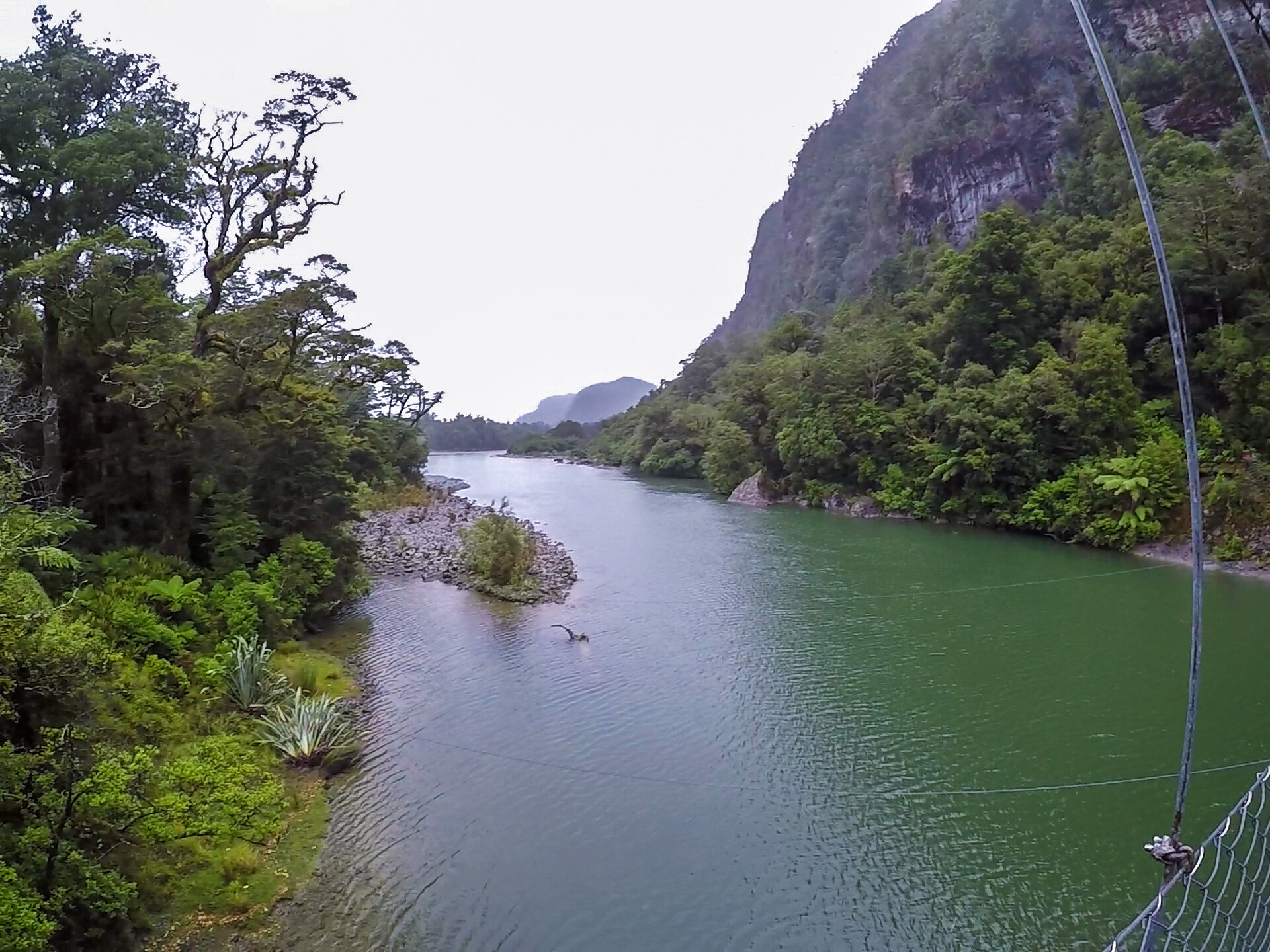
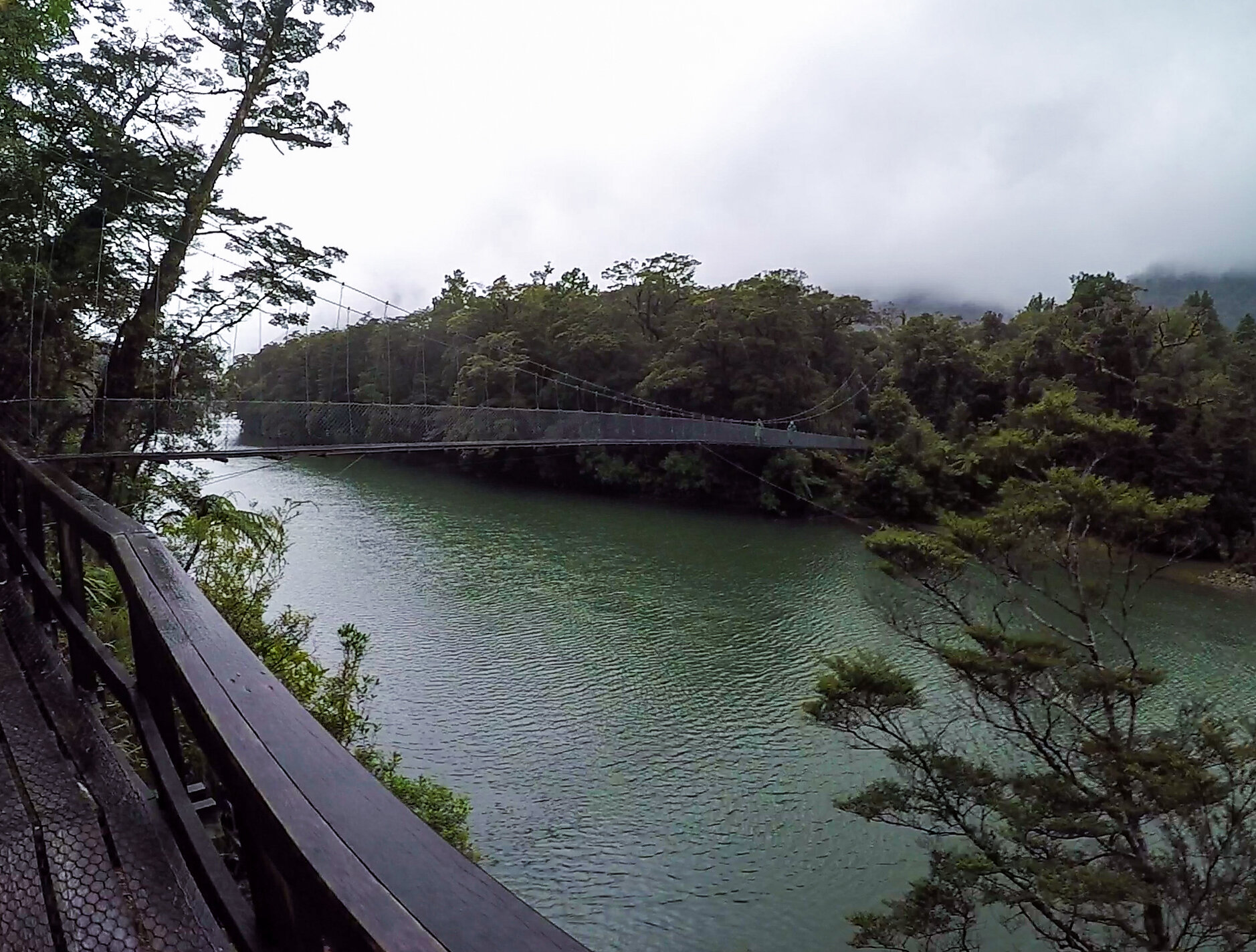

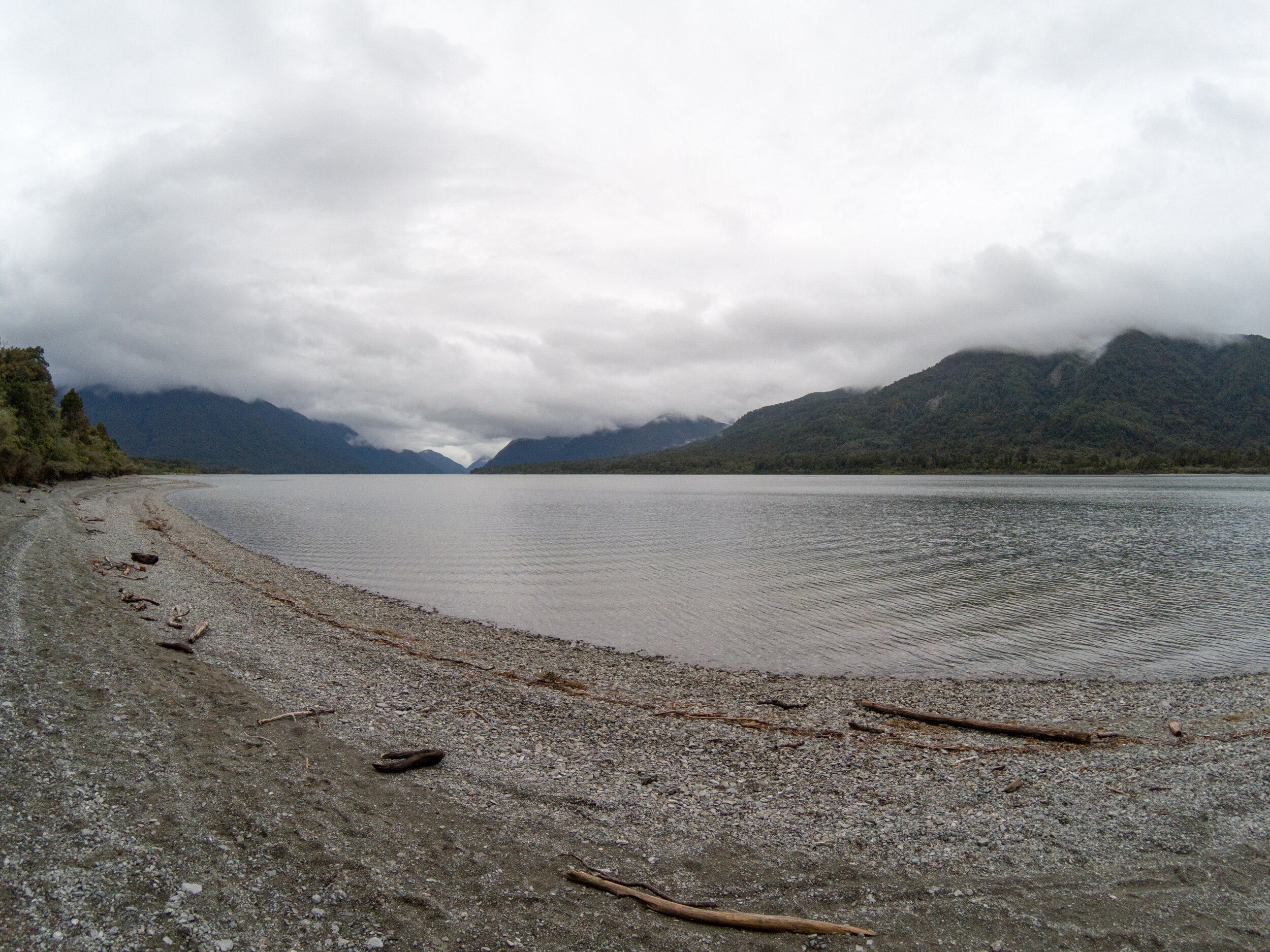
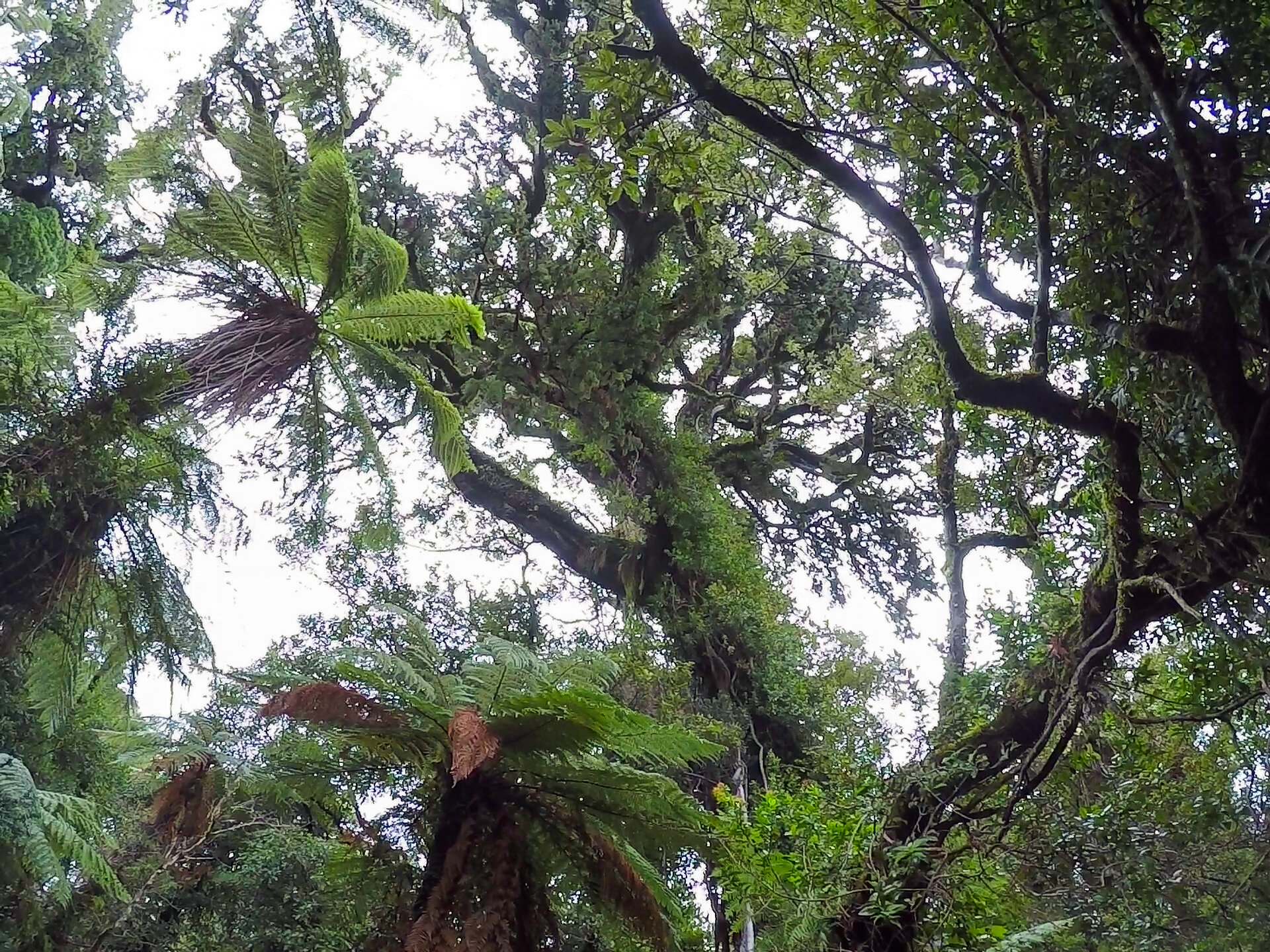
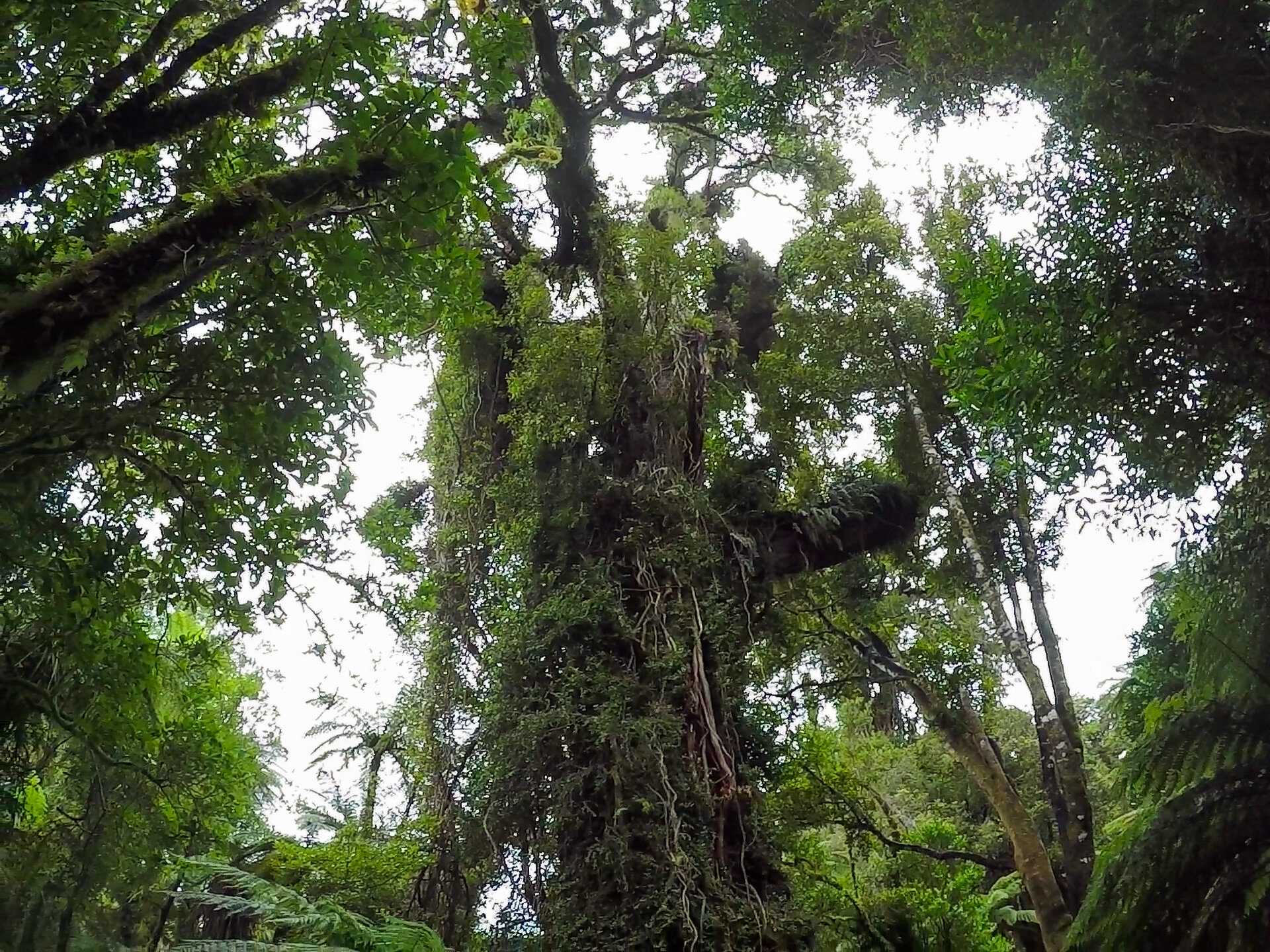
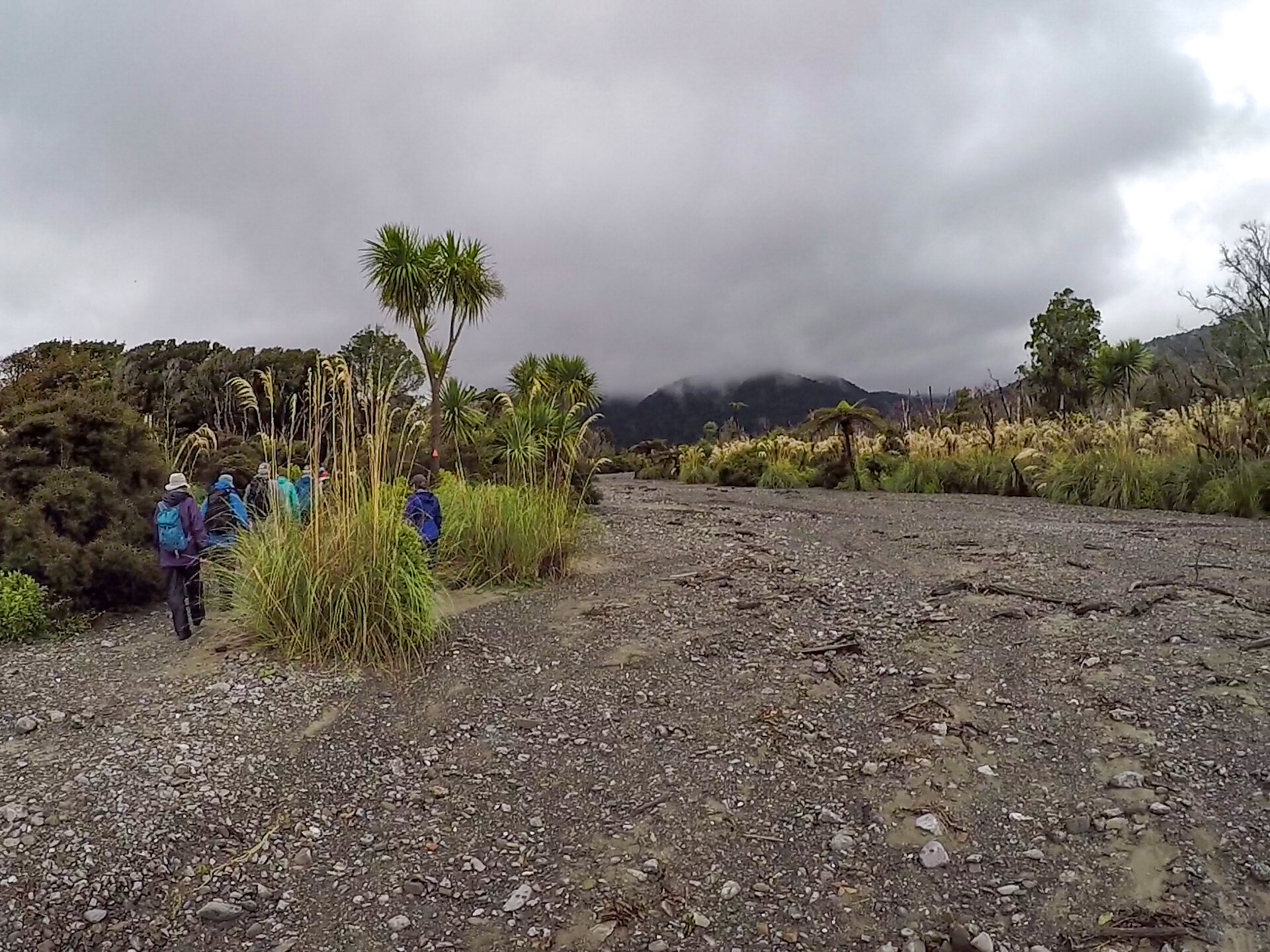
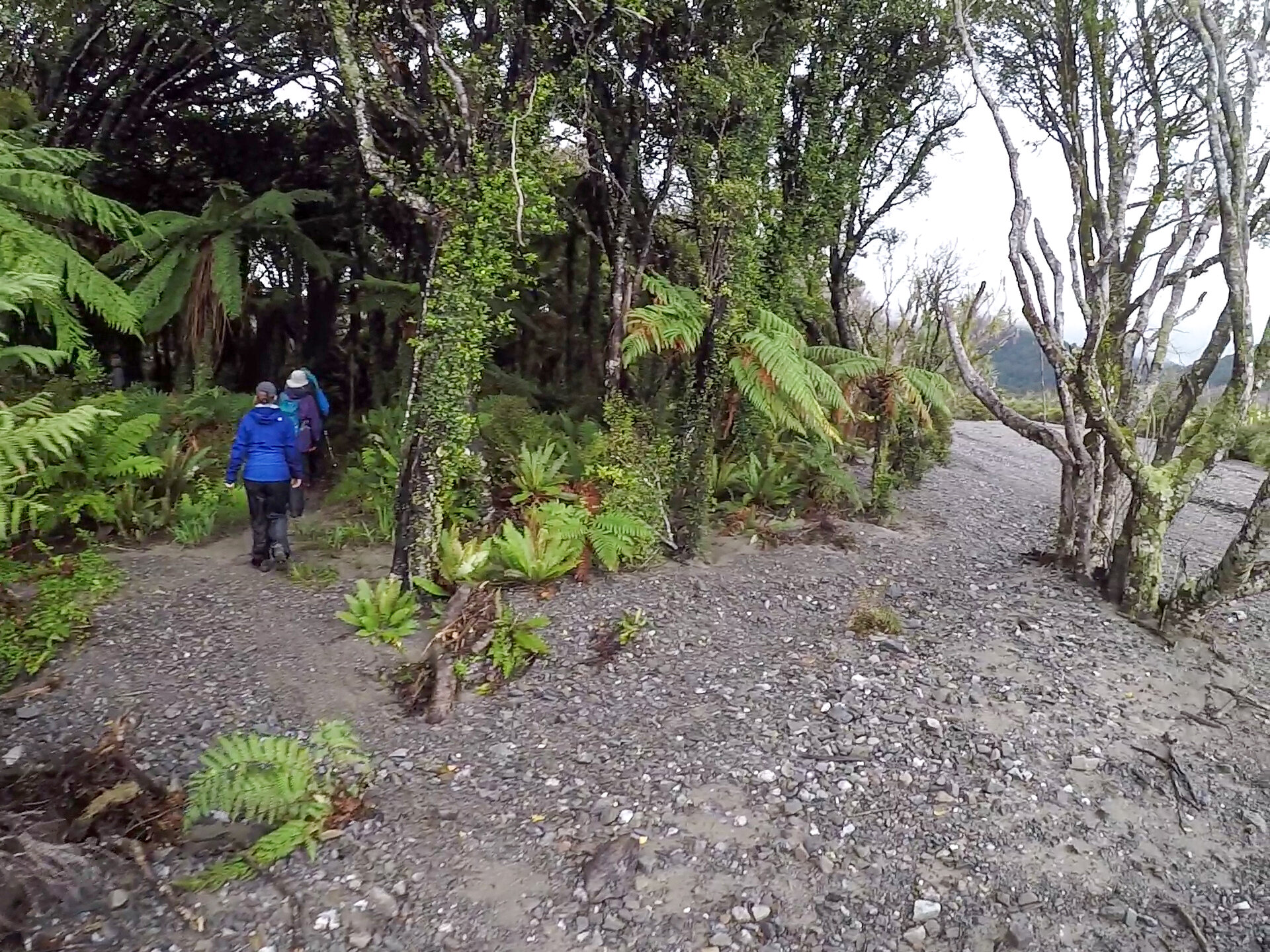
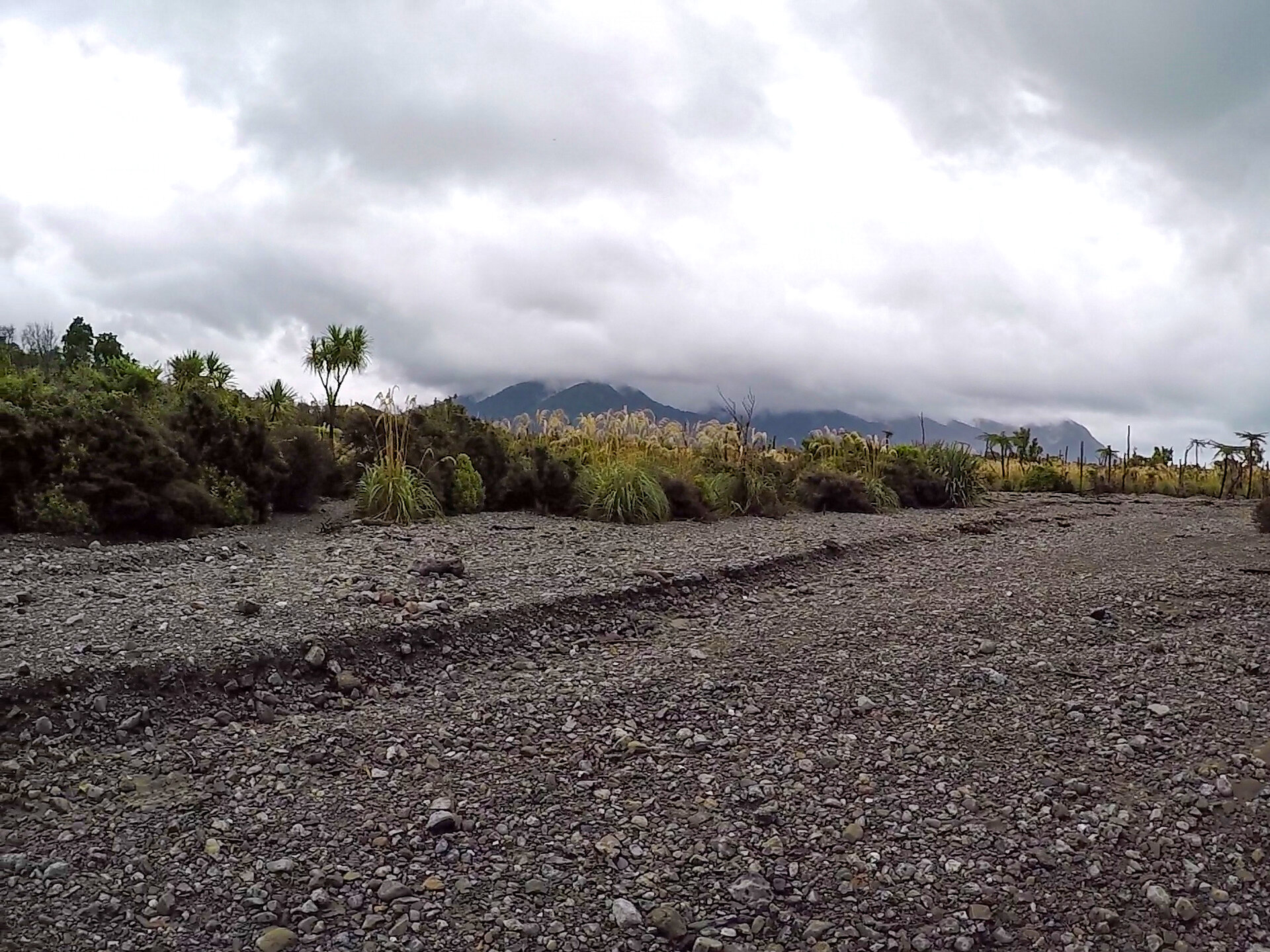
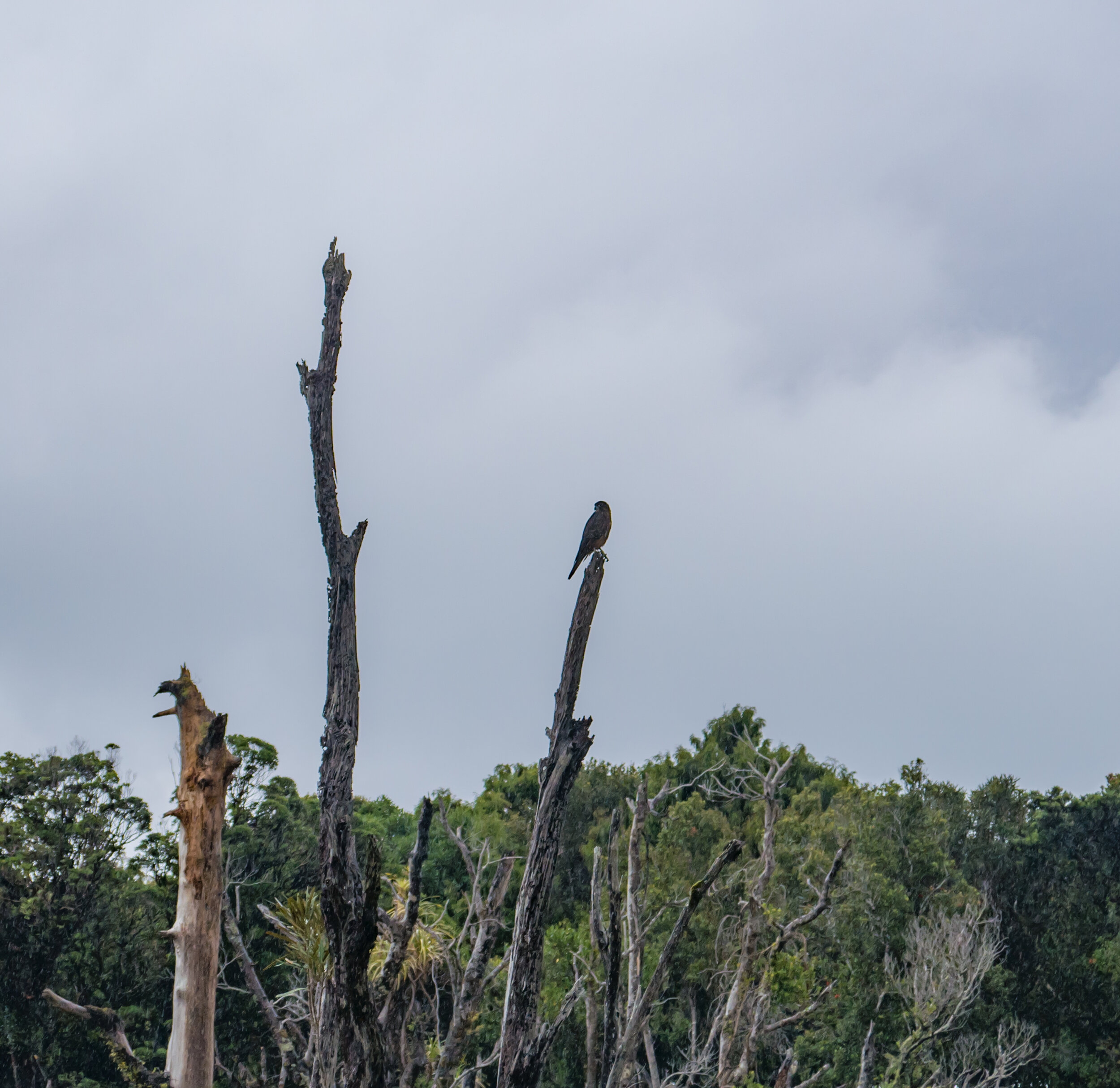
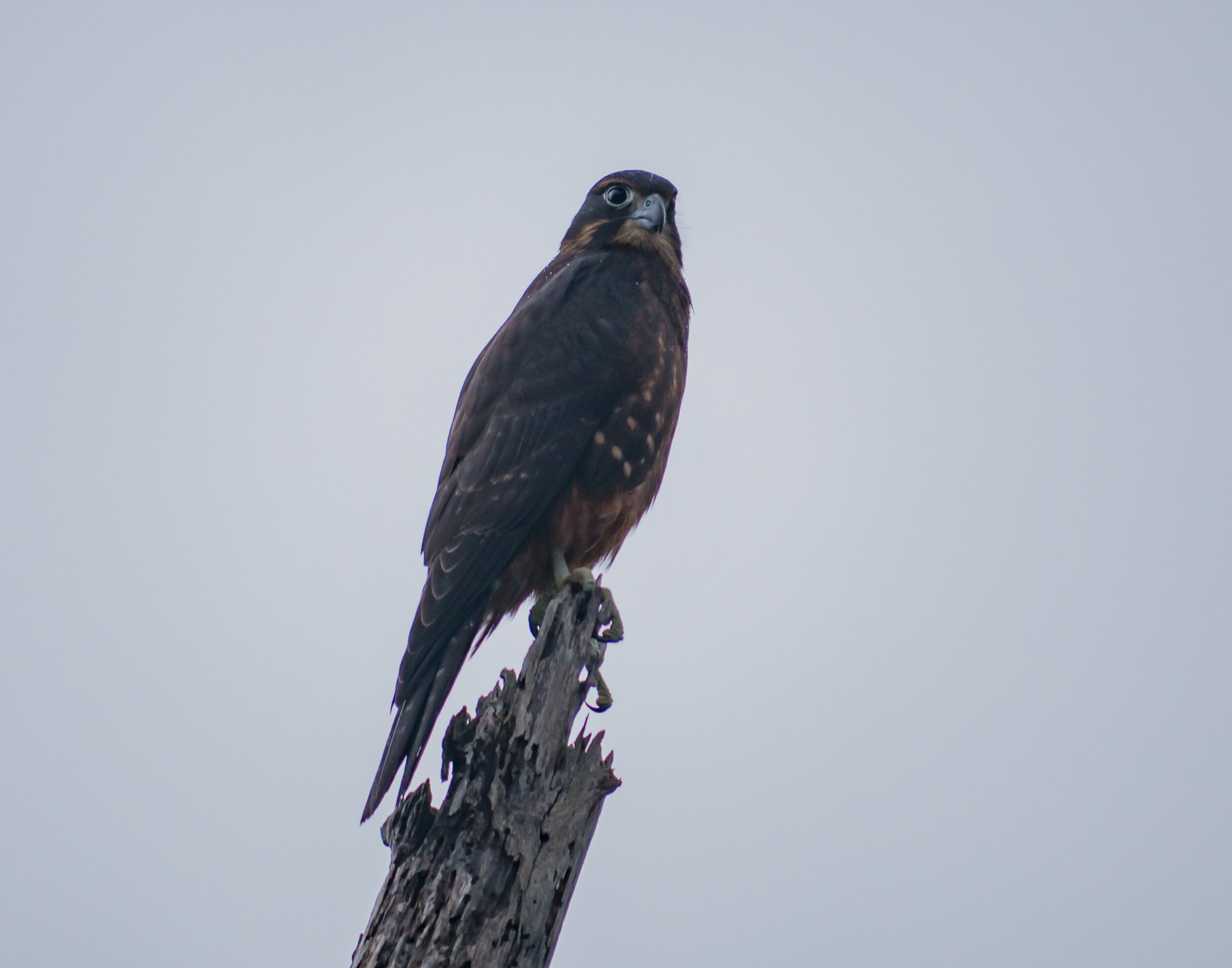
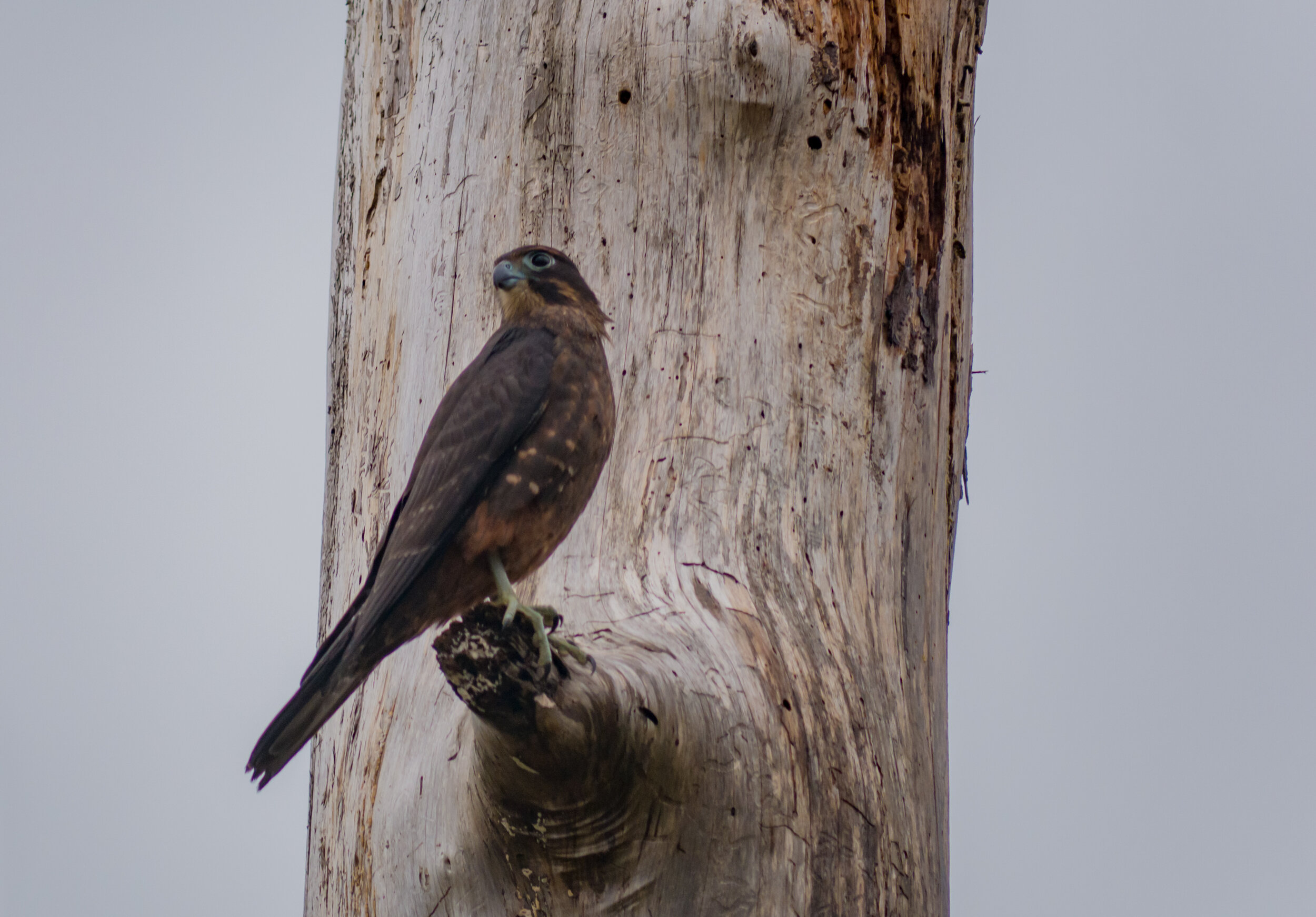

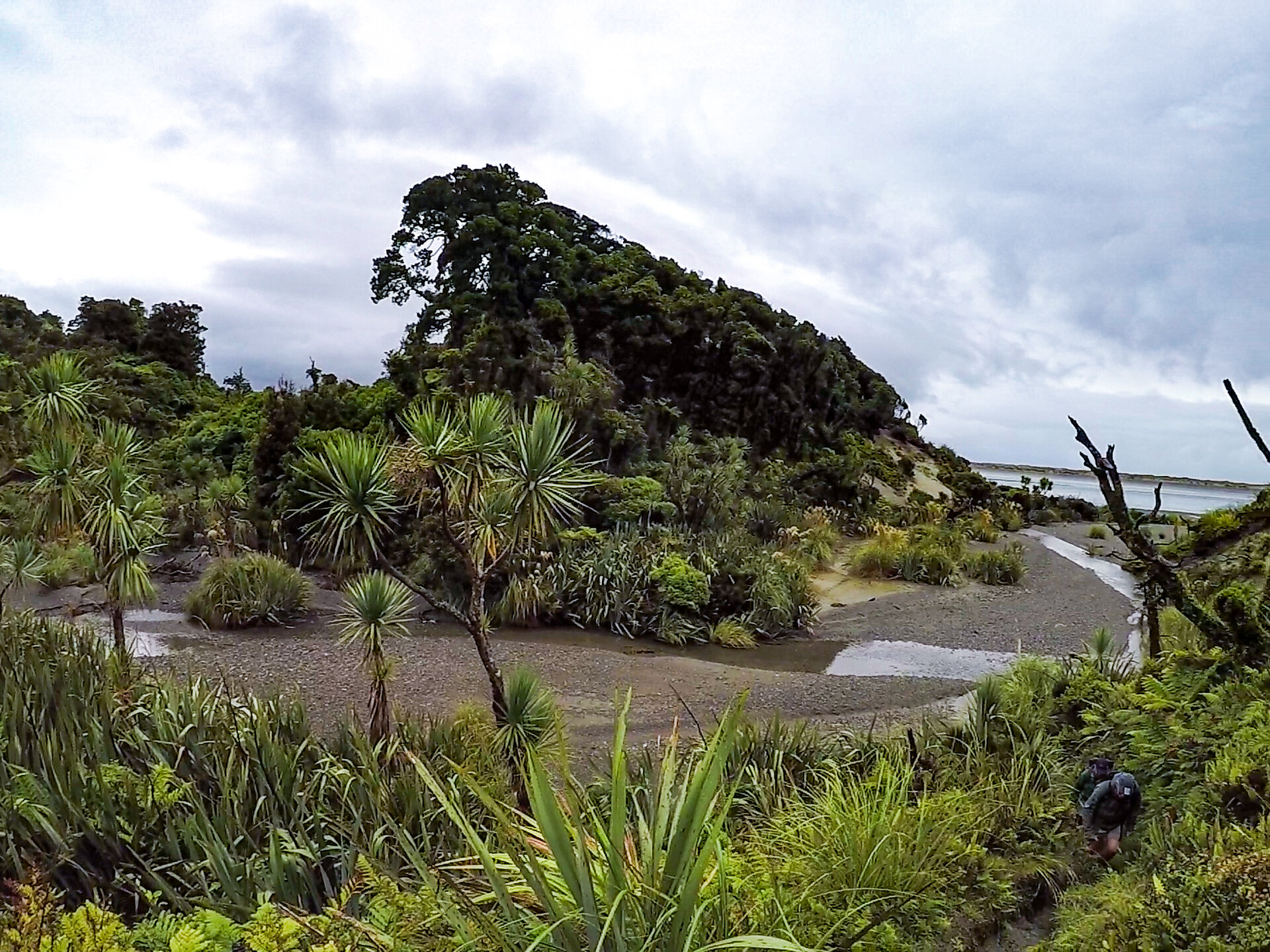
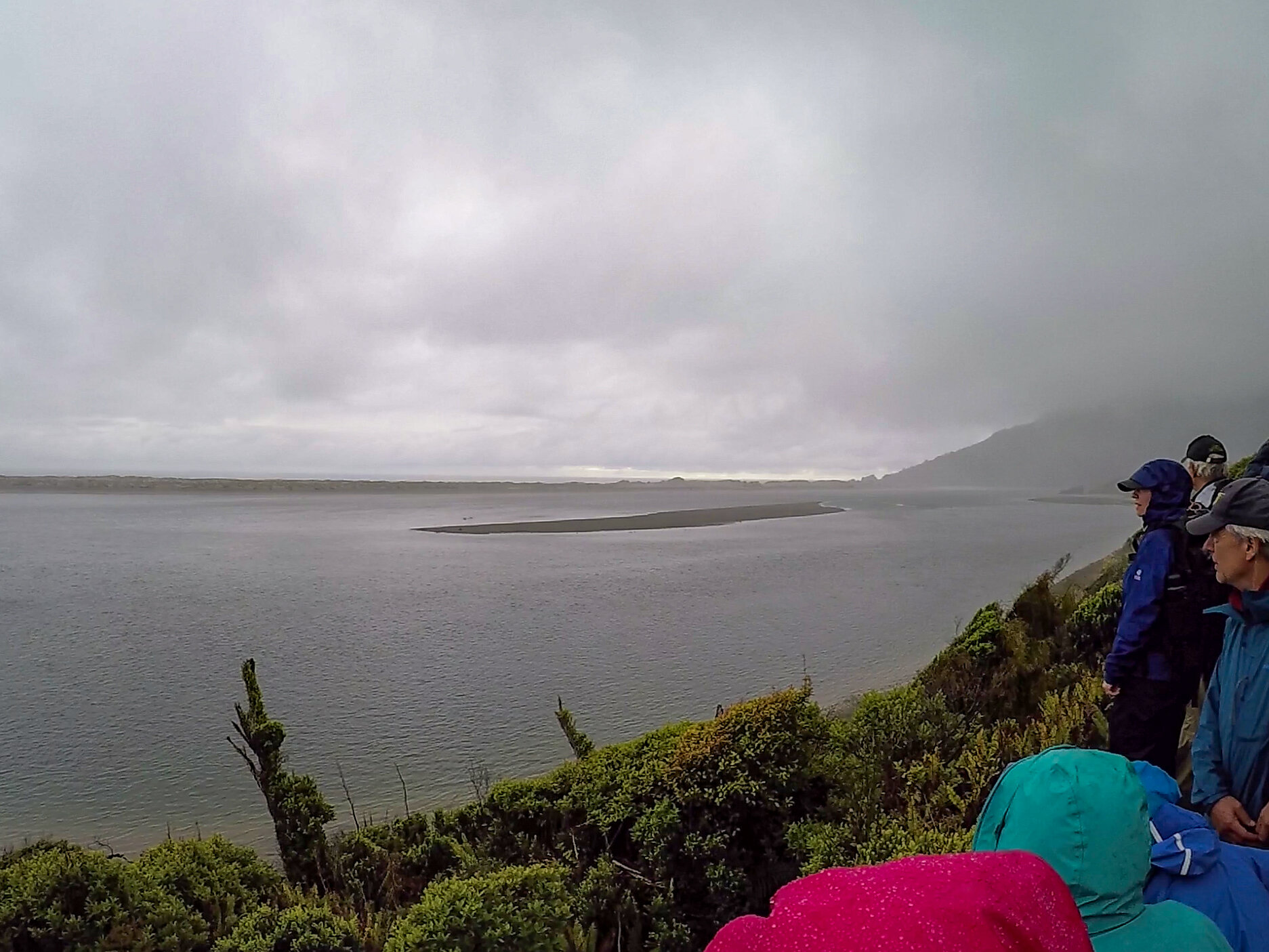
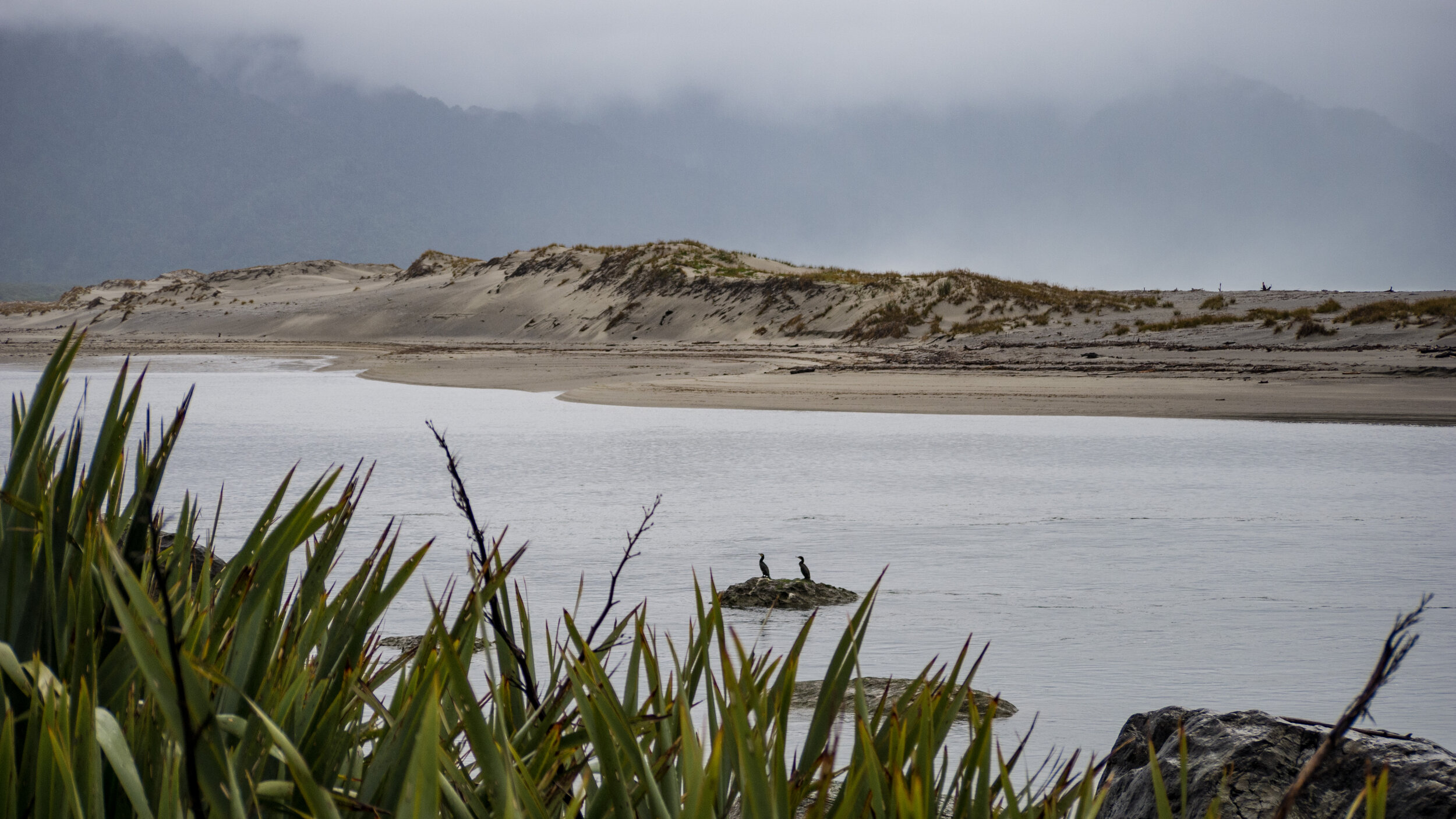
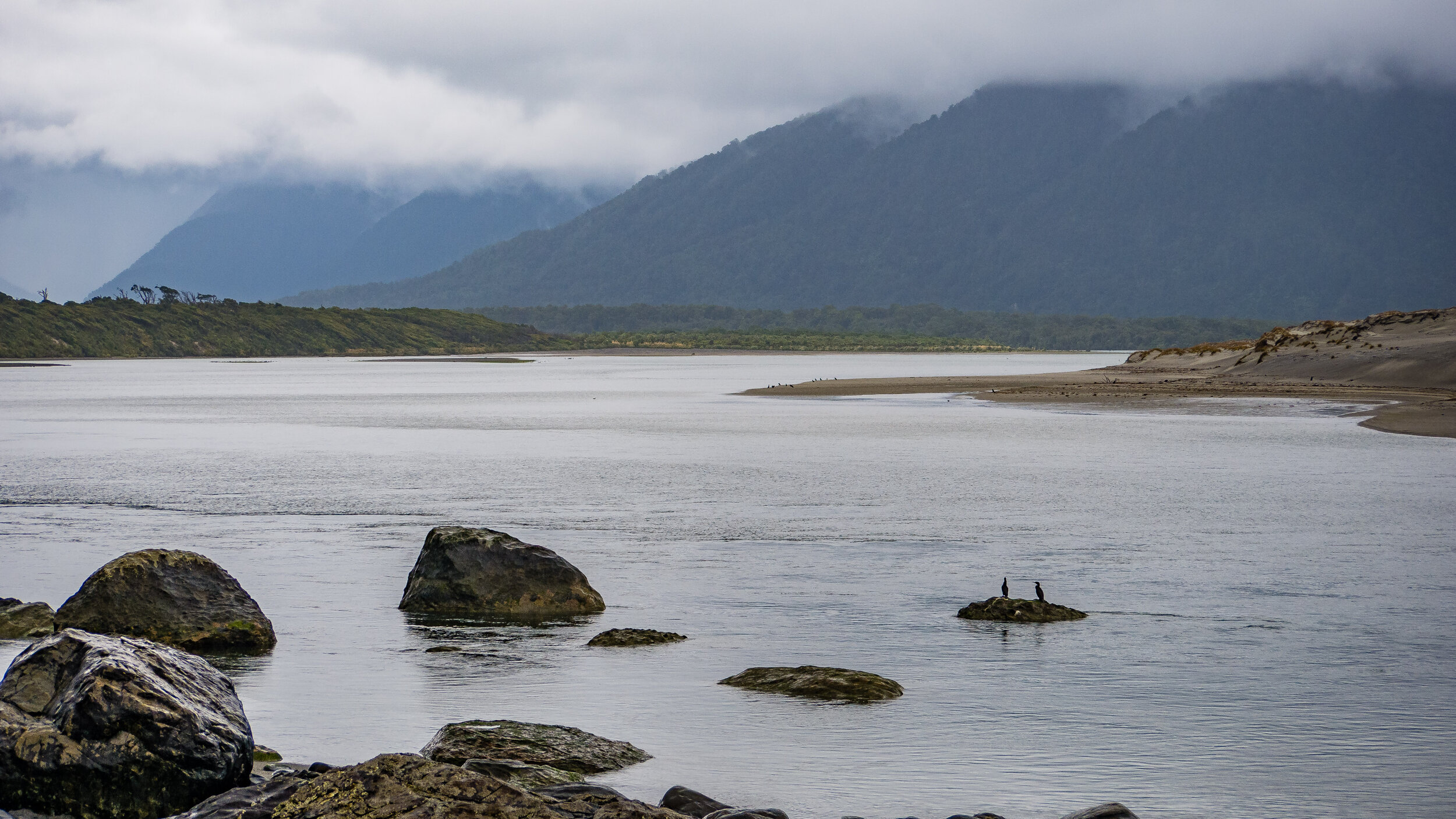
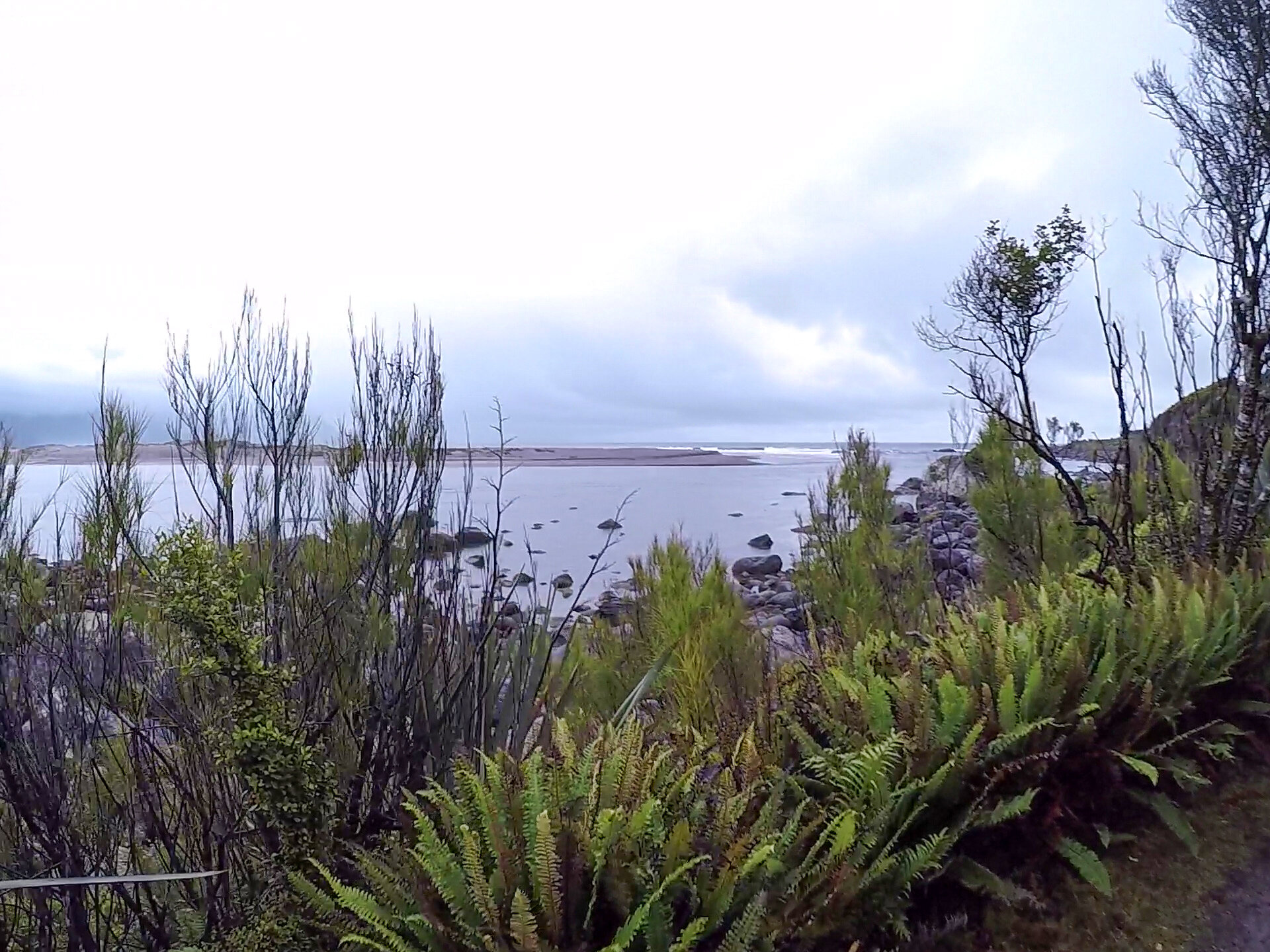
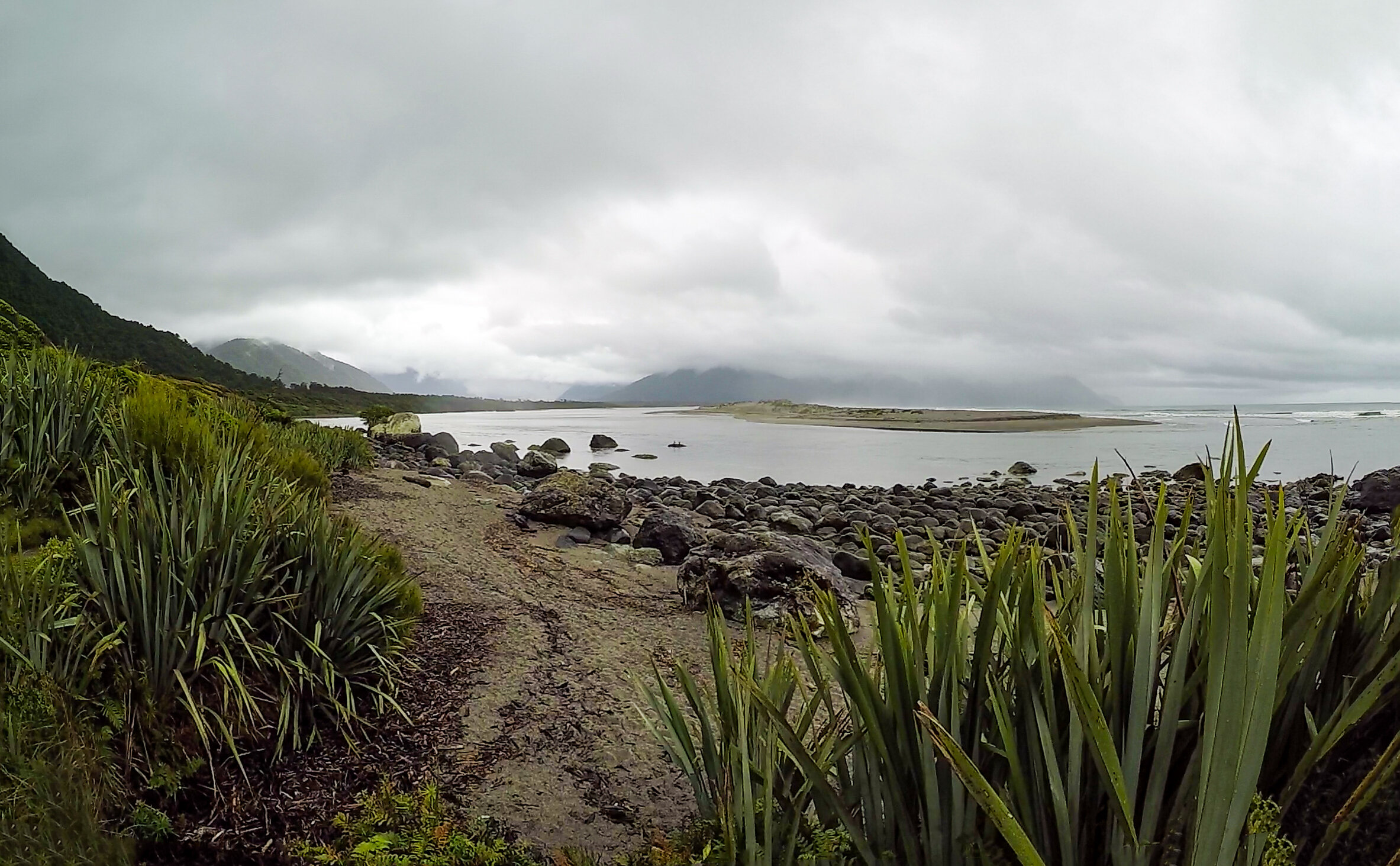
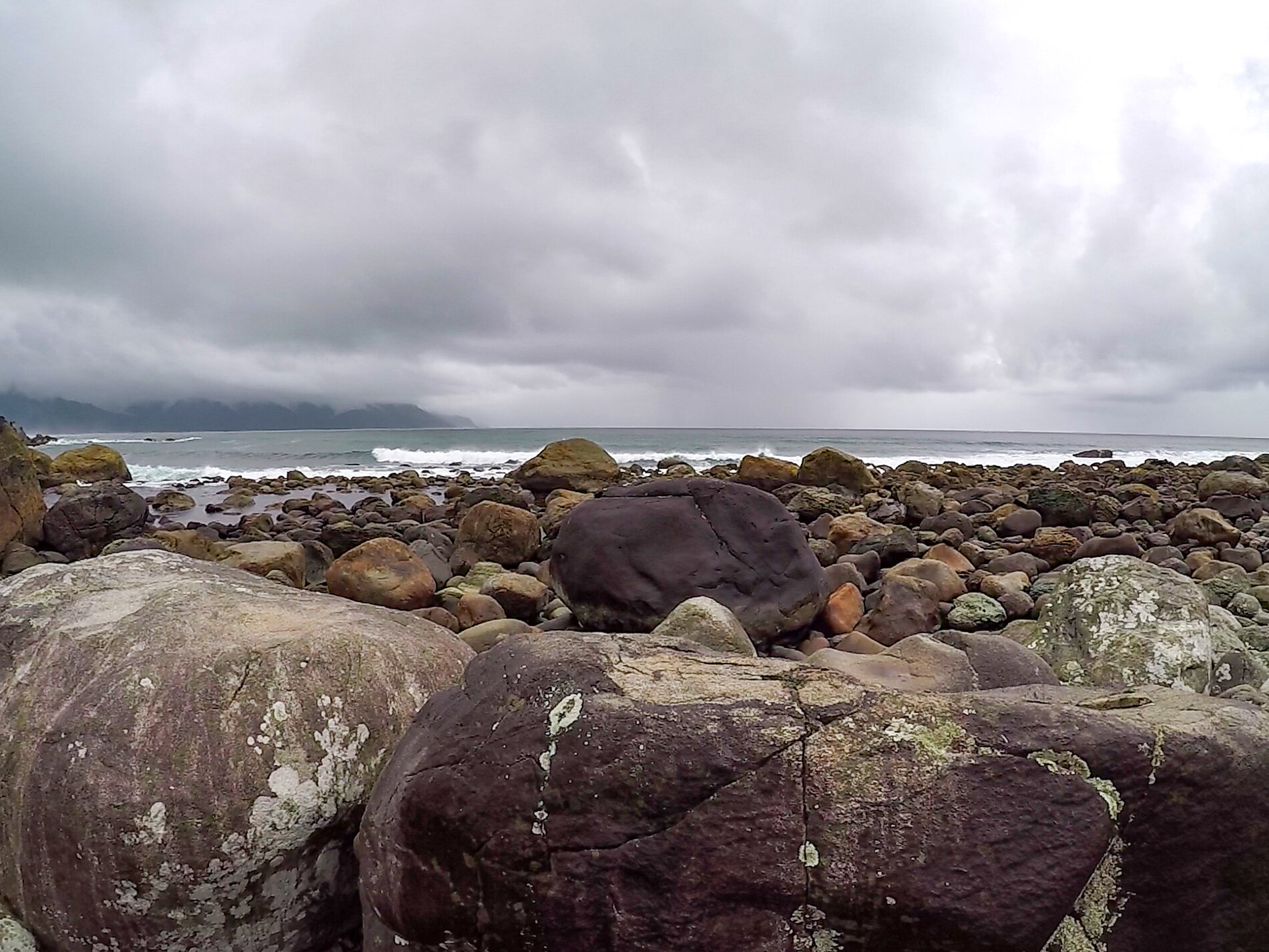
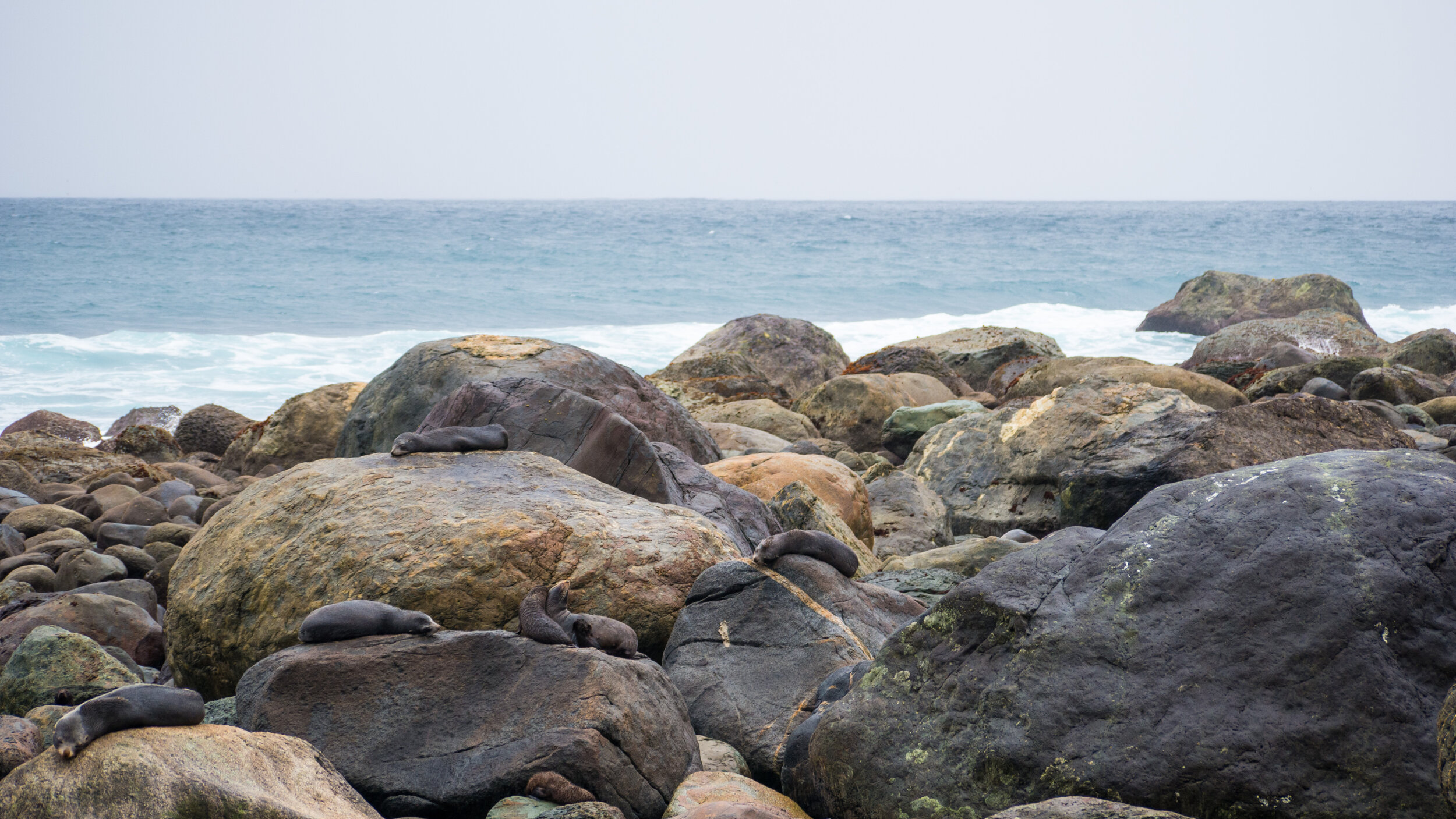
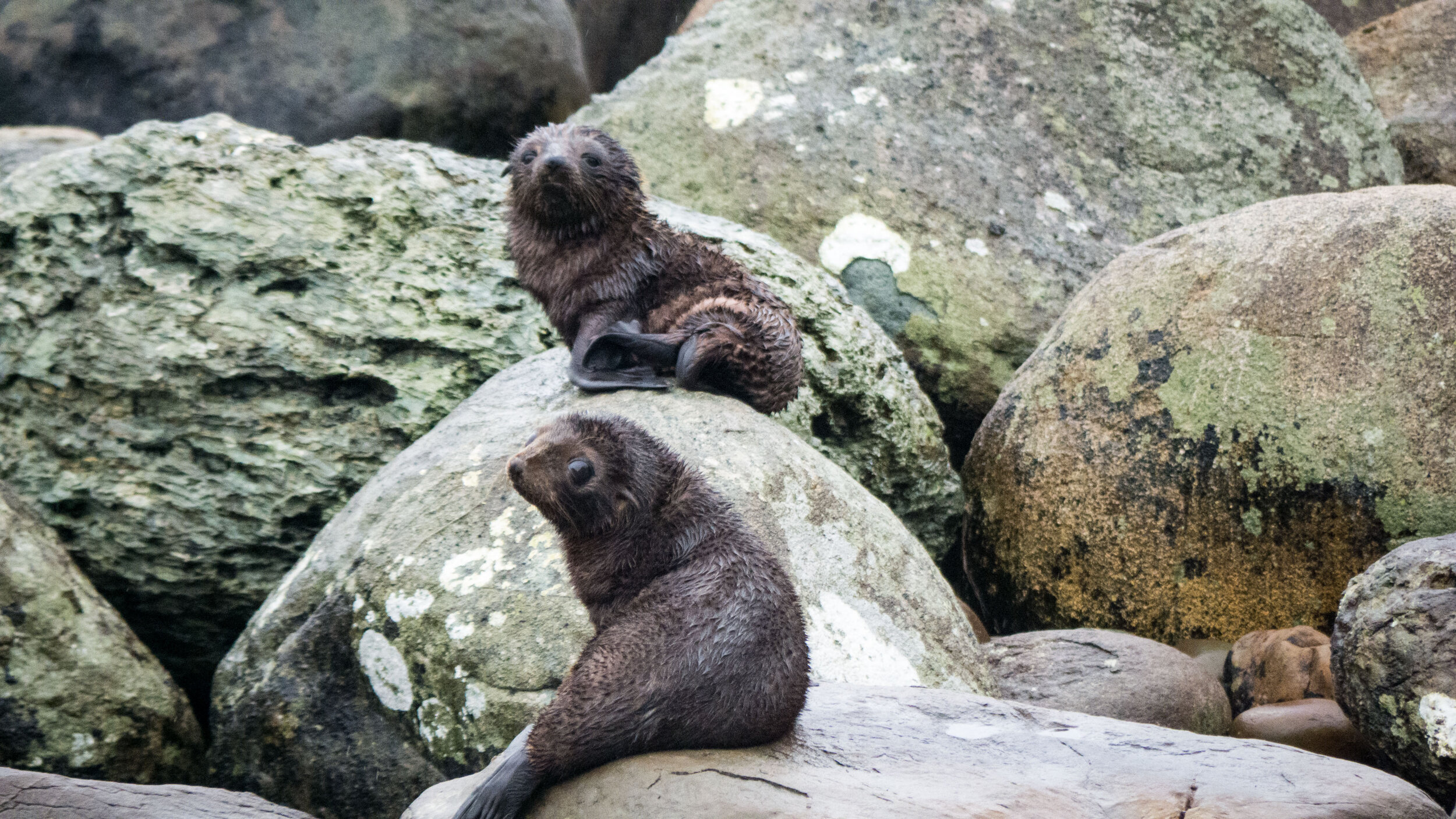
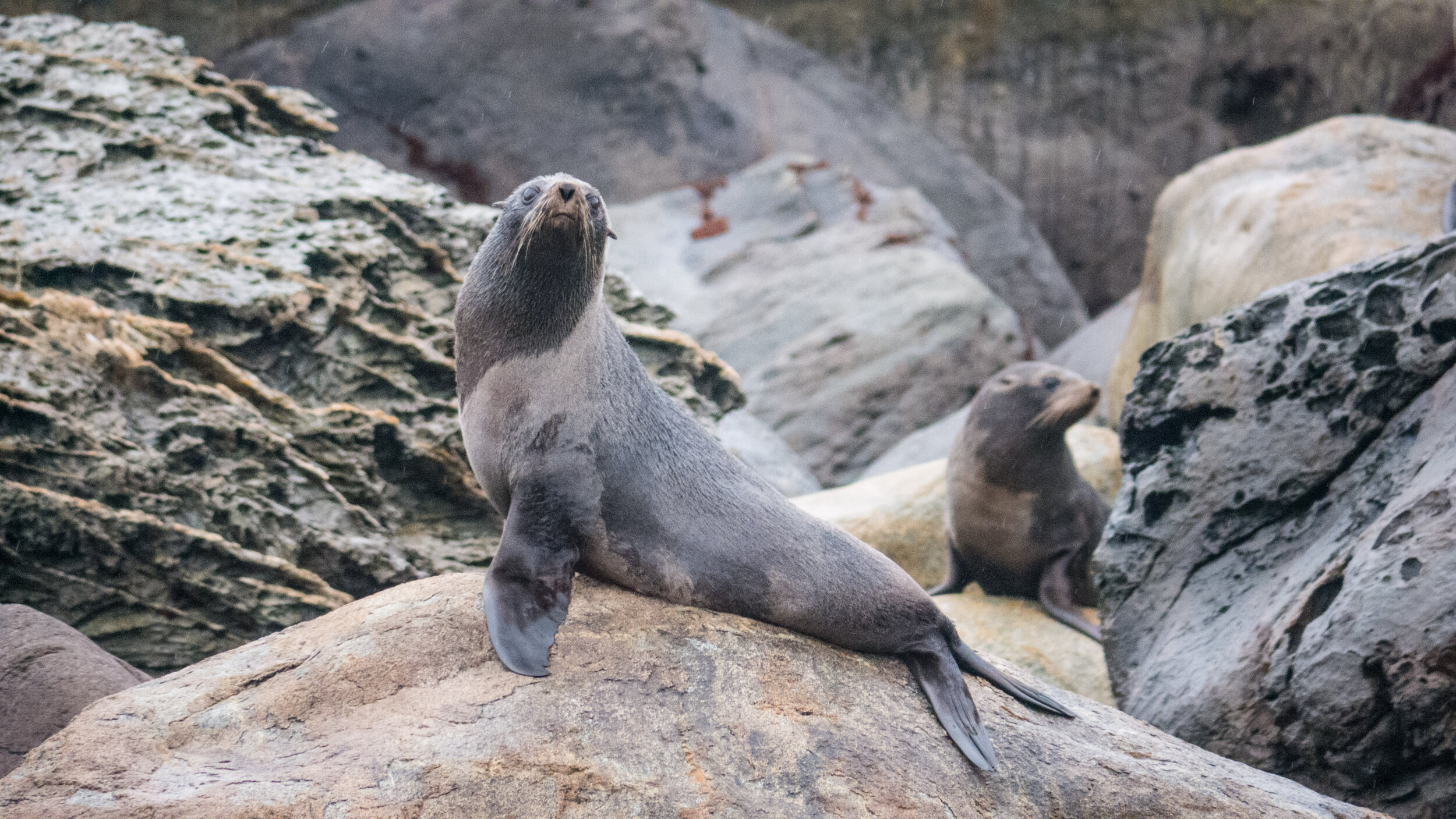
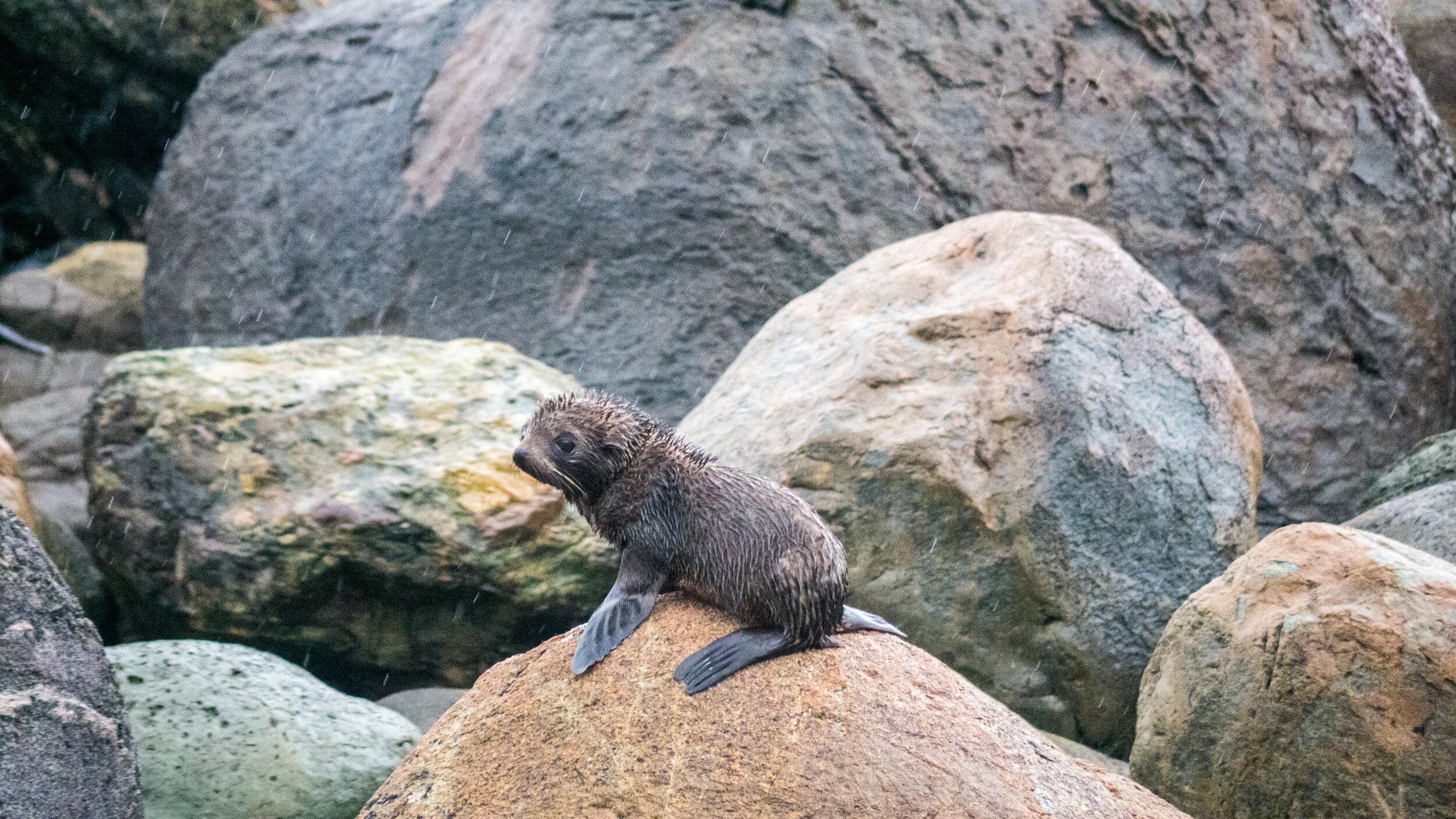
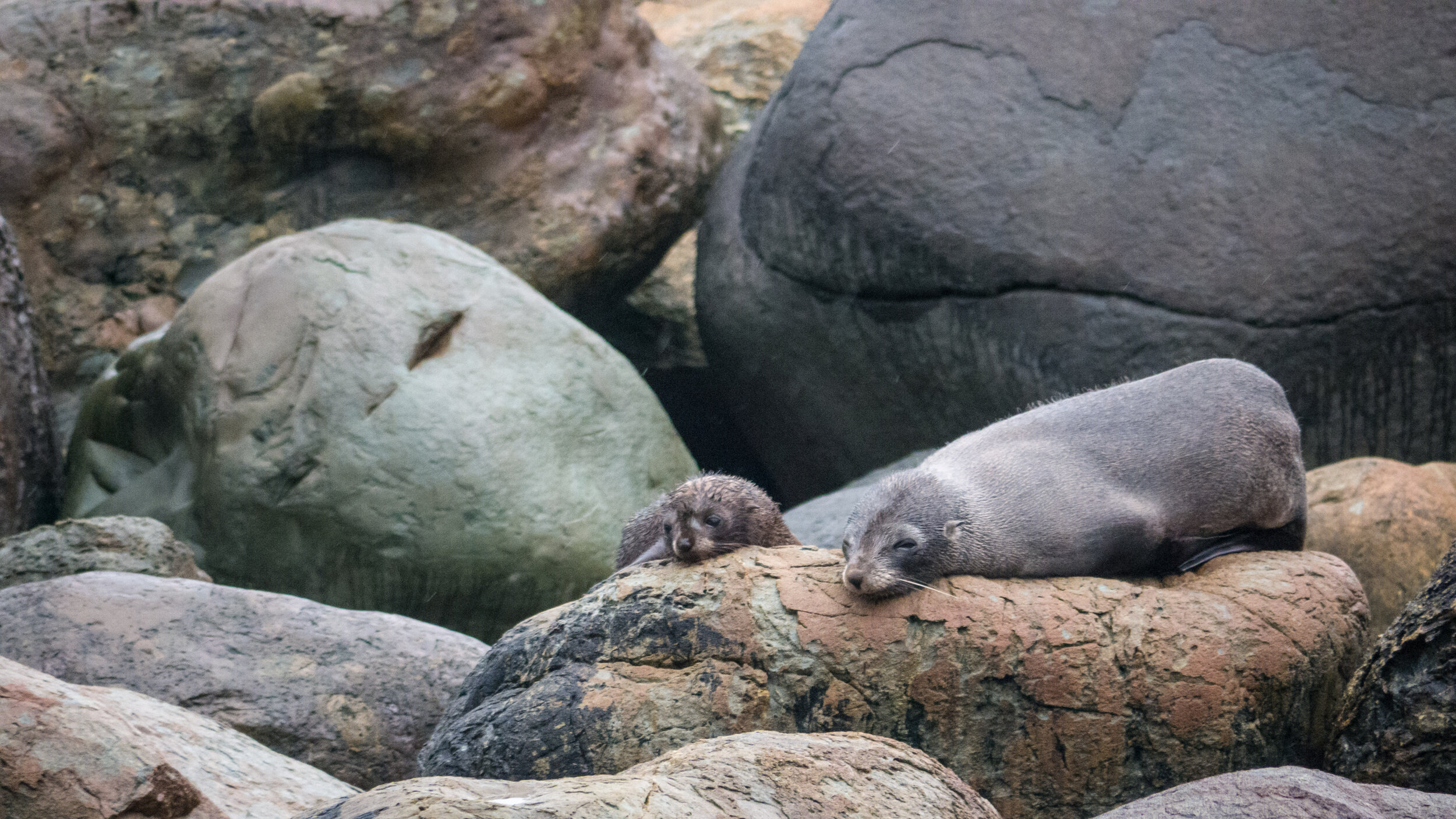
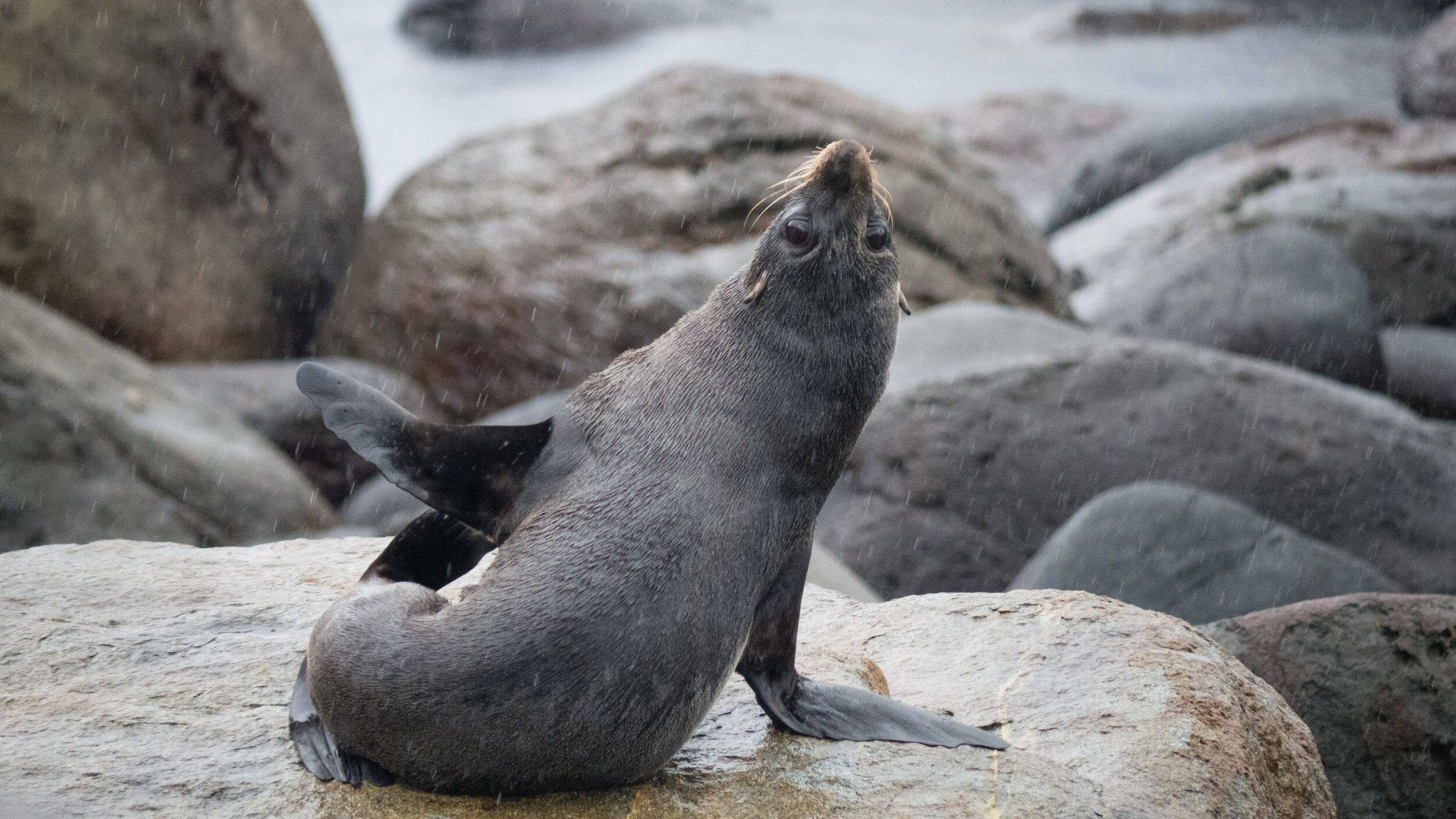
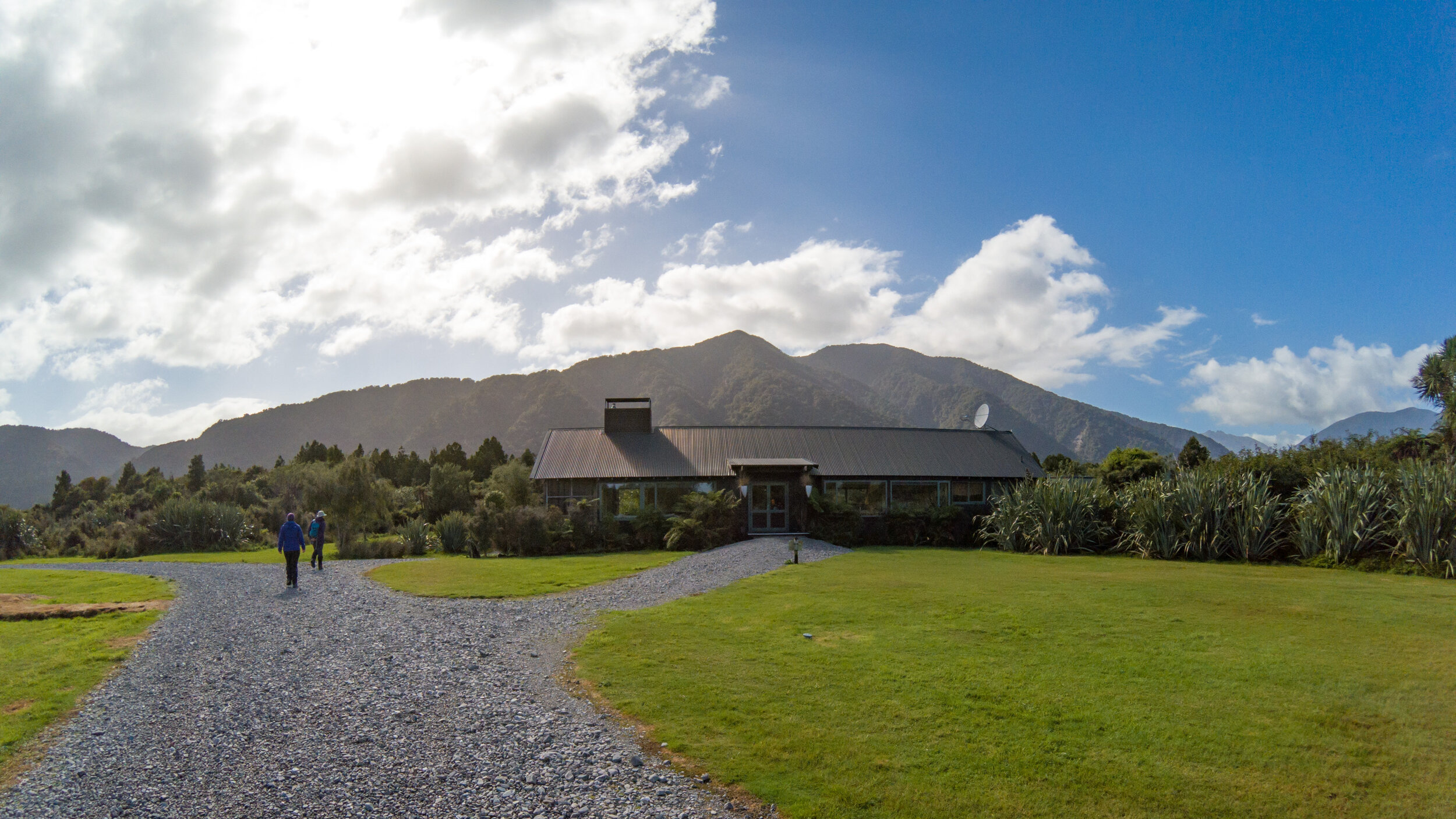
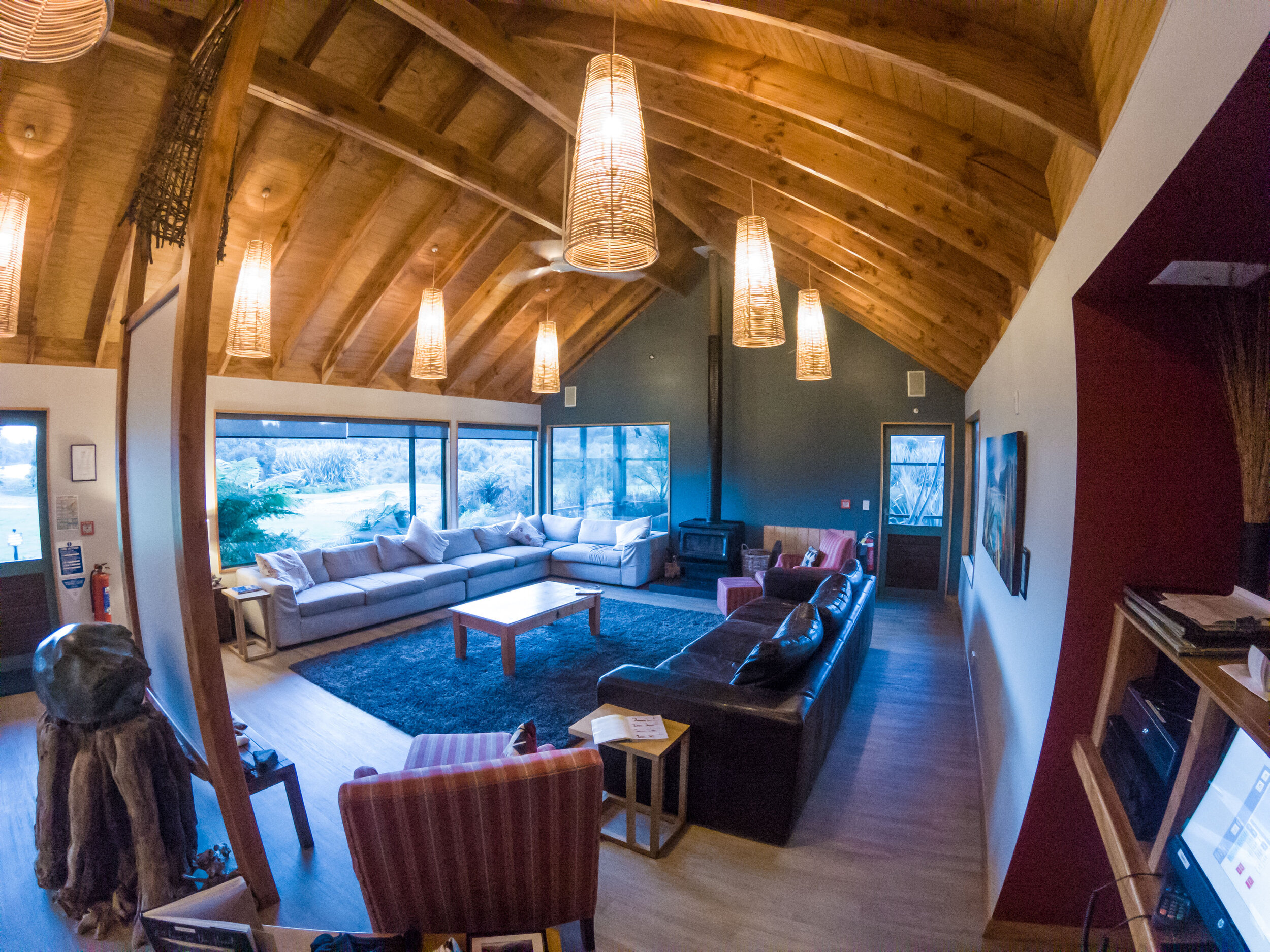
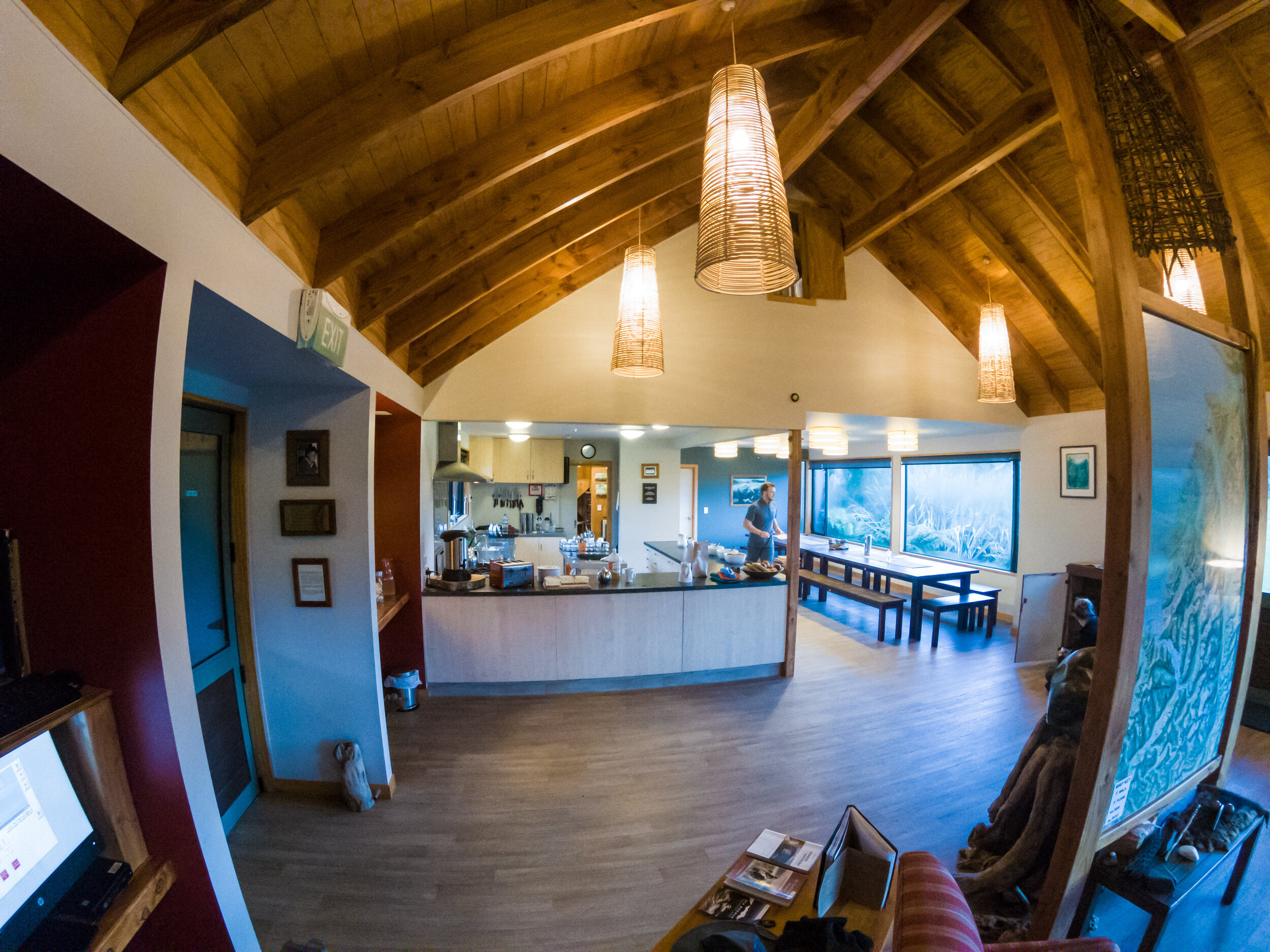
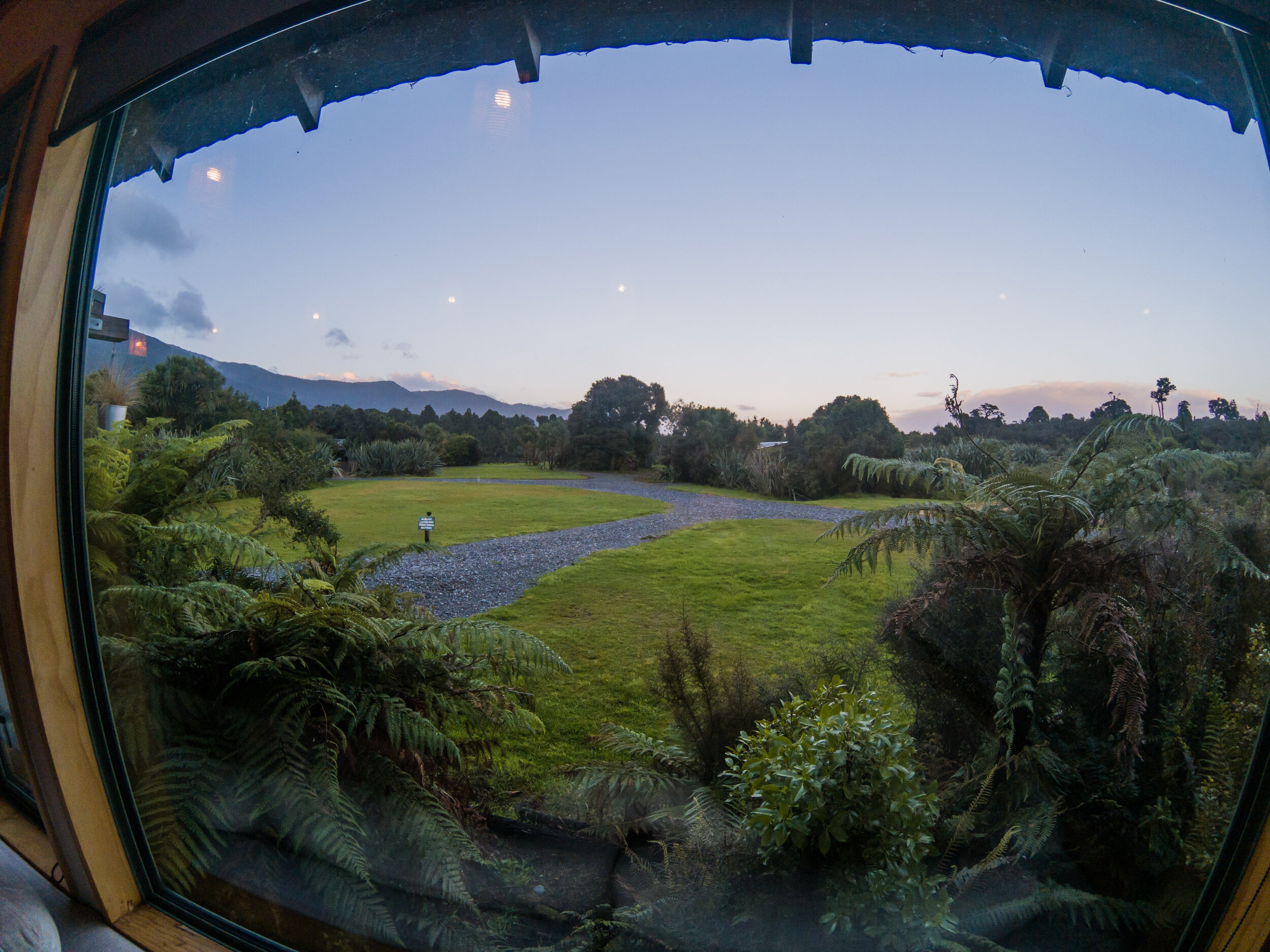
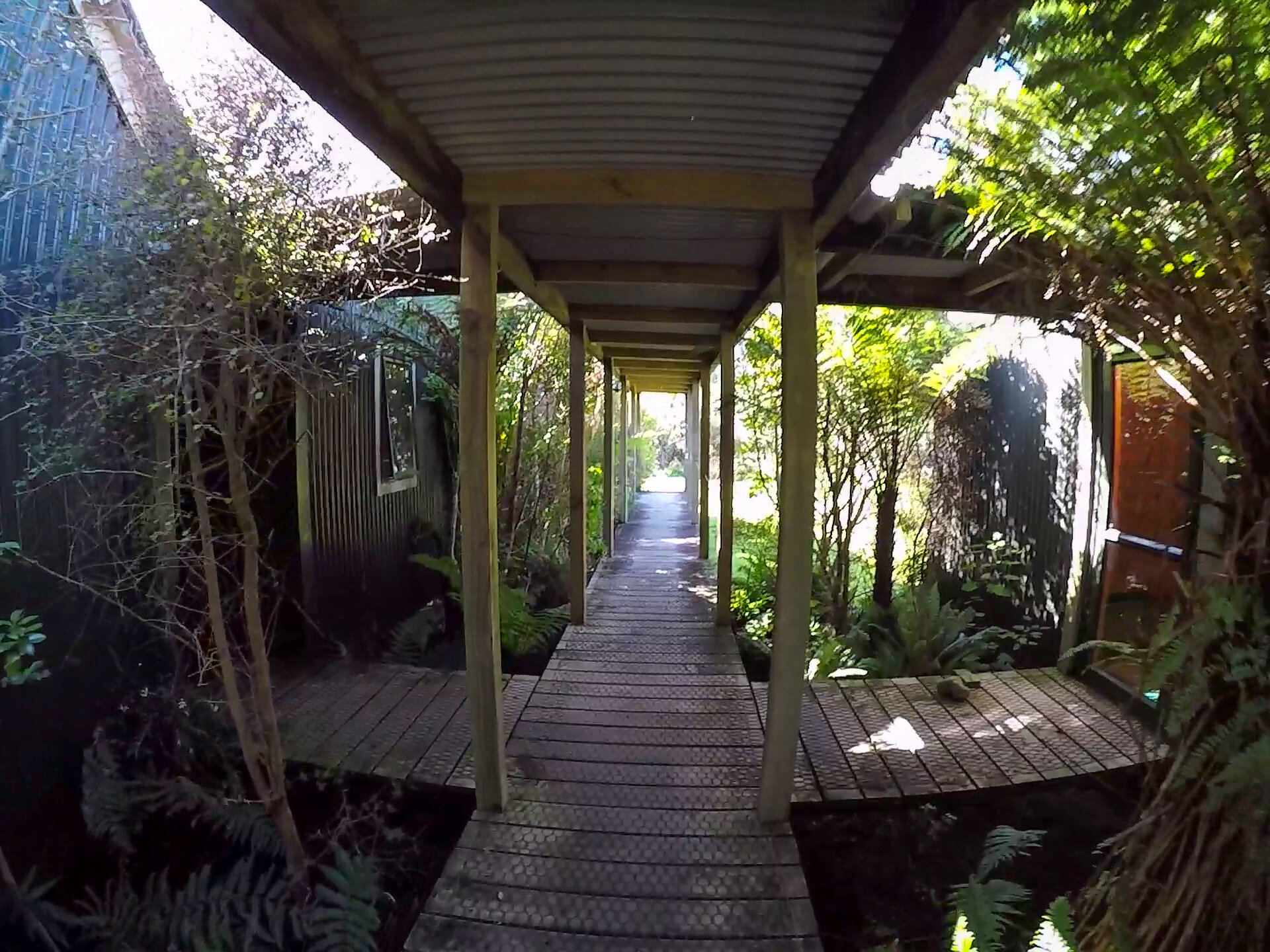
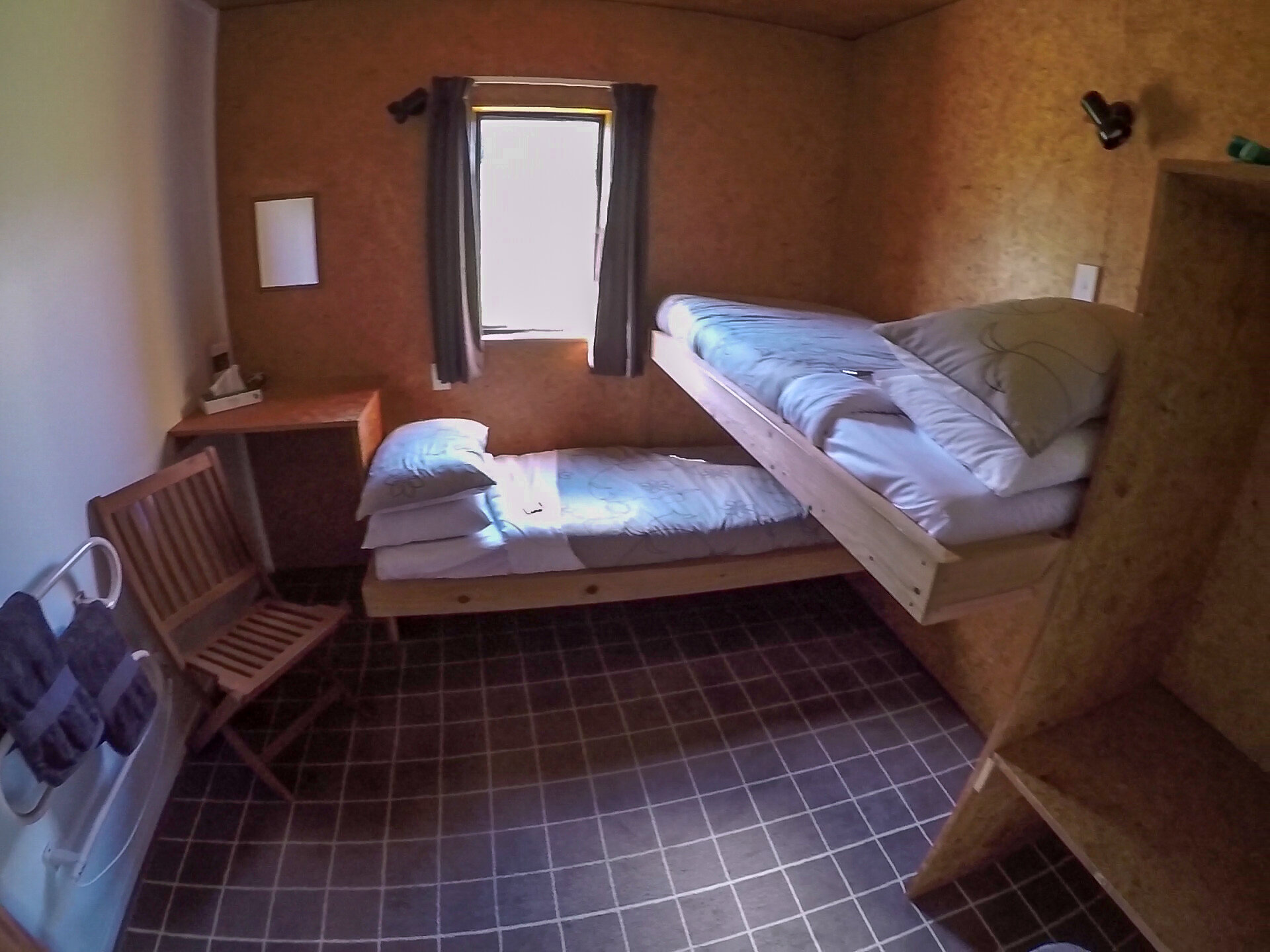

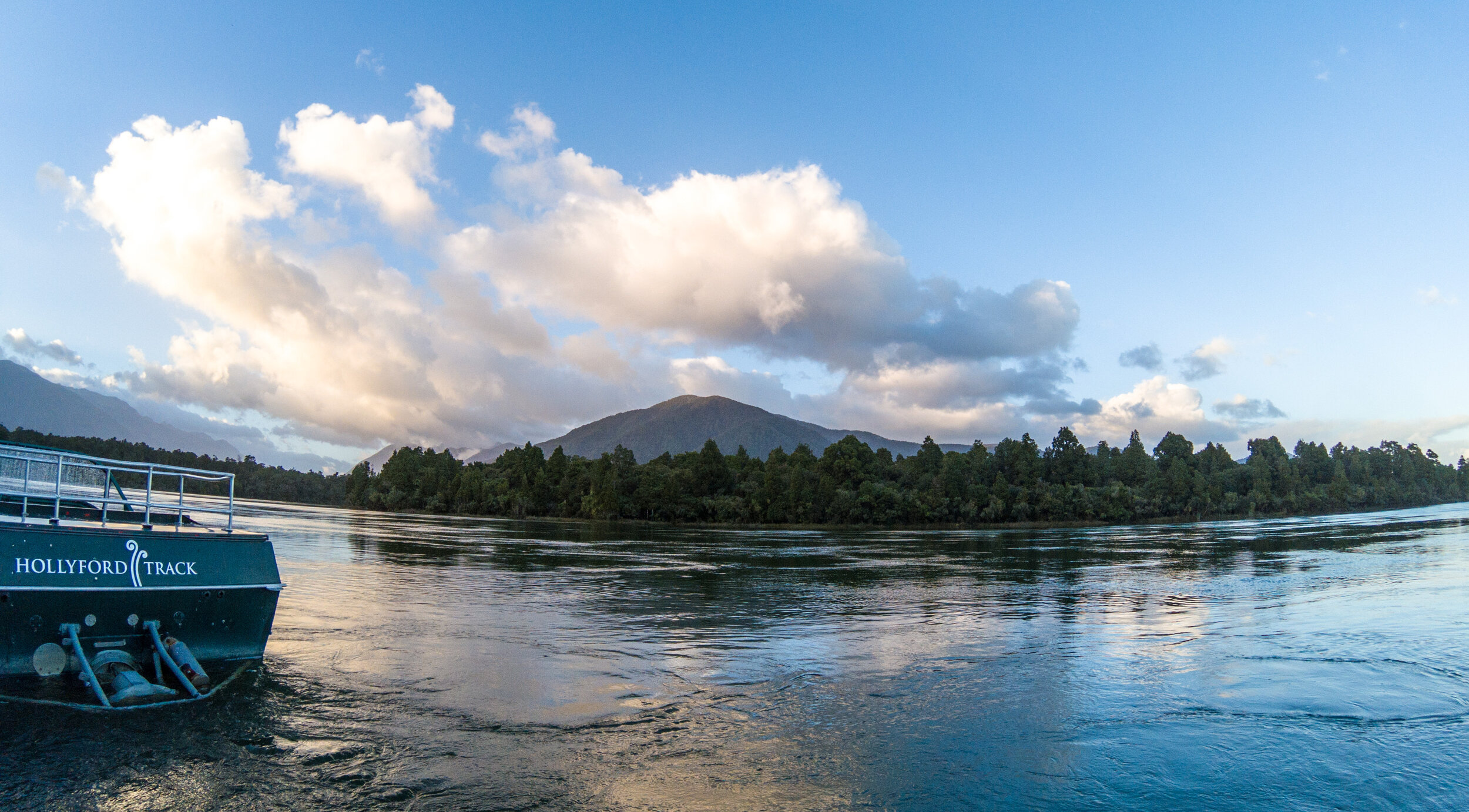

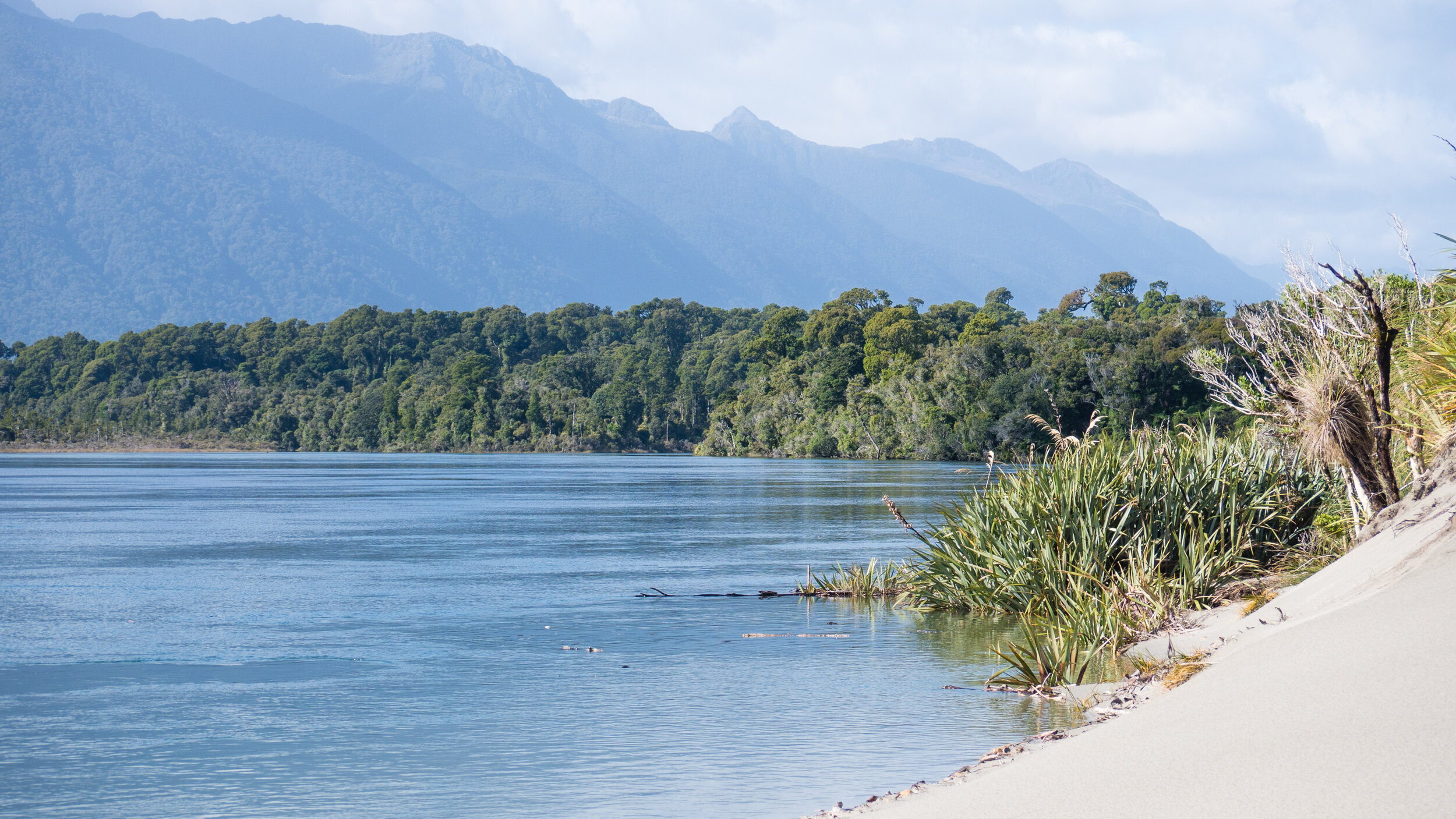
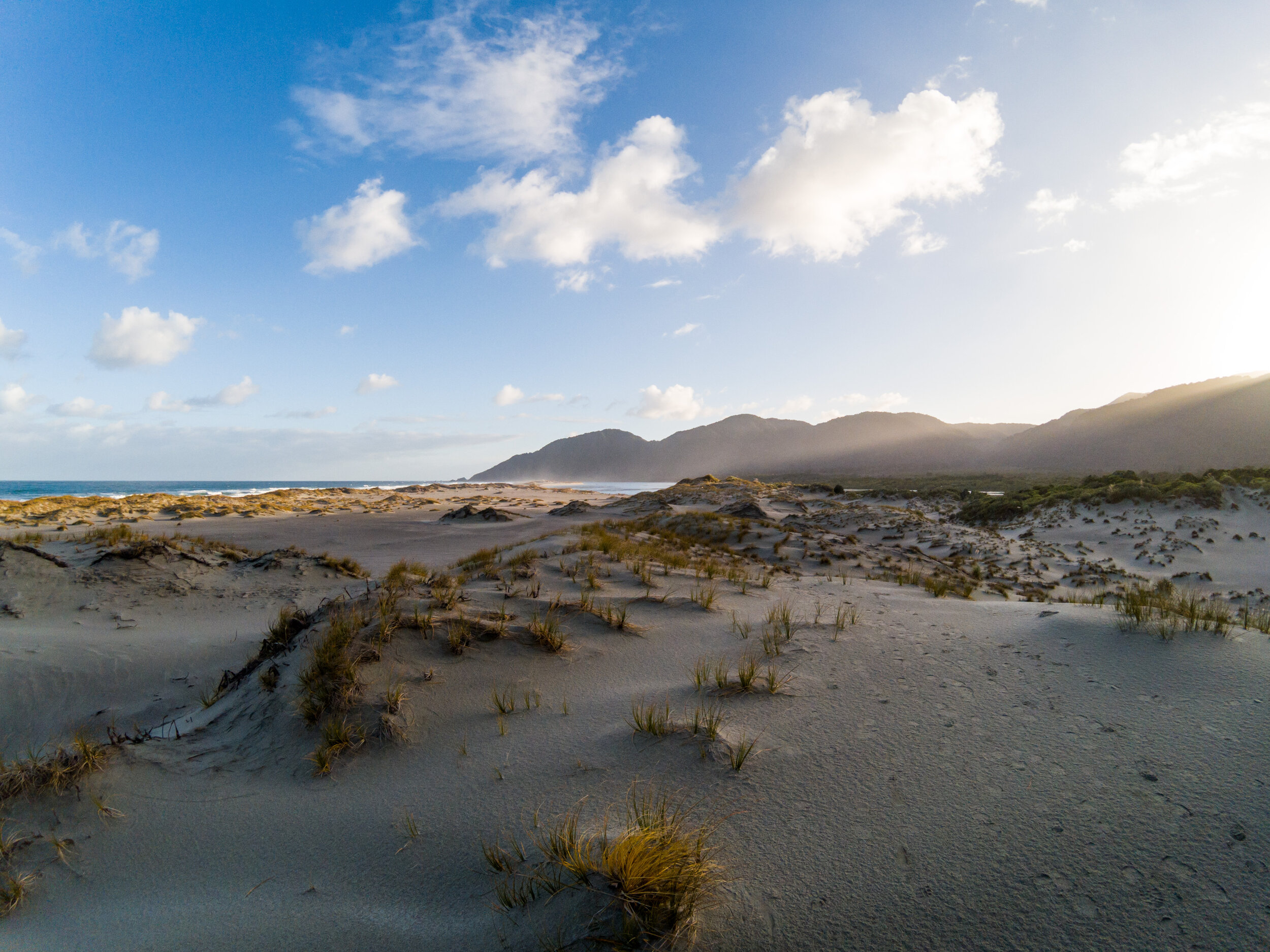
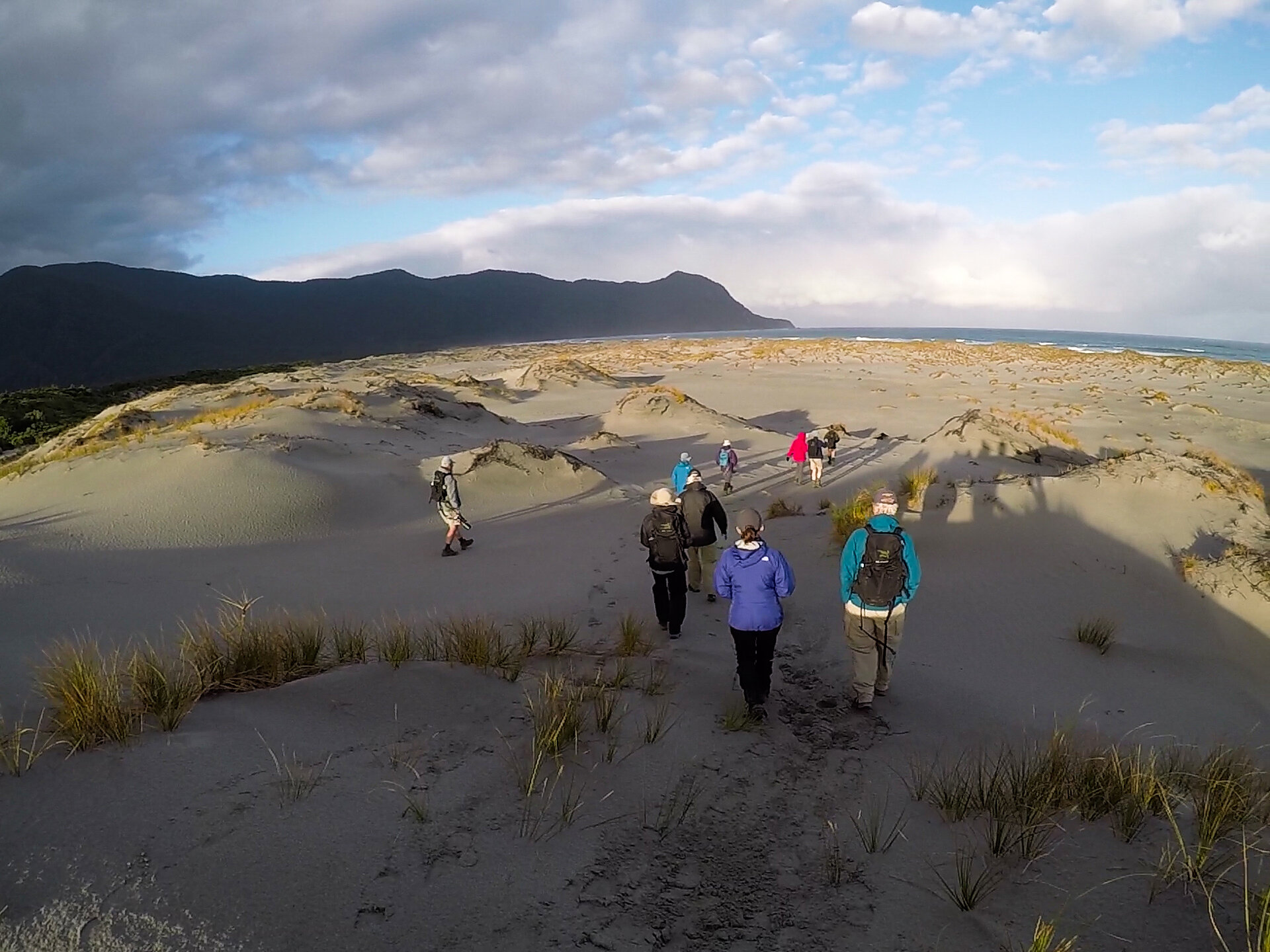
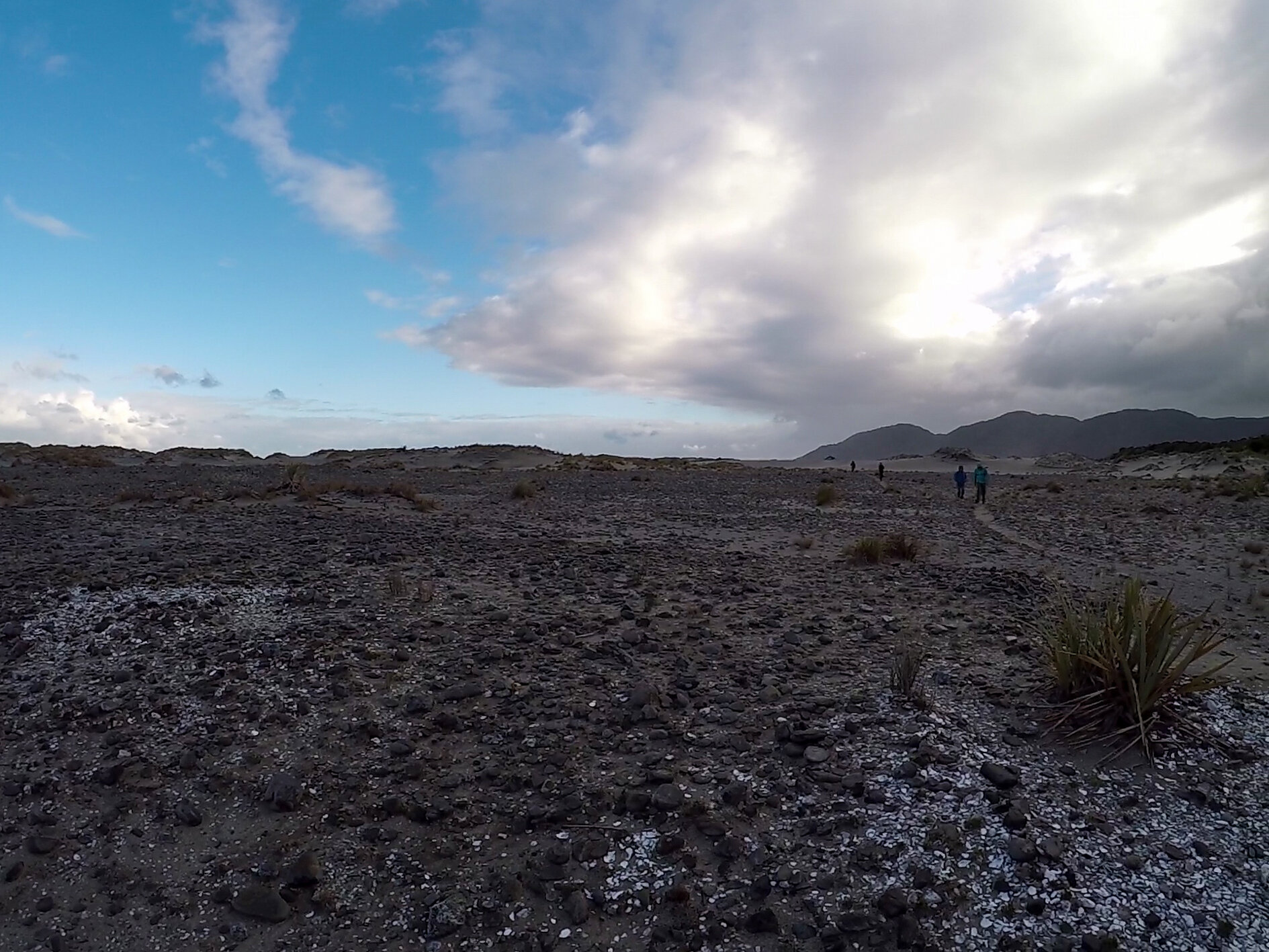
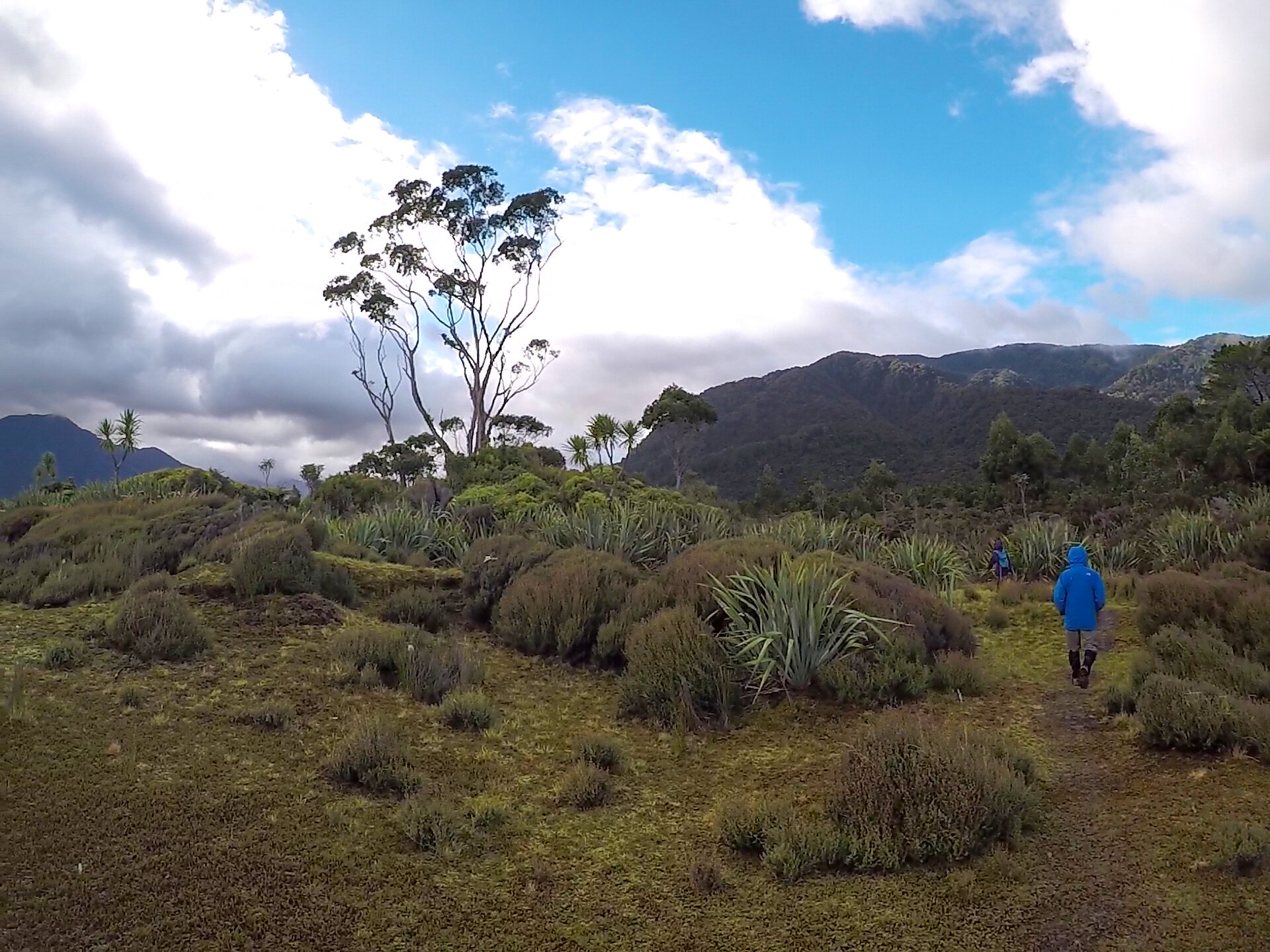
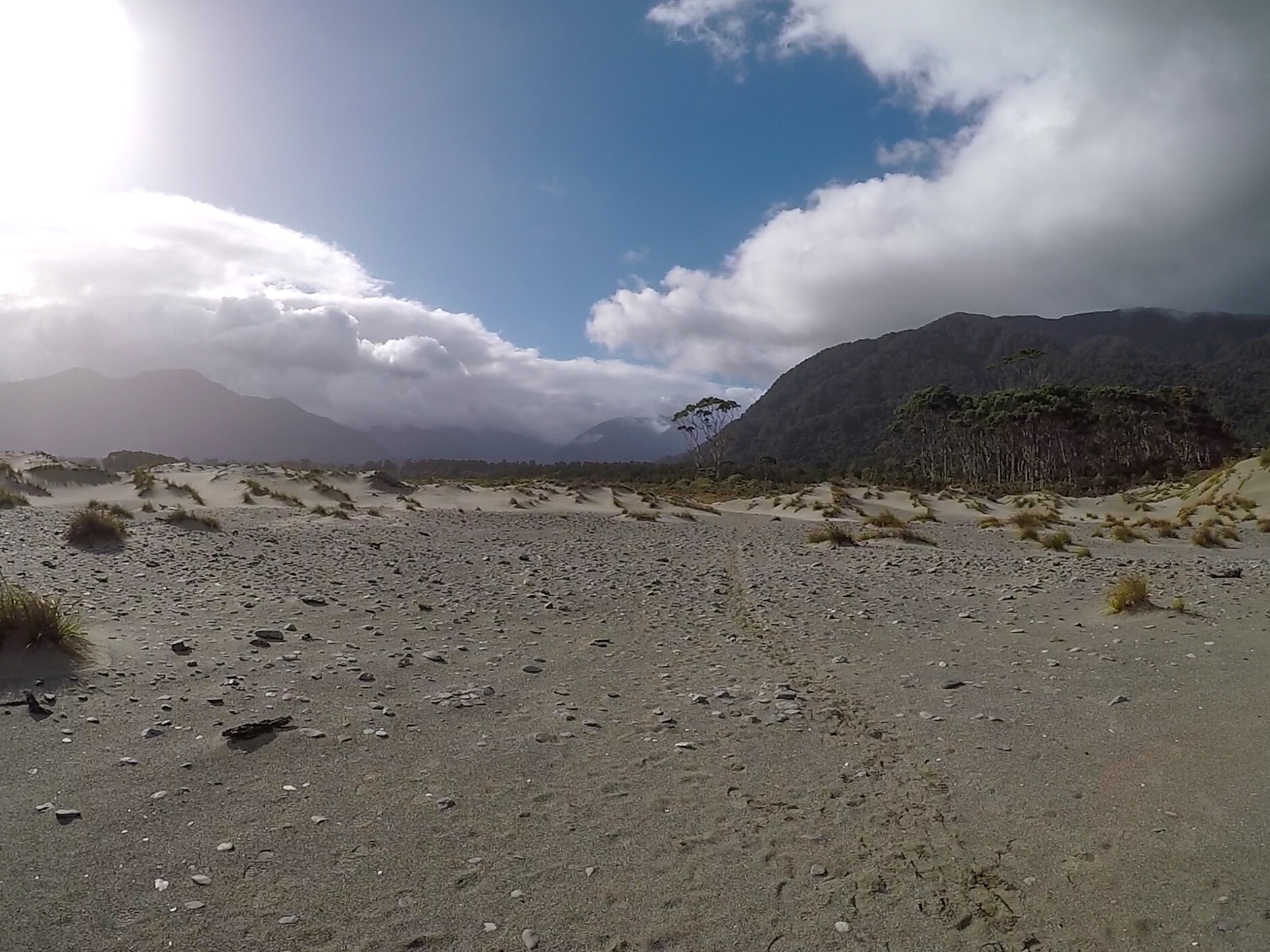
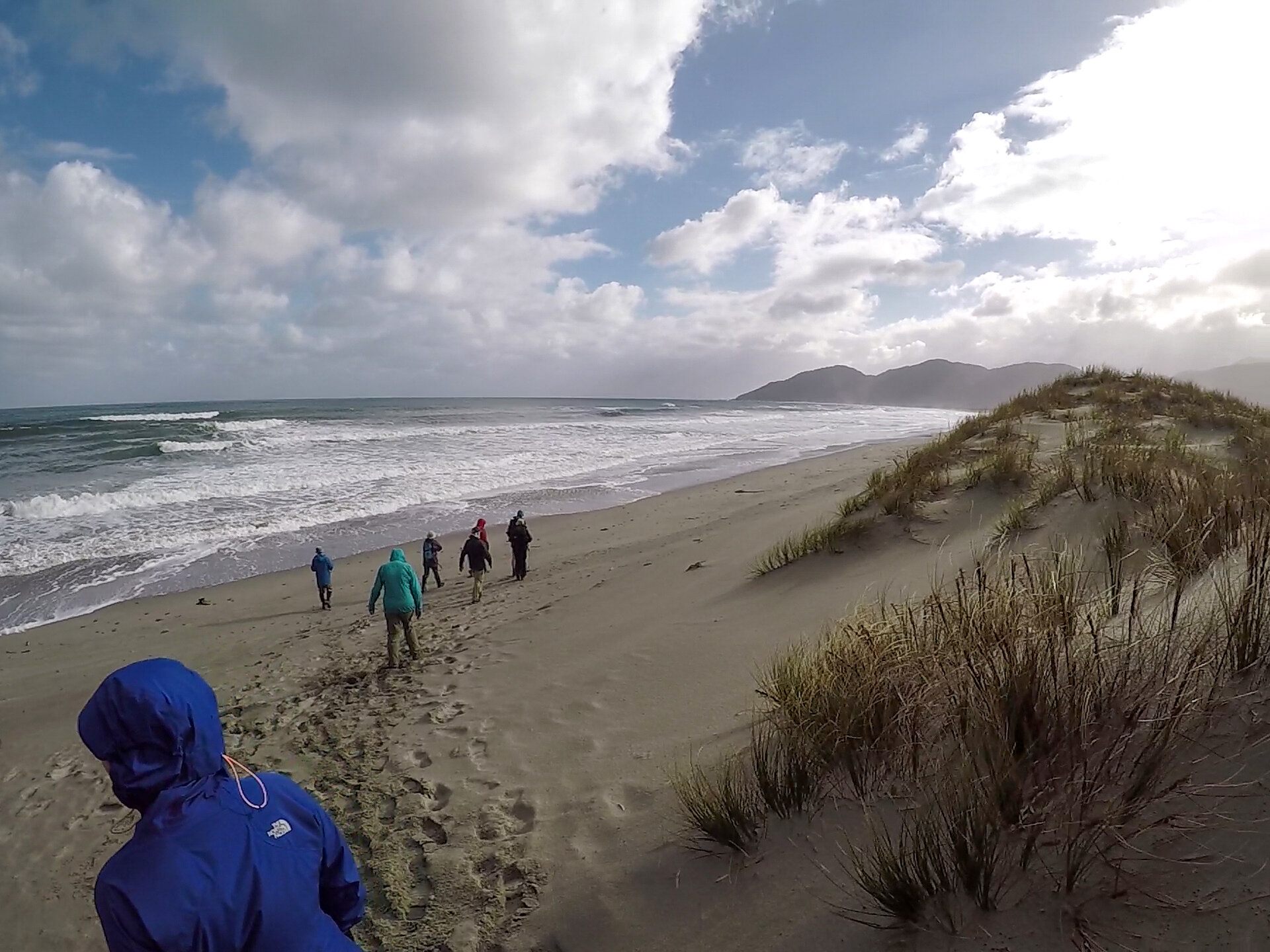
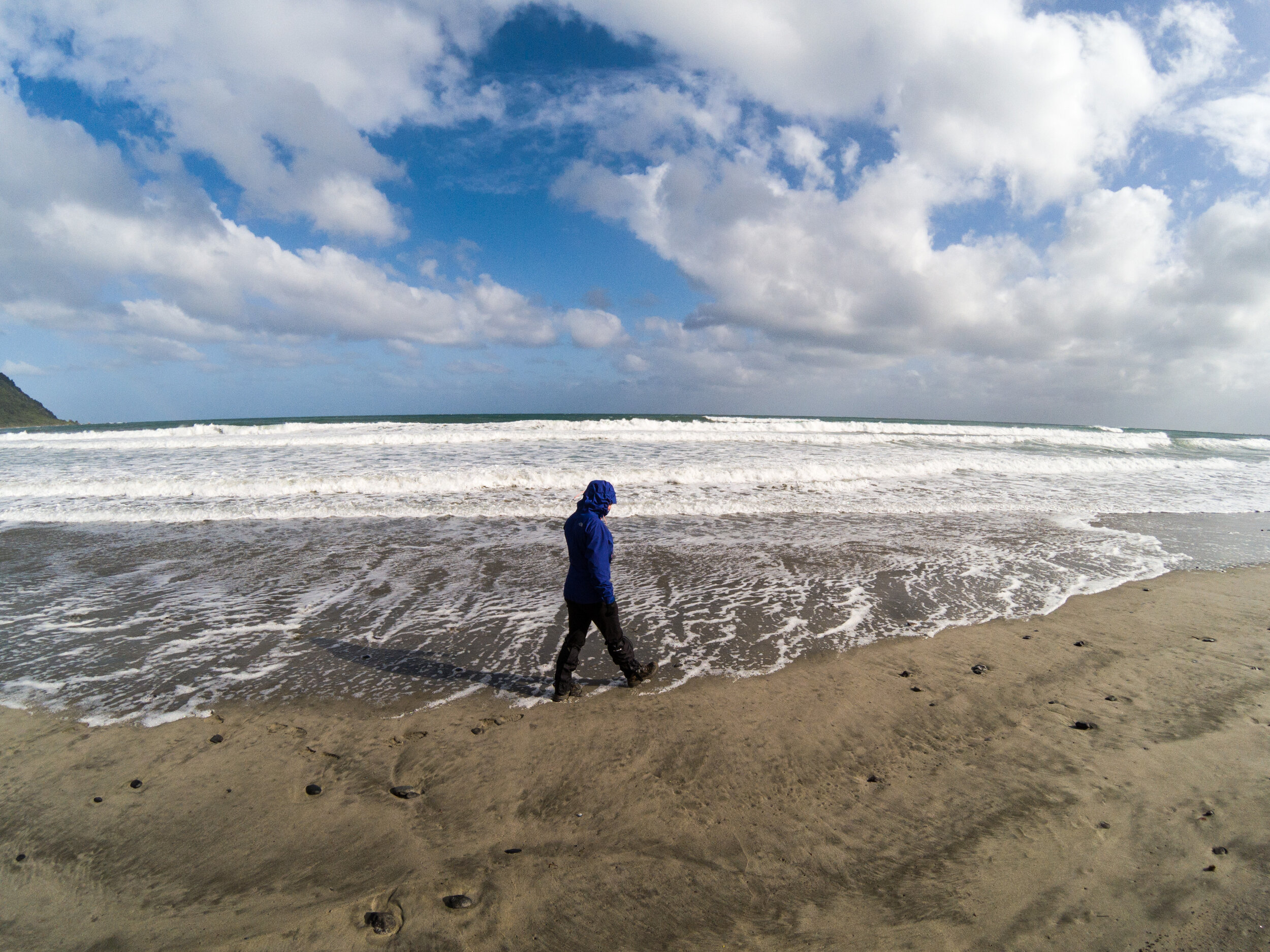
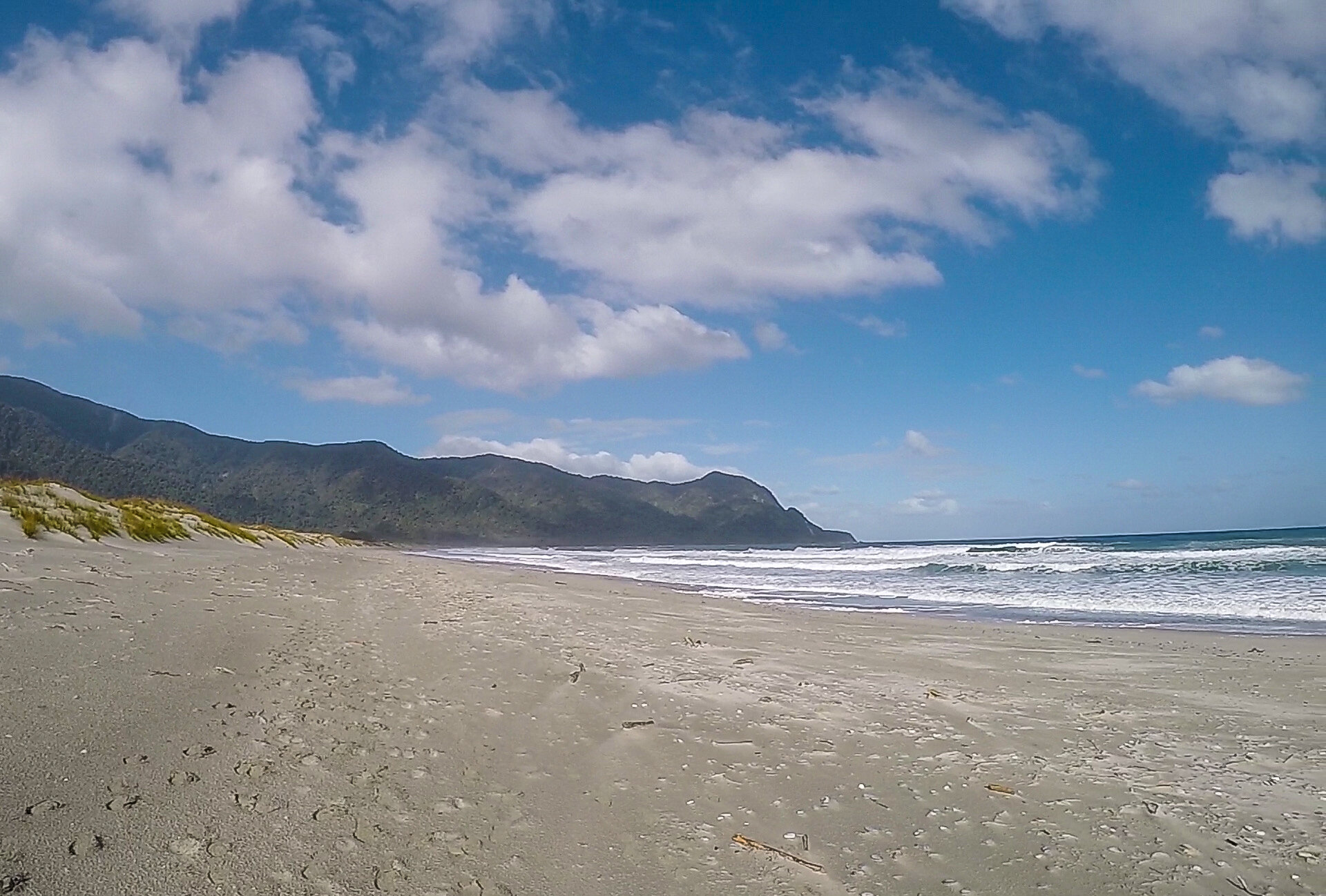
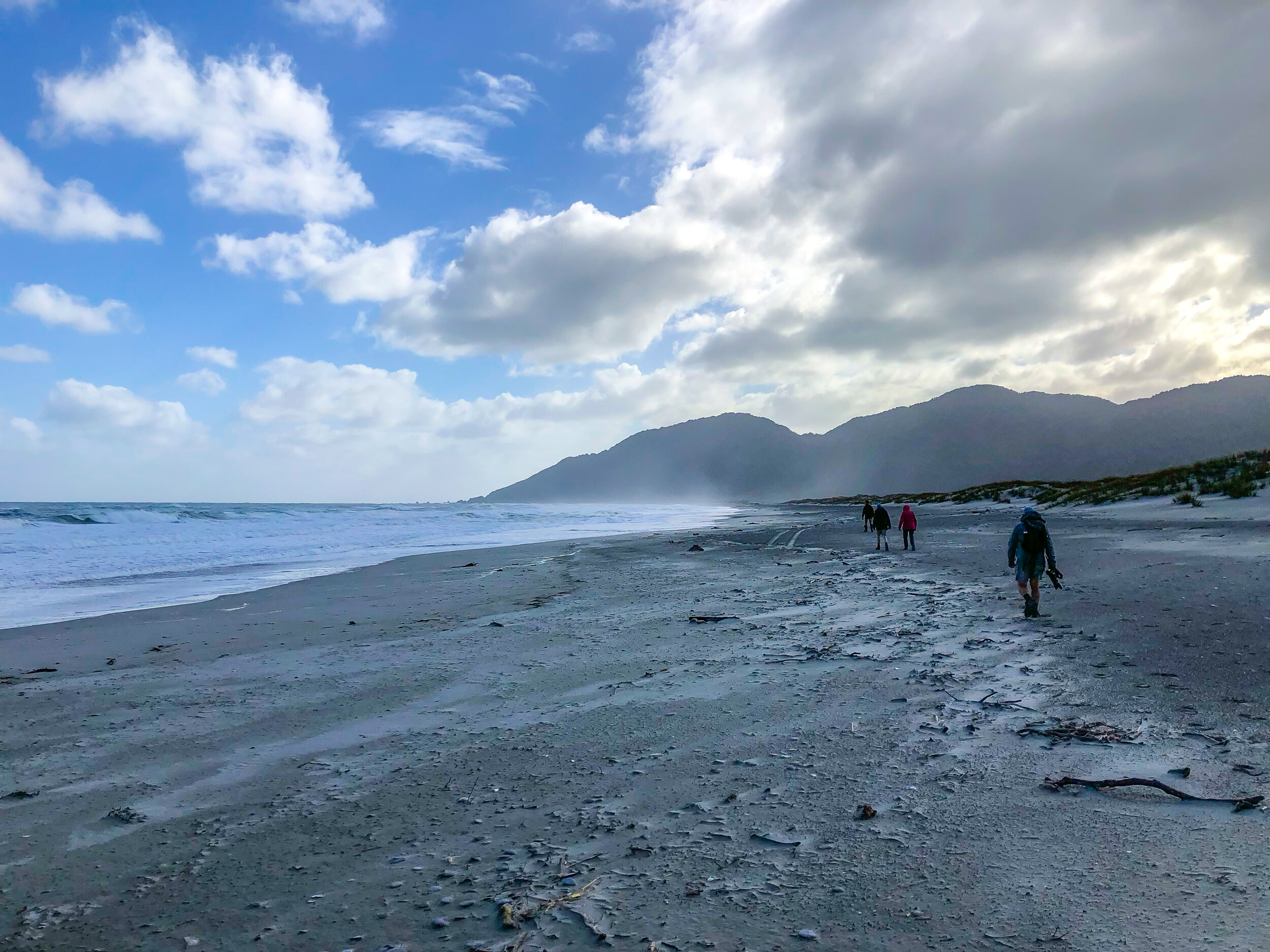
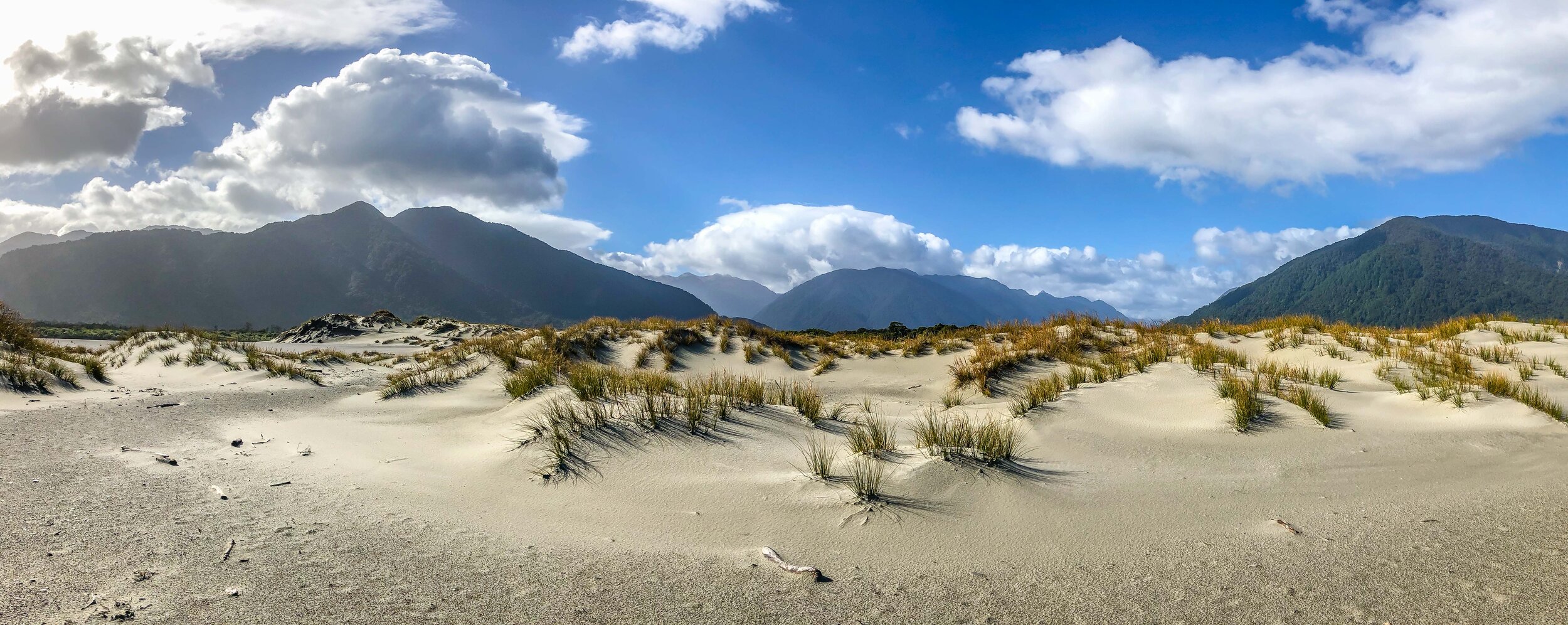
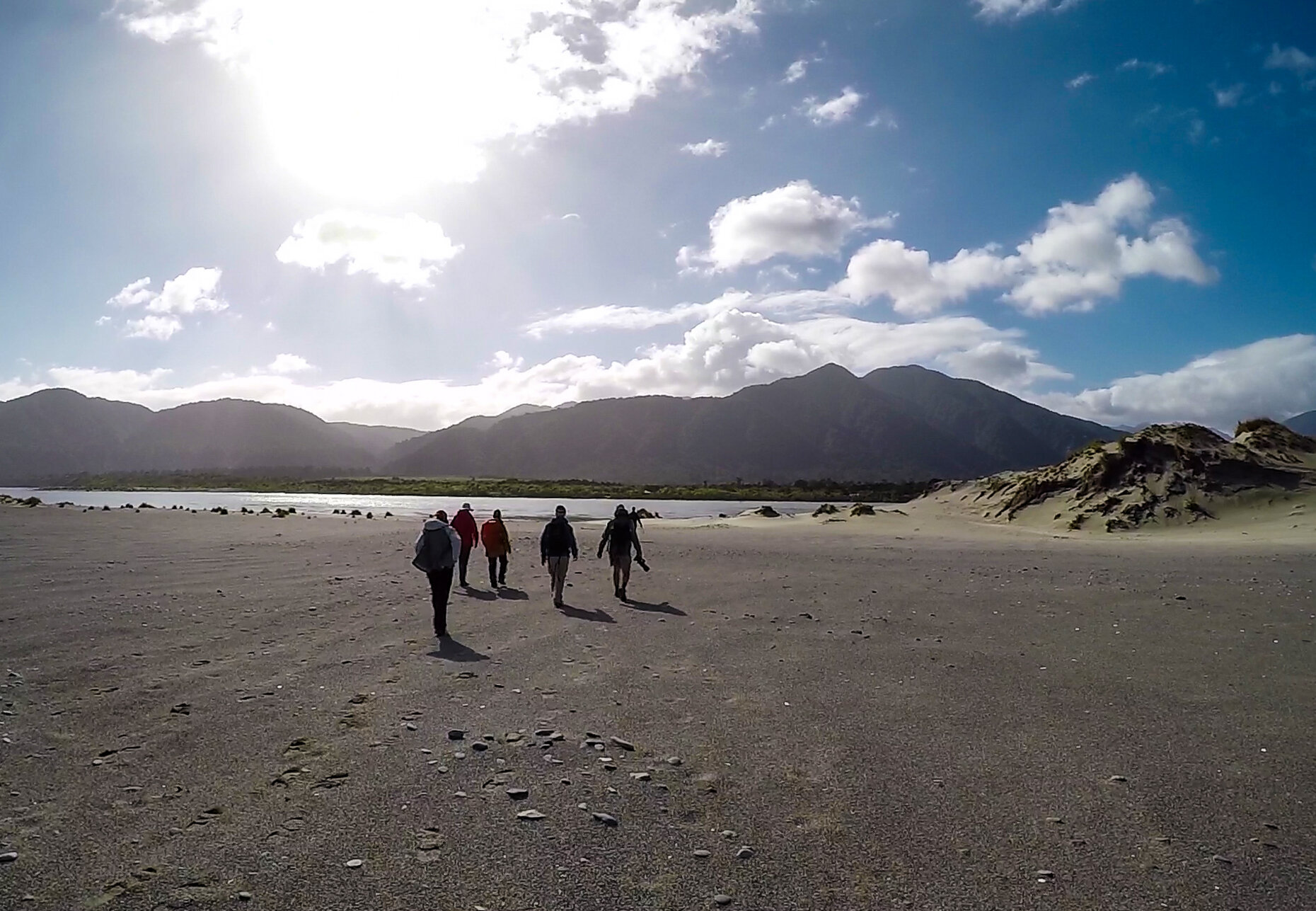
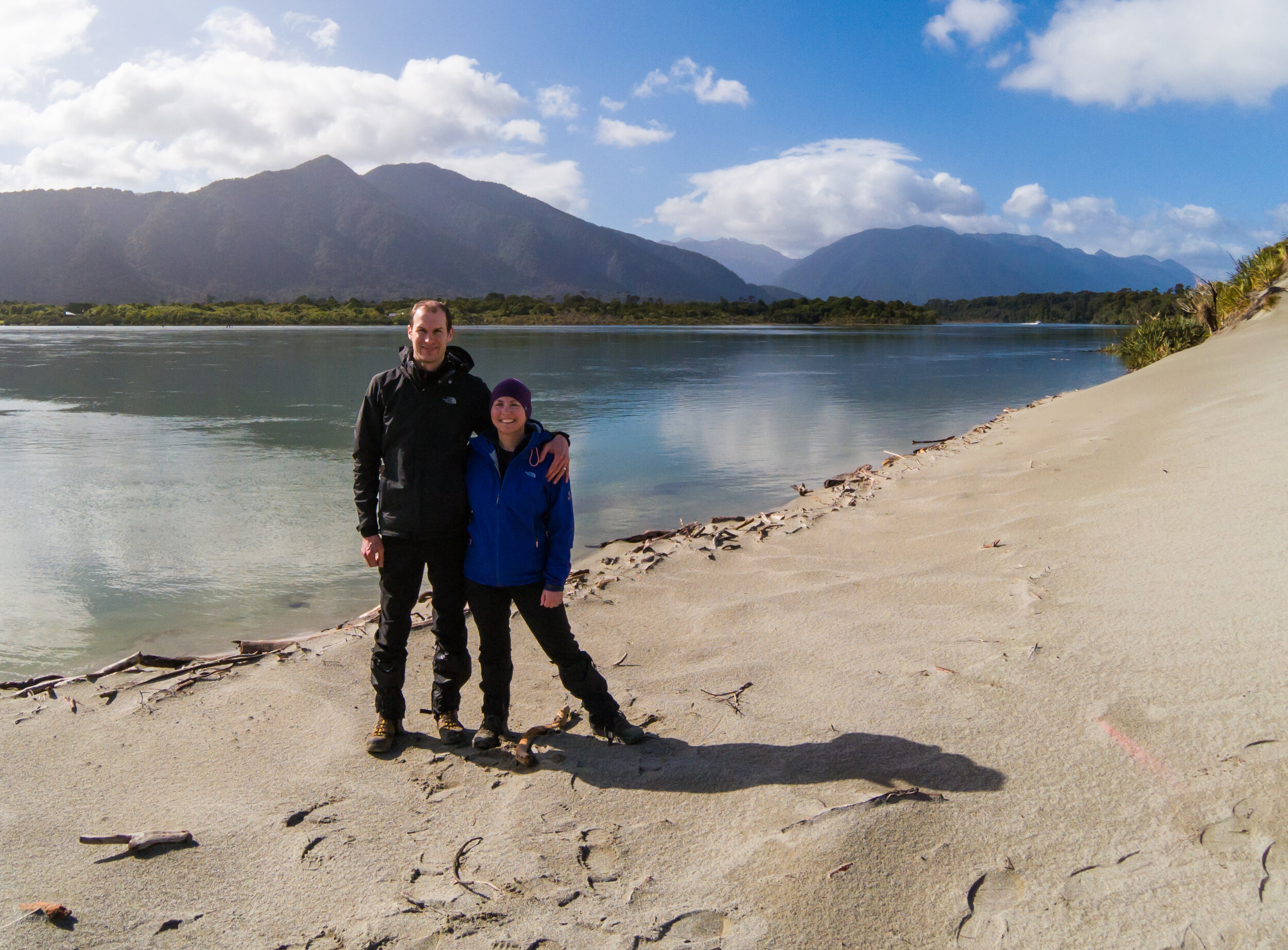
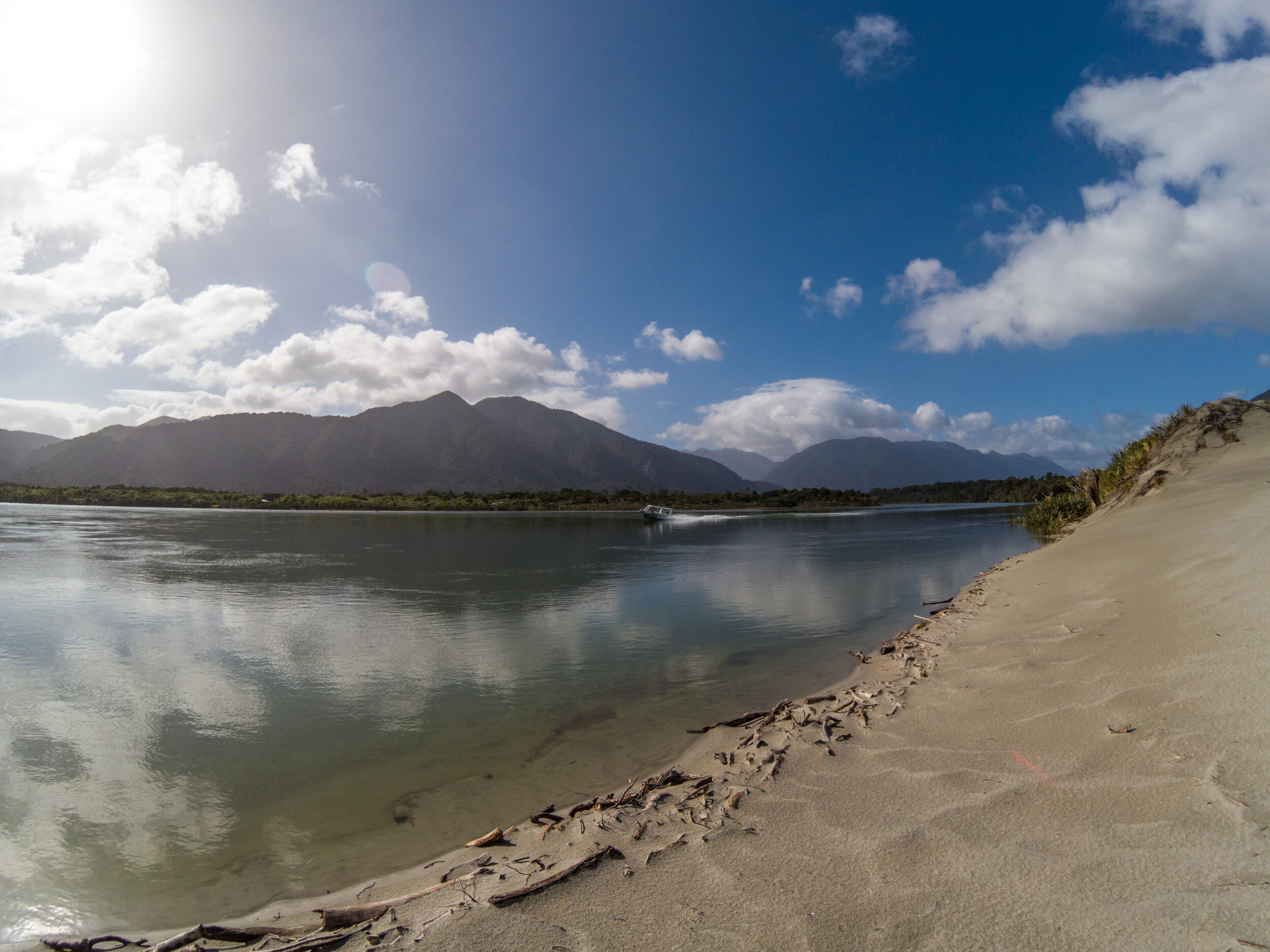
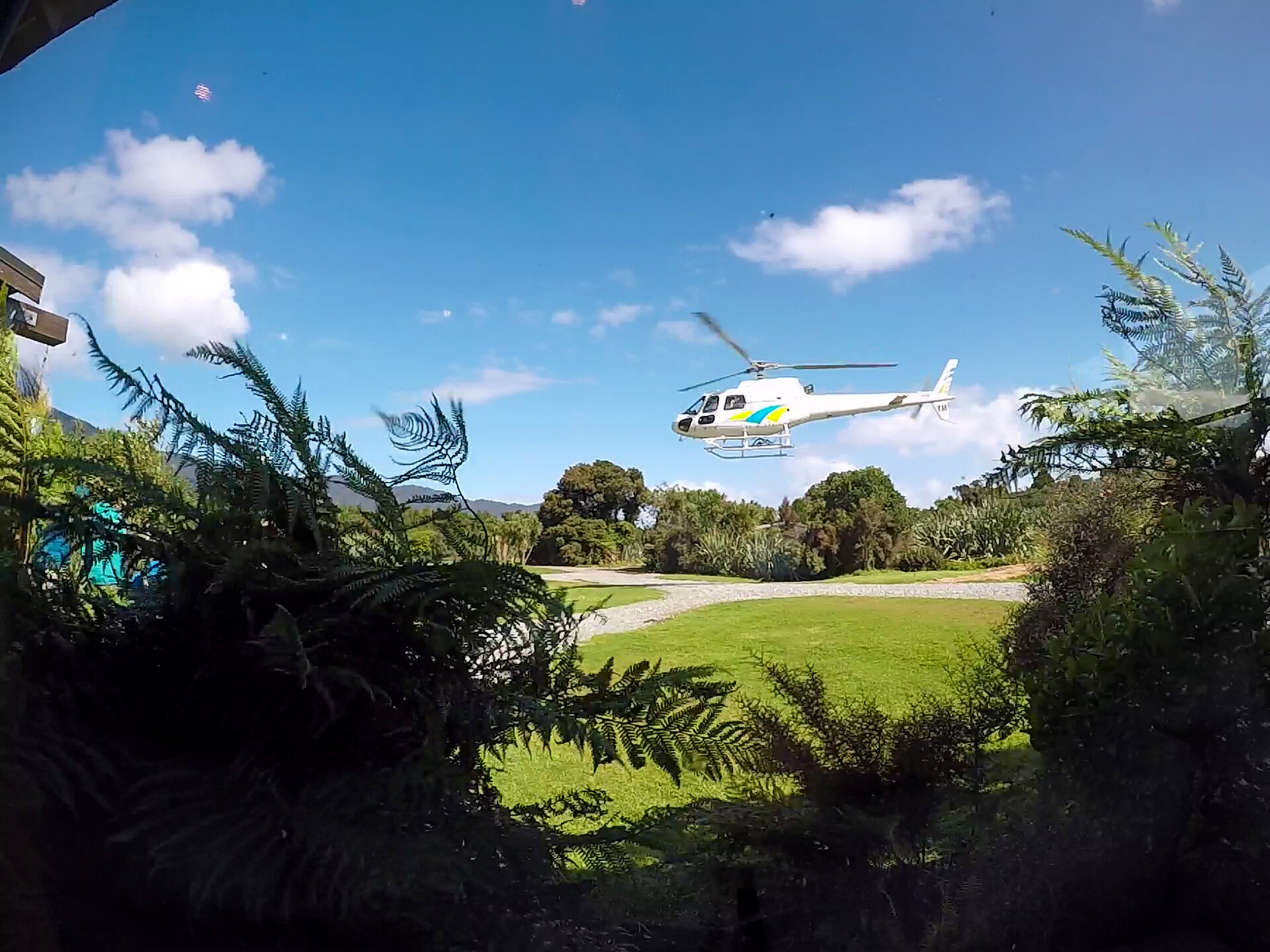
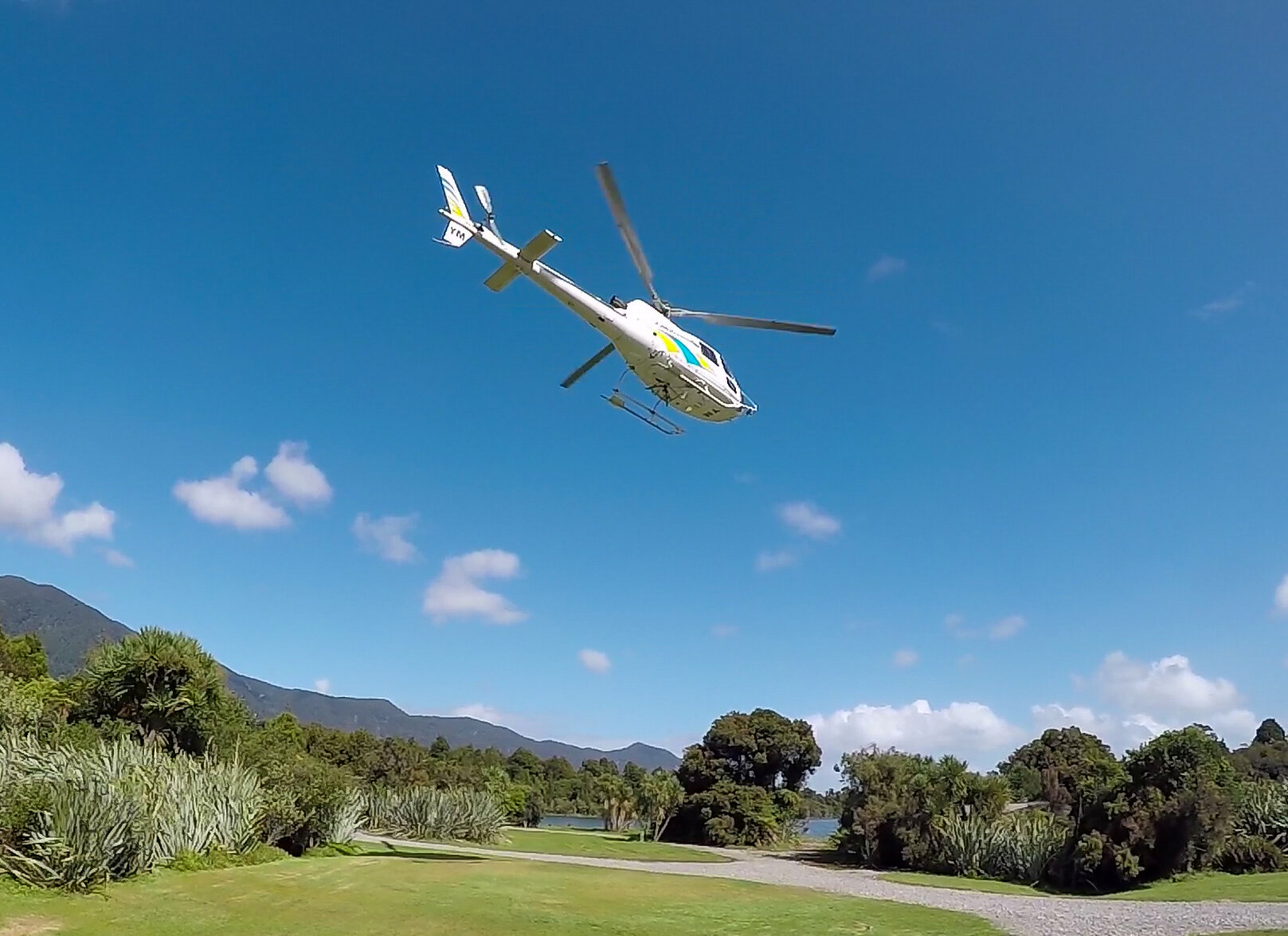


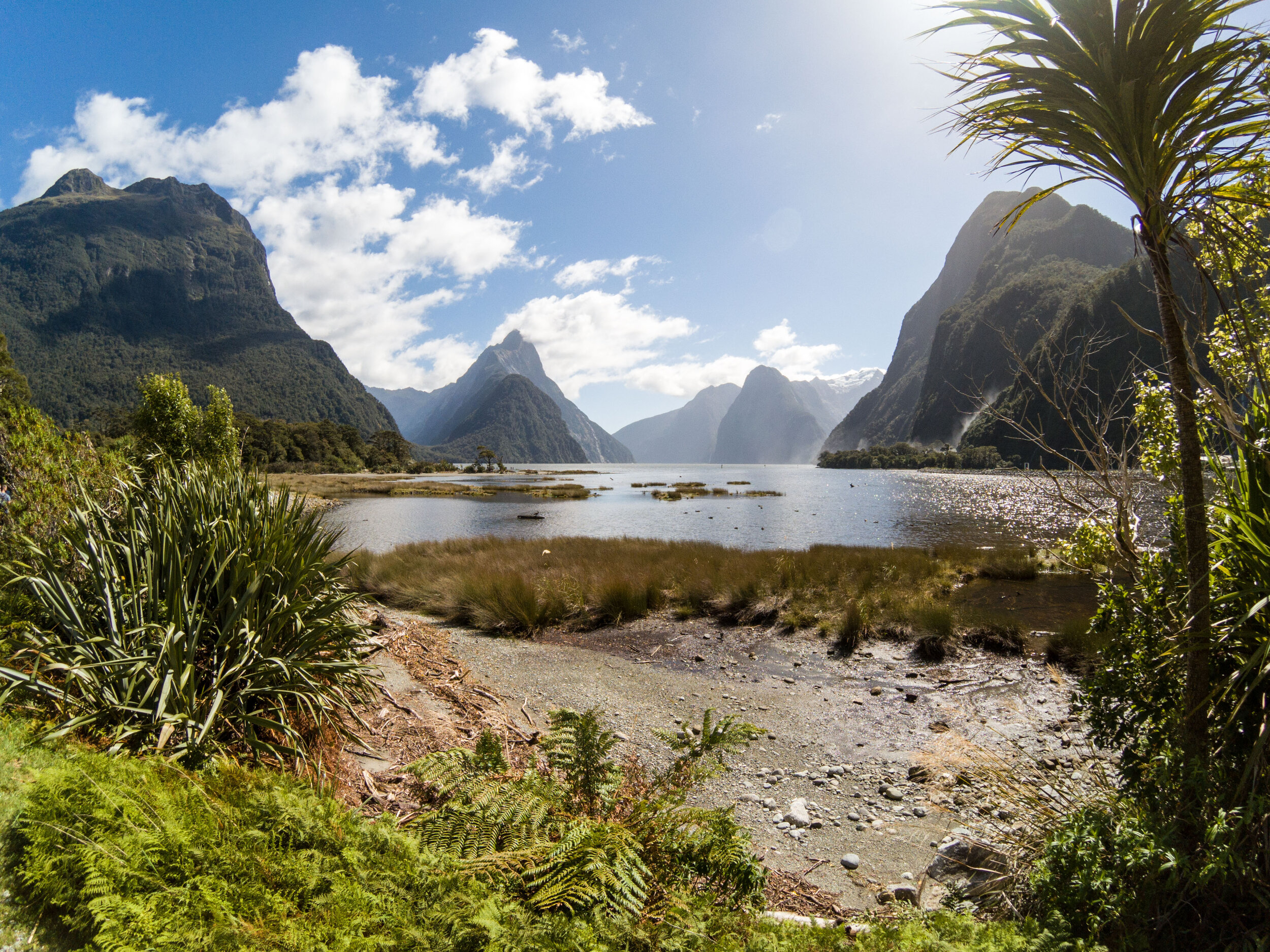

Our group of 13 with guides G and Stephan. There were three British couples, two Californian couples, a NZ couple and an Aussie.
March 2018

We were collected in Te Anau by bus and driven to the Road End via Gunn’s Camp. The 3-day trip would form a loop involving walking, jet boating and a helicopter ride. The routes around the Hollyford Valley, Pyke River and Big Bay can be walked independently, but is not for the faint hearted. We would have catered lodges to look forward to each night.

Main kitchen, dining & communal area. We had a delicious venison dinner, possibly the best meal of our whole trip.

Stephan took us to the river after dark which was swarming with eels. They would come out of the water to grab chunks of meat offered up to them.

After a short walk to Lake Alabaster, we’d board a jet boat to carry us down Lake McKerrow to the failed settlement at Jamestown, followed by a walk to the seal colony at Long Reef.

Behind Pyke Lodge there’s a memorial stone to national hero Davey Gunn, a pioneer bushman who ran horse riding trips along these routes in the 1930s. He became a national hero in 1936; following a plane crash a Big Bay, he raised the alarm in Queenstown, covering 90km in 21 hours on foot and horseback. He drowned in the Hollyford River in 1955.

This leads across the the Demon Trail, the path that leads along the northern bank of the river, then Lake McKerrow. We would only cross and then return the same way to experience the bridge and the views.

With trampers and packs loaded, we set of down the river to join Lake McKerrow. Like all jet boat rides, it was fast, noisy, thrilling….and we all got a little bit wet.

Just off the beach in the bush is the failed settlement of Jamestown. Established with the promise of good agricultural land and imminent infrastructure, the pioneers found dense forest and not much else. Connected to civilisation by periodic ship deliveries, the promised road never materialised. After only 10 years the town was abandoned the forest reclaimed the land once more.

We walked from this point though the dense podocarp forest with native Rimu, Totara and towering tree ferns

This huge sacred tree is though to be nearly 200 years old and provides a home to myriad smaller plants, ferns and wildlife. Once heavily farmed, these endemic tree species are now protected, as their slow growth rate makes any commercial industry impossible.

After exploring Martin’s Bay we’d board a helicopter and fly into Milford Sound, before being driven back to Te Anau.

This brief journey tales us across to the dunes - there are no bridges to the beach

We spent an hour or so walking south, then retracing our steps. The weather constantly changed; between blue skies we had a rain shower. It all added to the blissful remoteness of the place.

The white shells are evidence of historic Maori settlements here. Little physical evidence remains. It was unlikely the area was well populated. Chief Tutoko controlled the passage of precious greenstone from the river valleys.

We entered the bush to find the remains of a western settlement, home to the McKenzie pioneer family, who kept cattle in this area around the turn of the 20th century.

We flew over the dunes and the beach, south down the coast passing Yates Point.

Captain Cook missed the entrance to Milford Sound, our pilot had no trouble. In perfect conditions we saw the tiny cruise ships below and the huge waterfalls from the hanging valleys above this epic fiord.